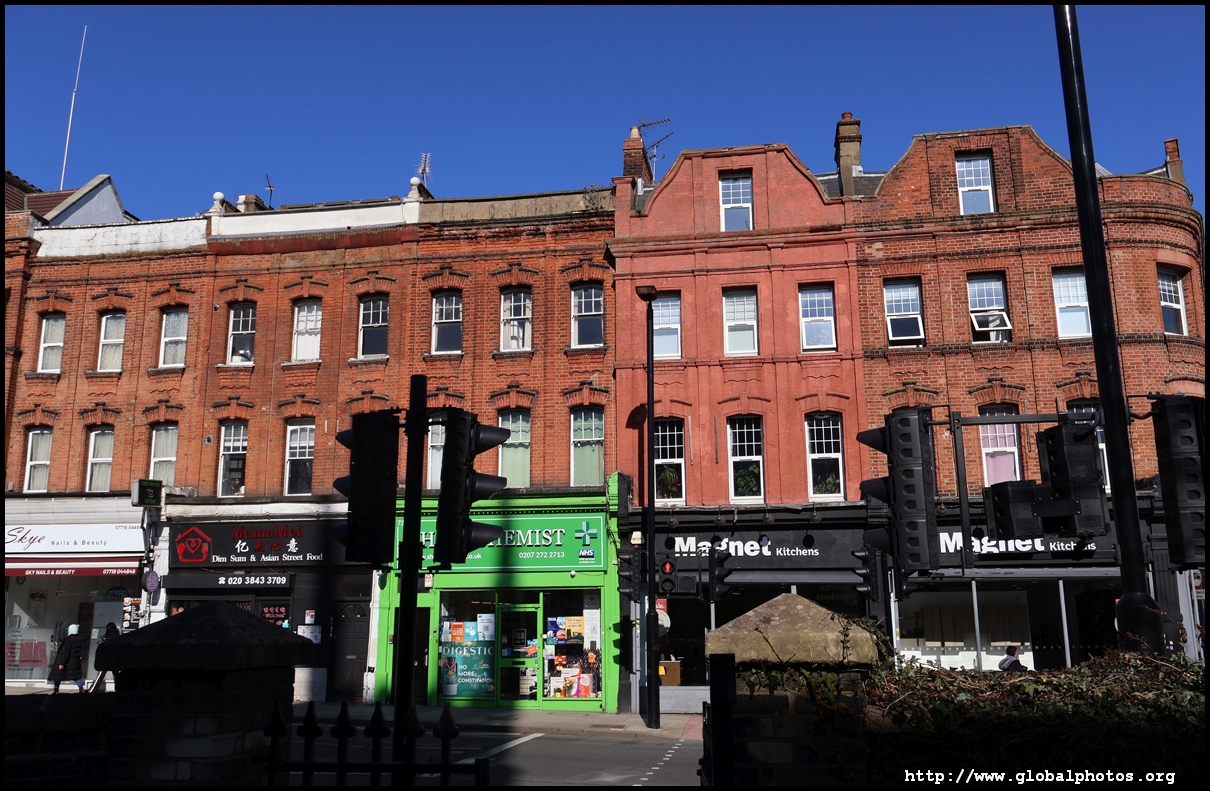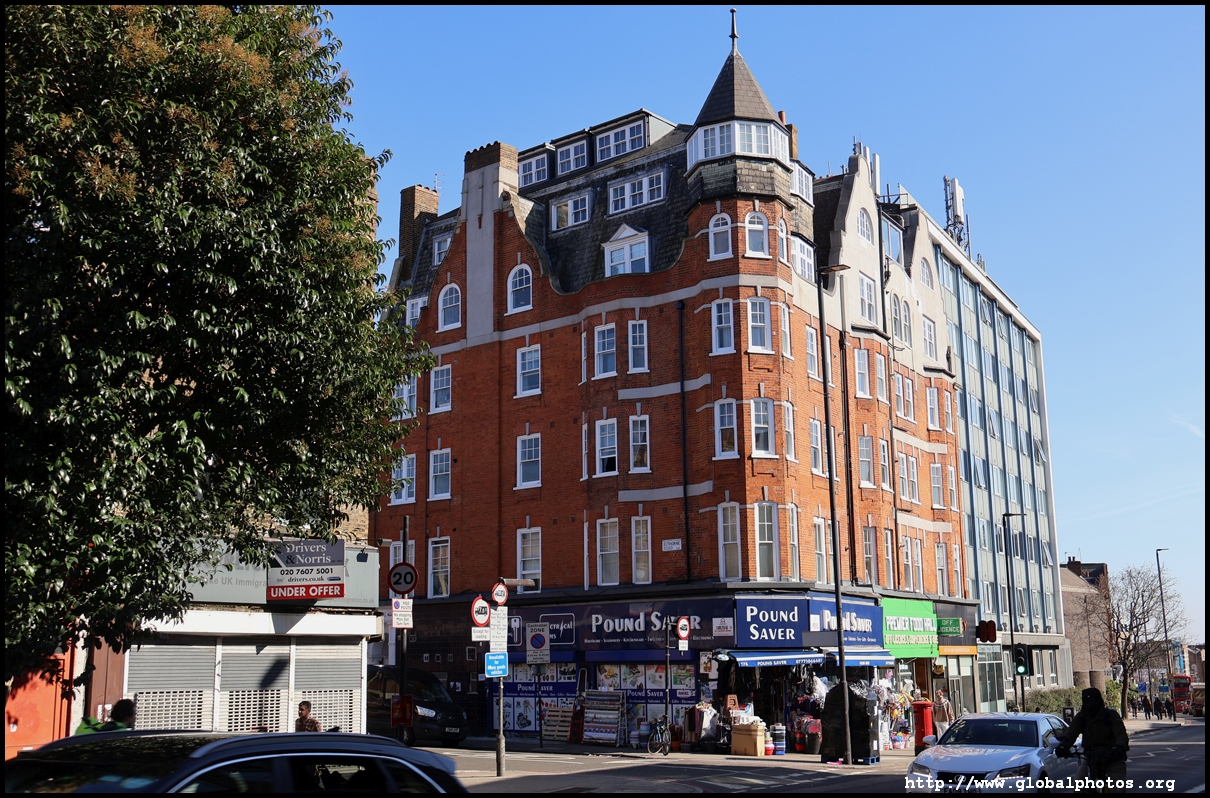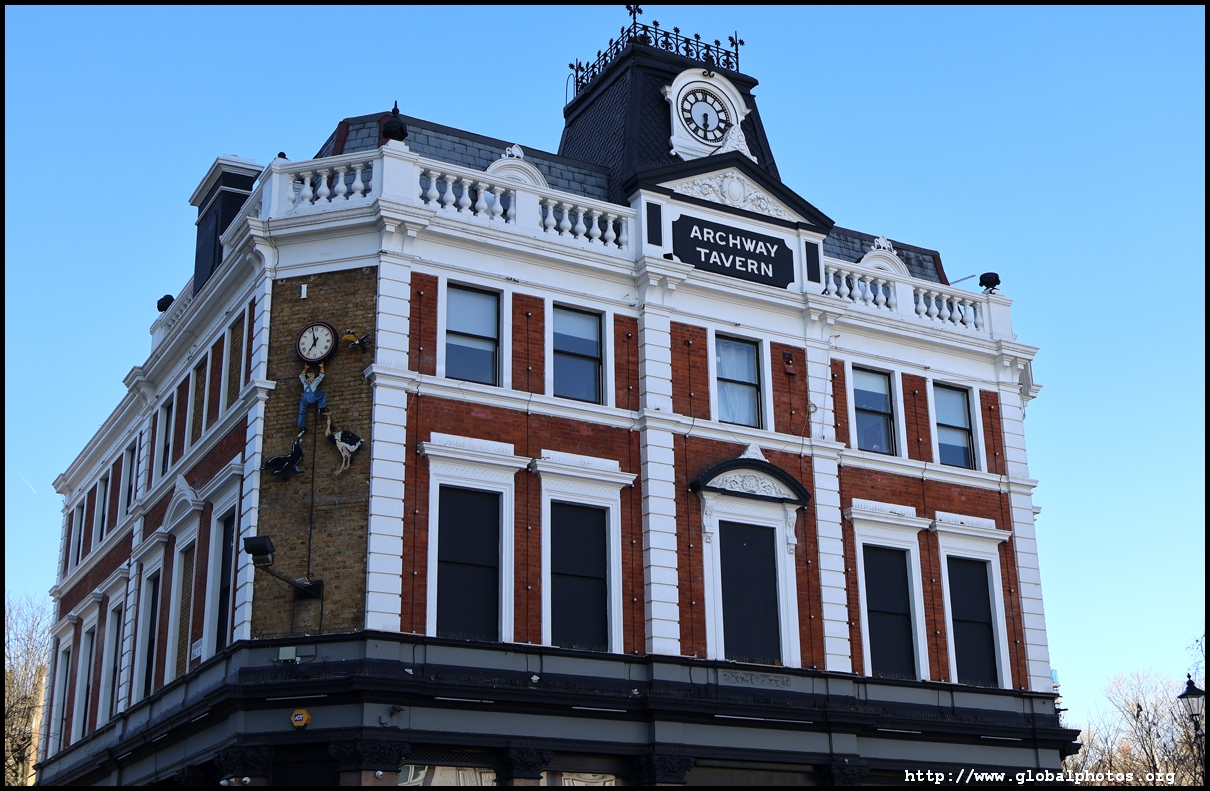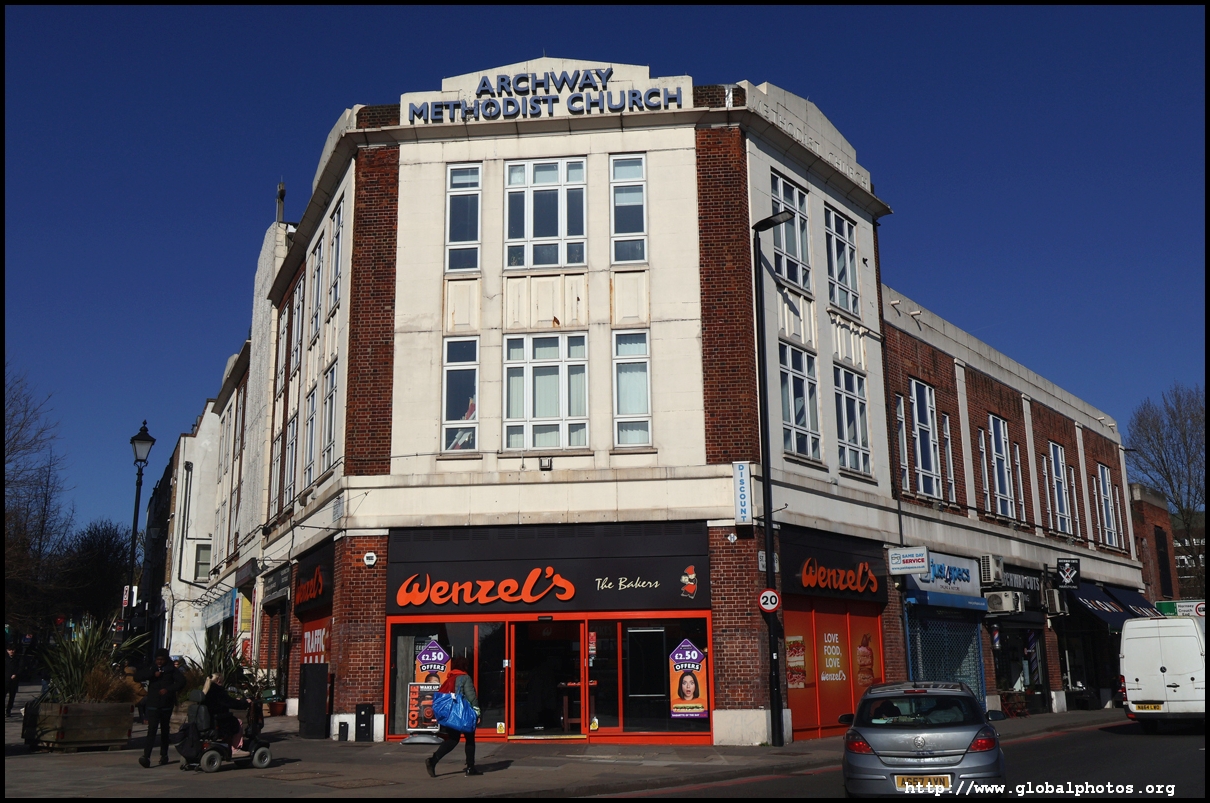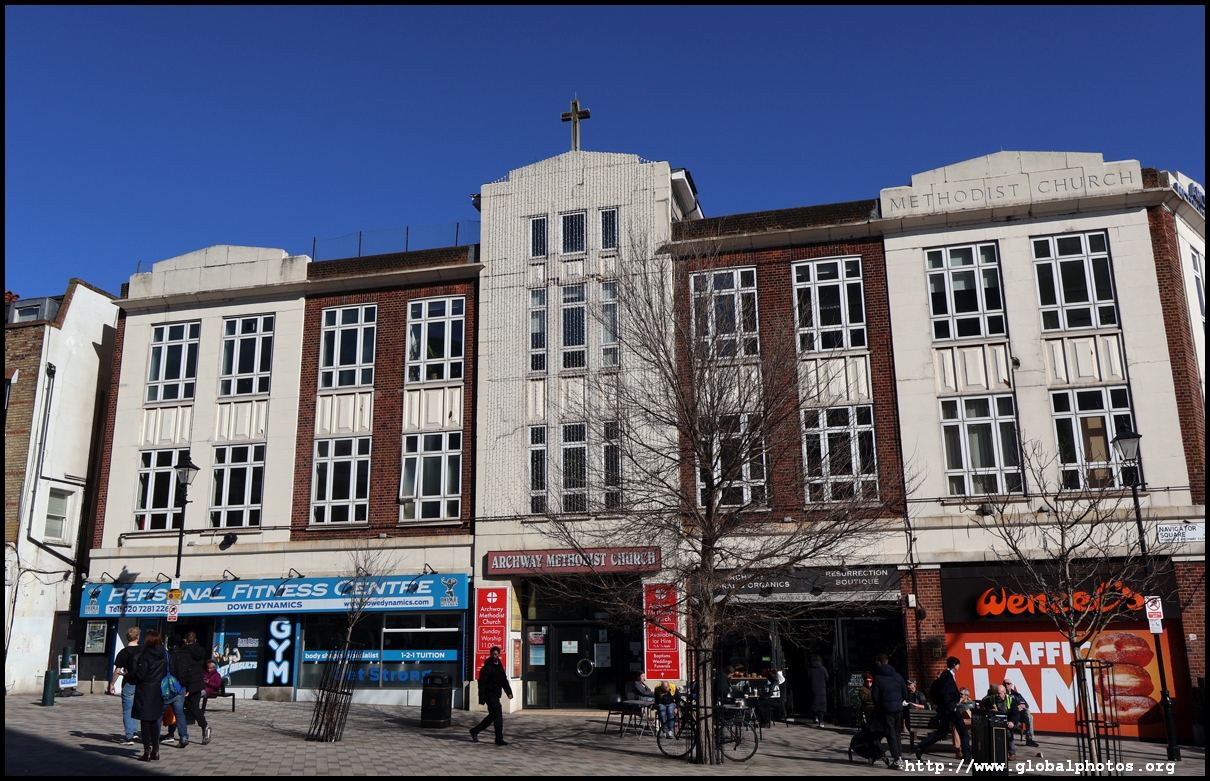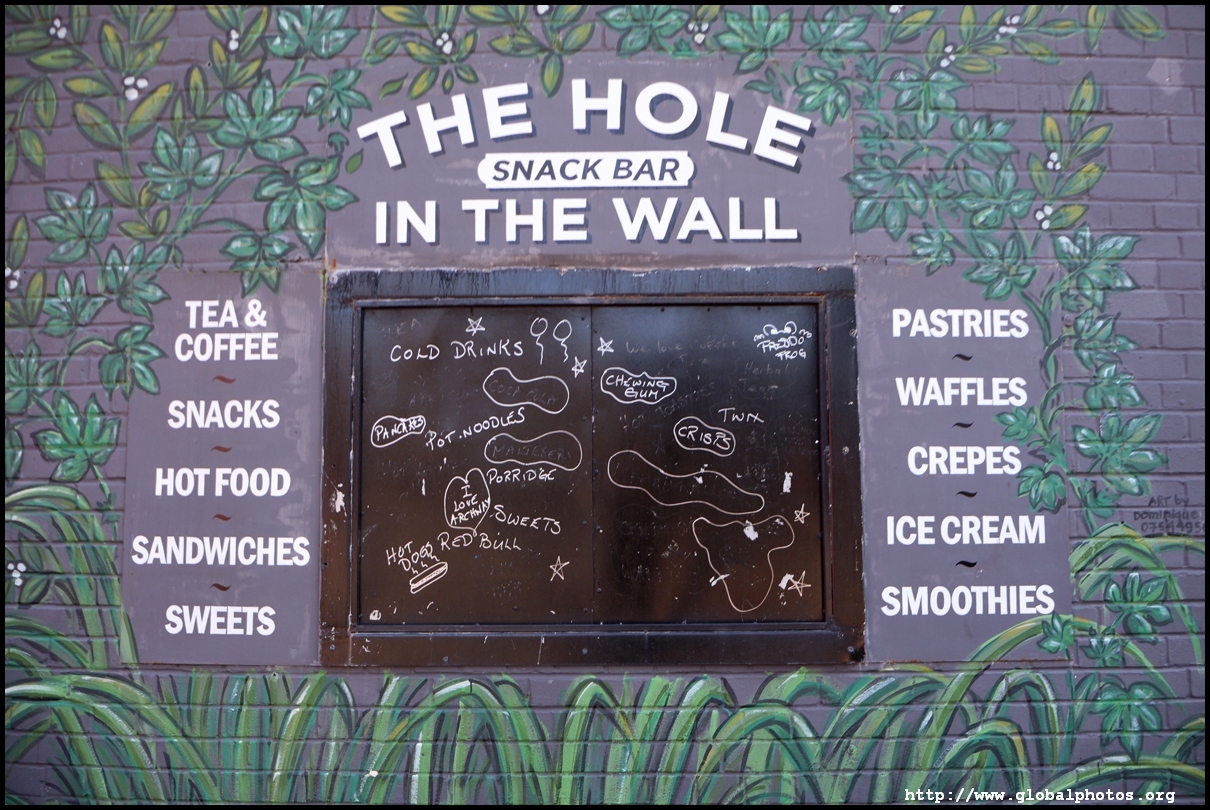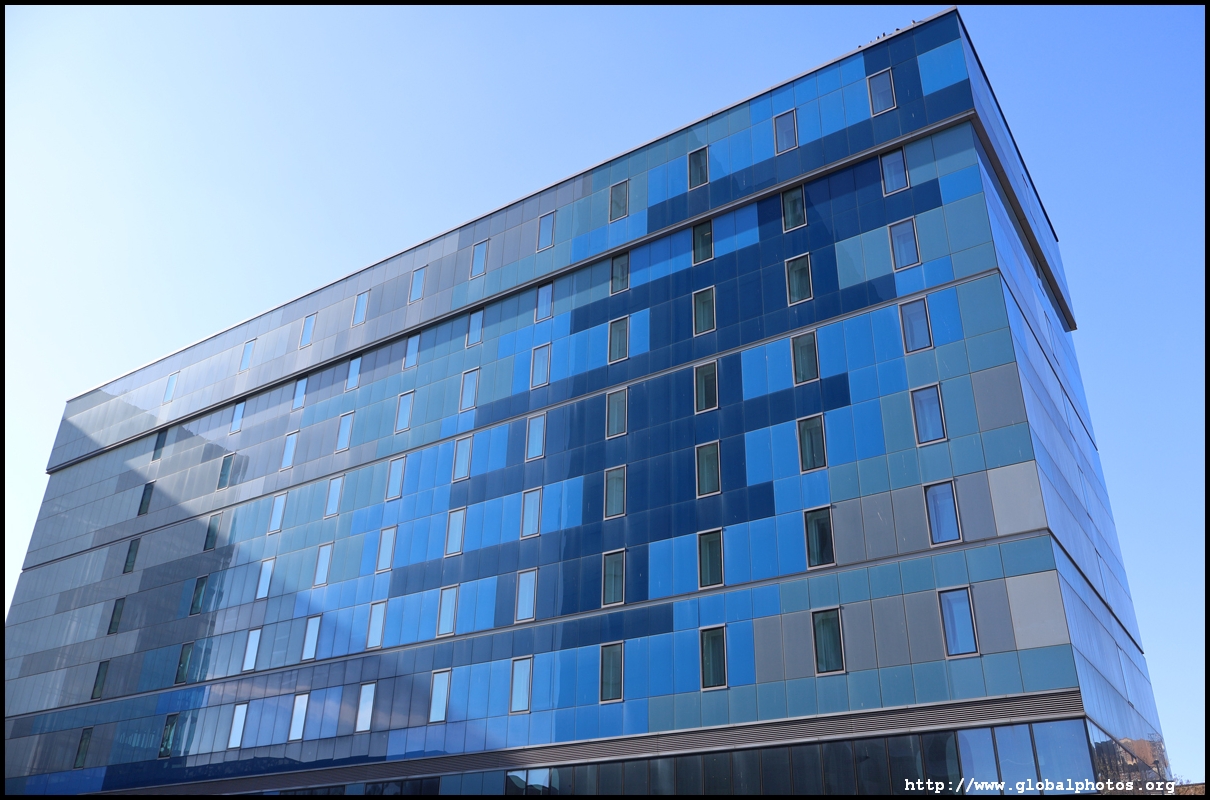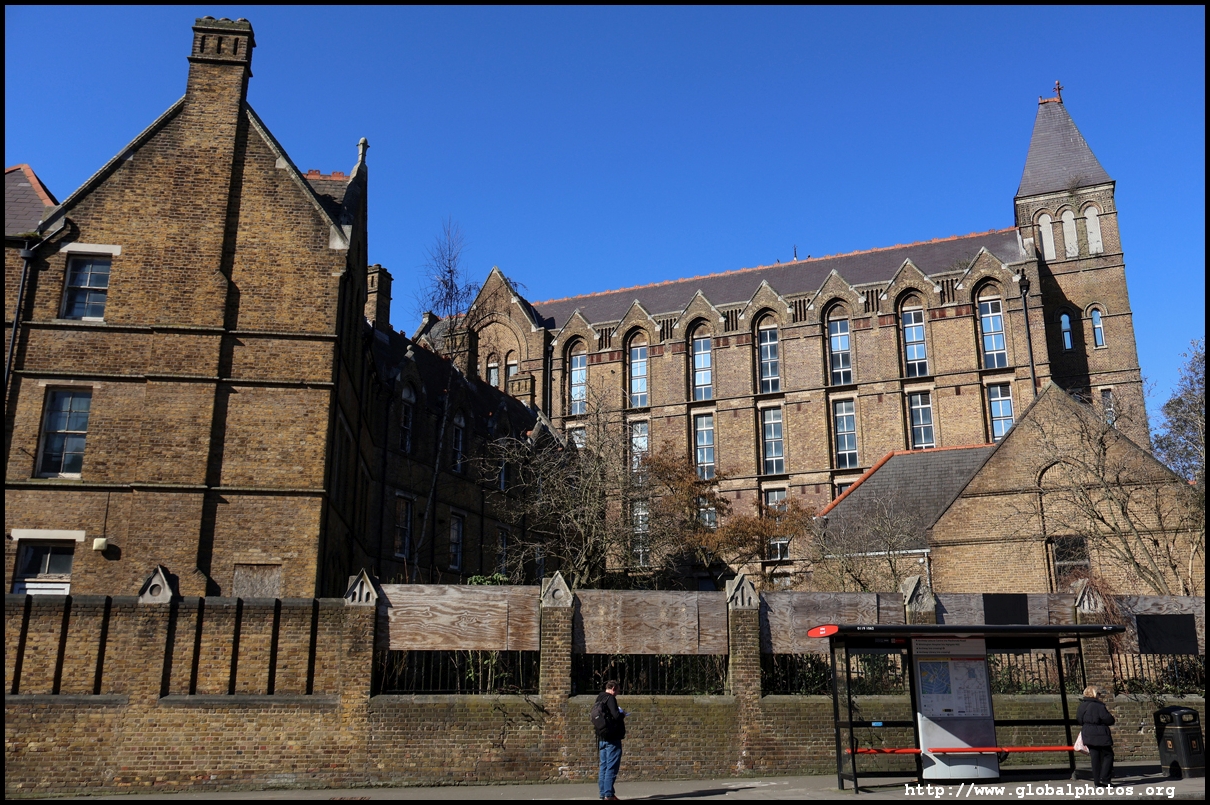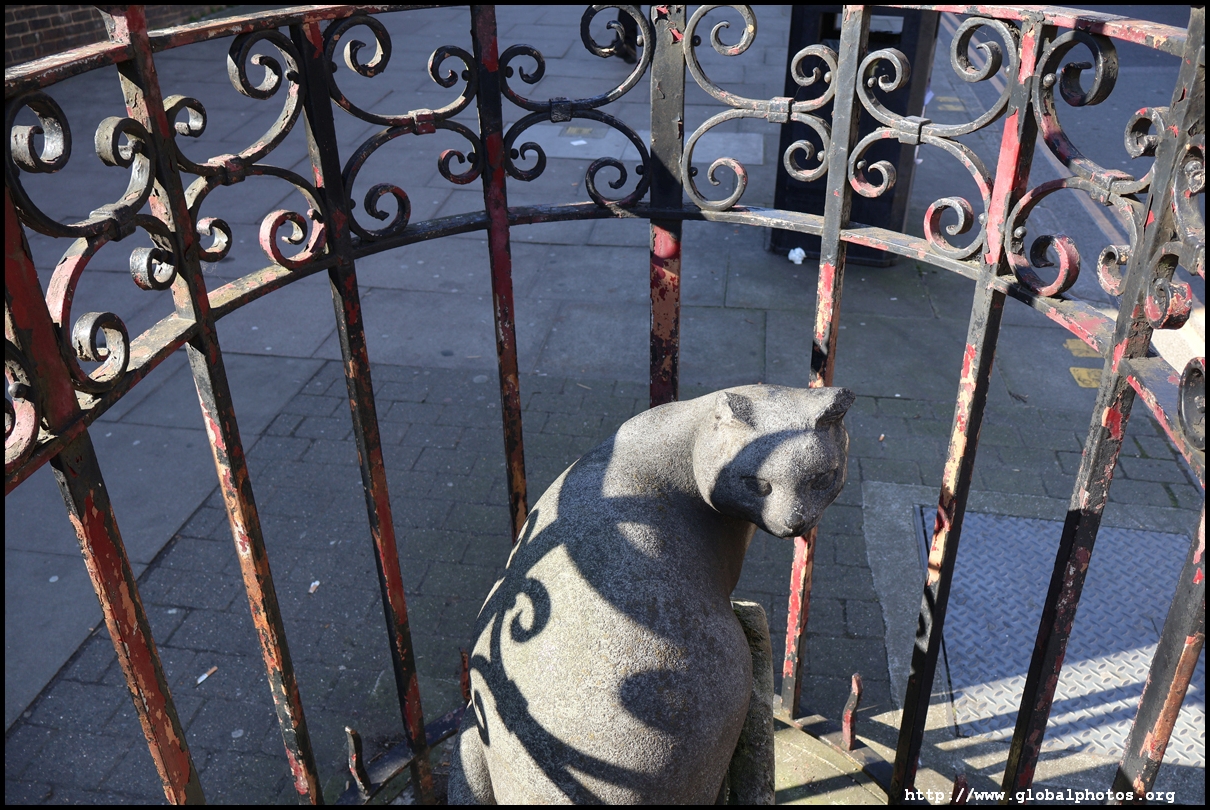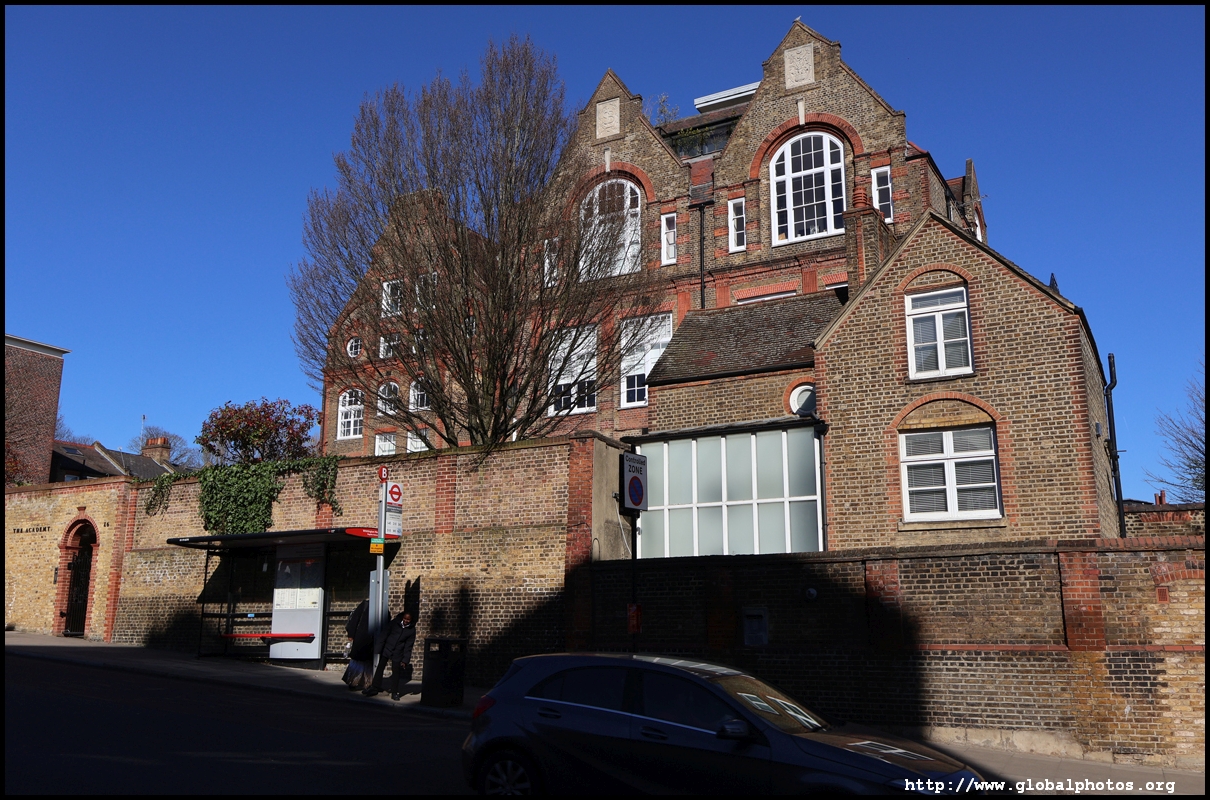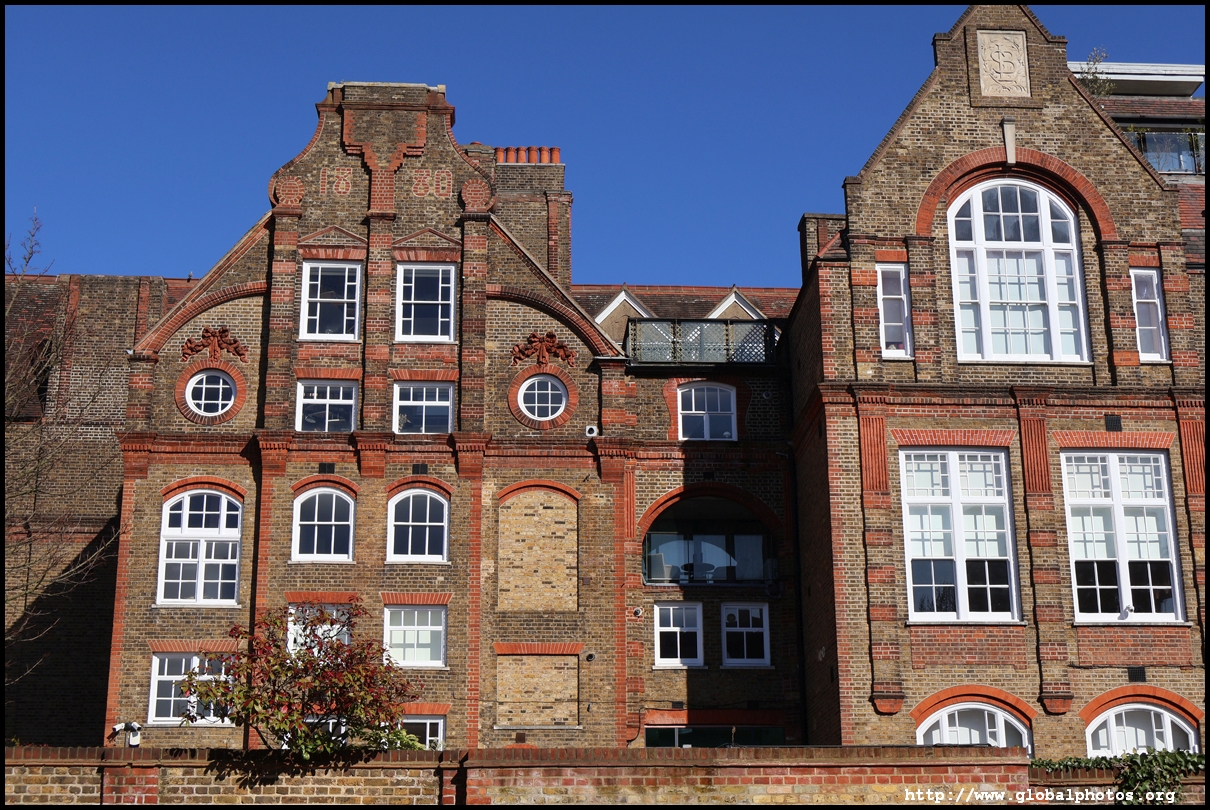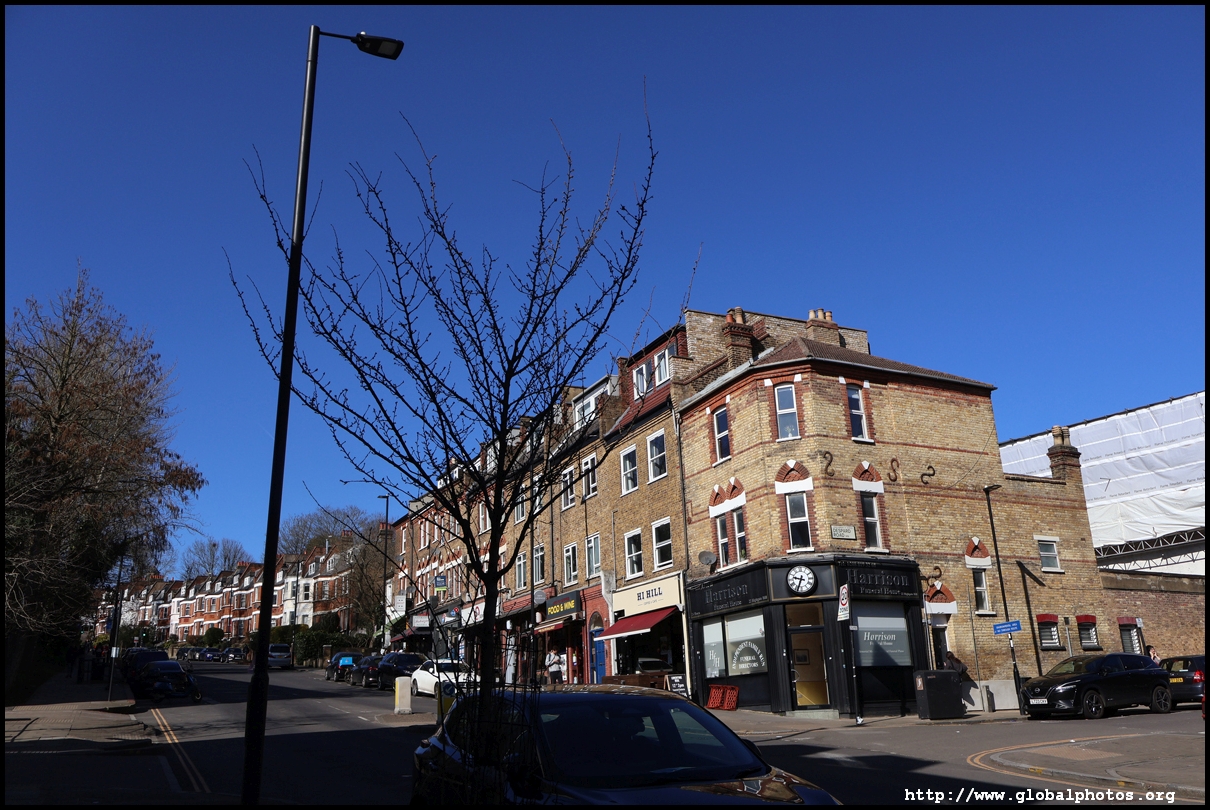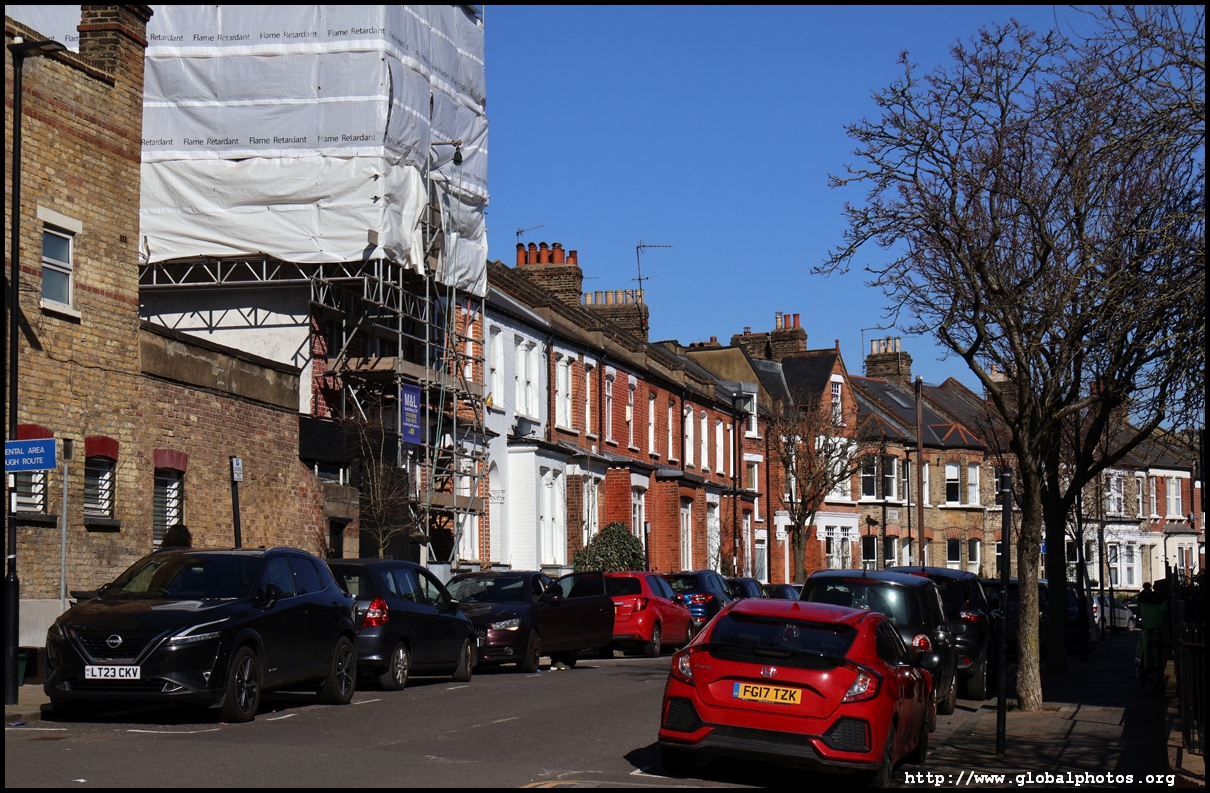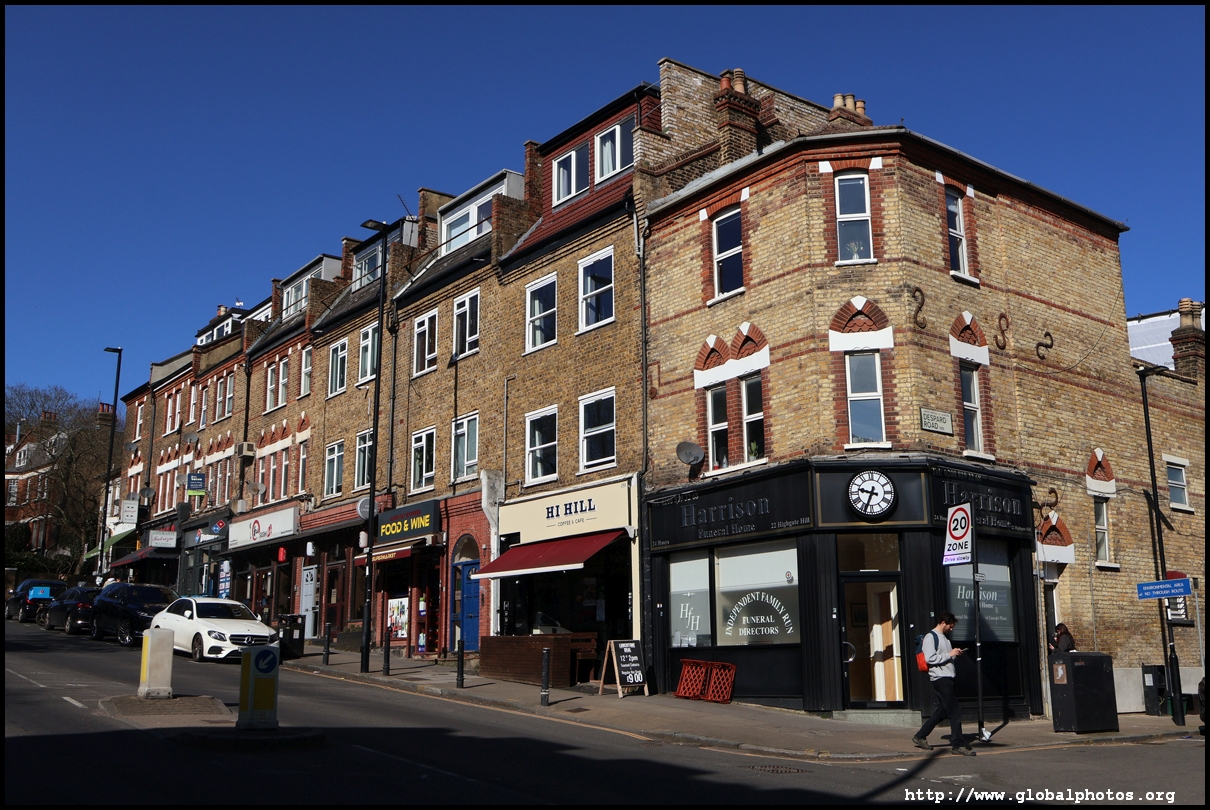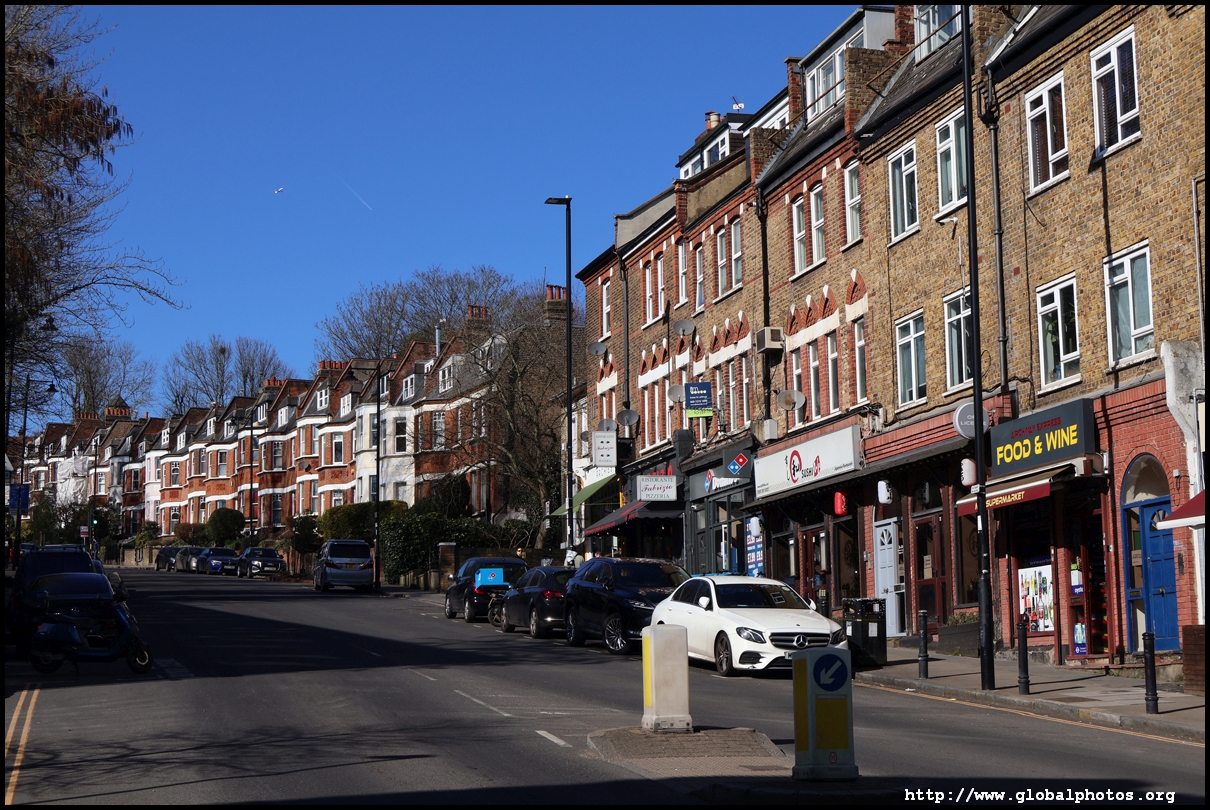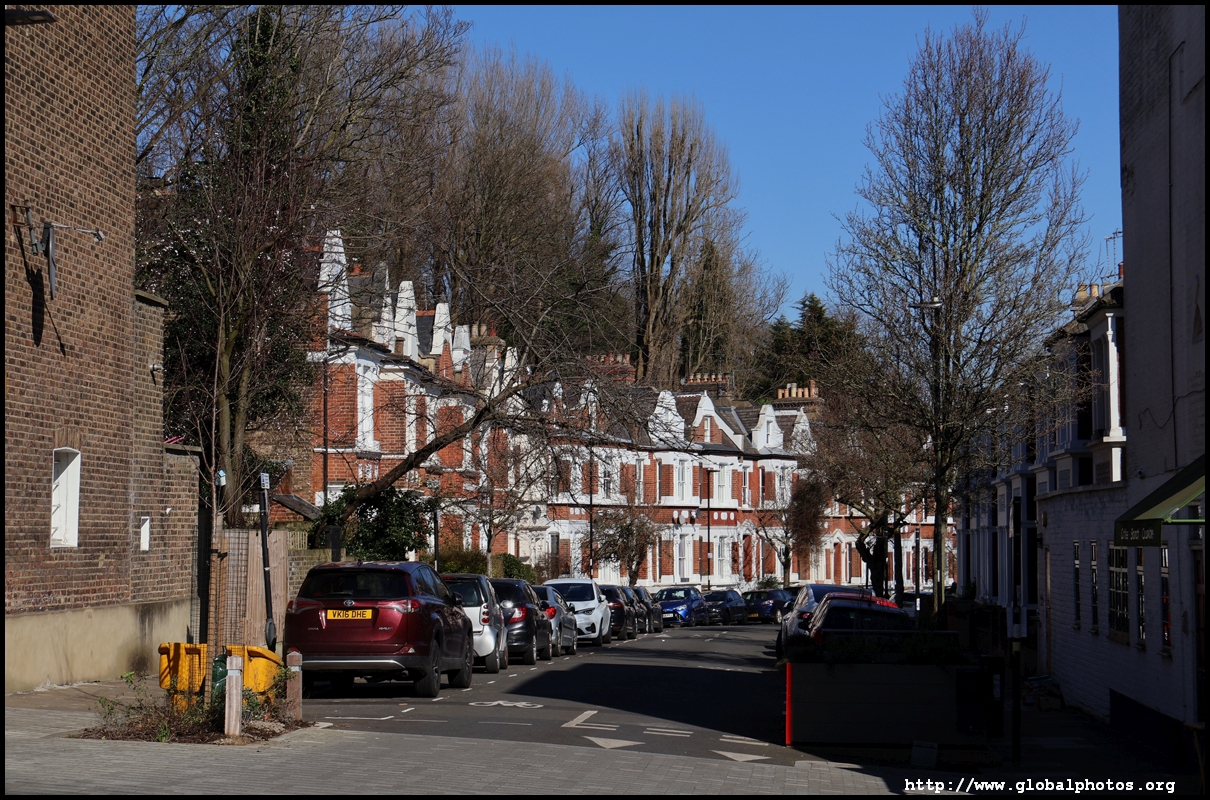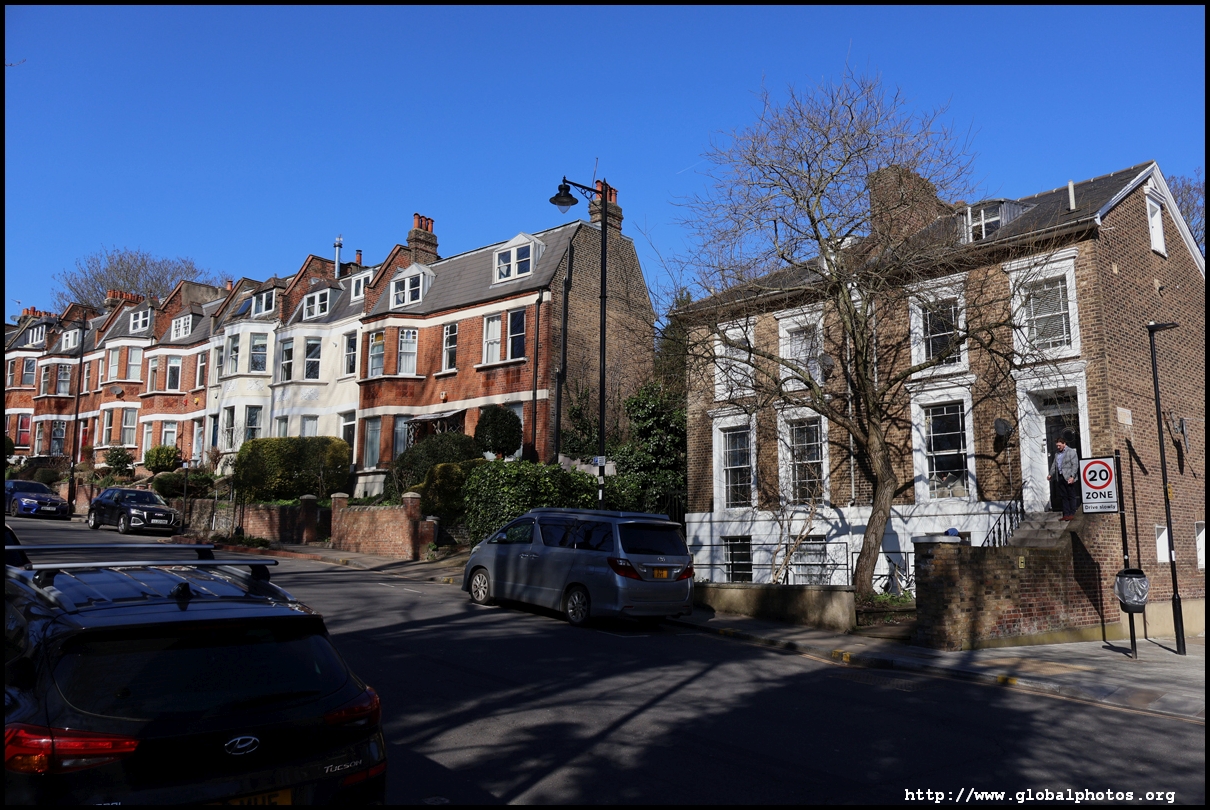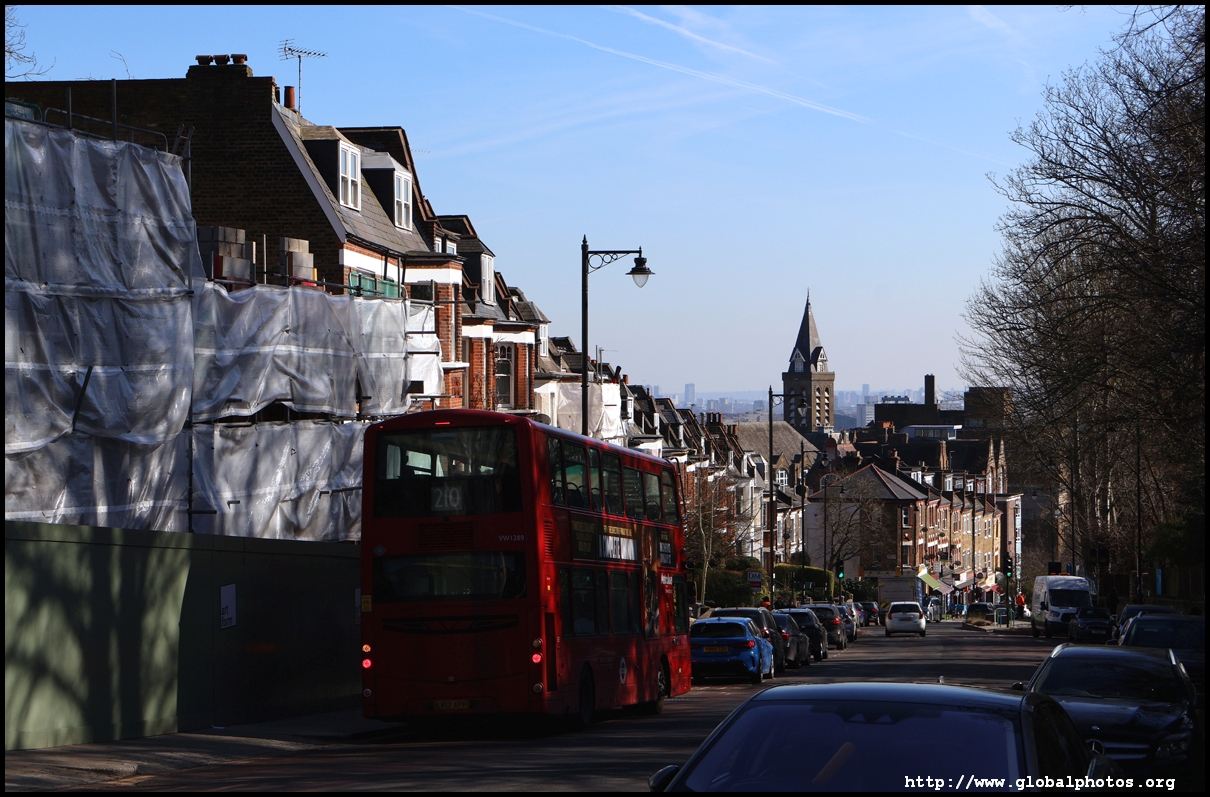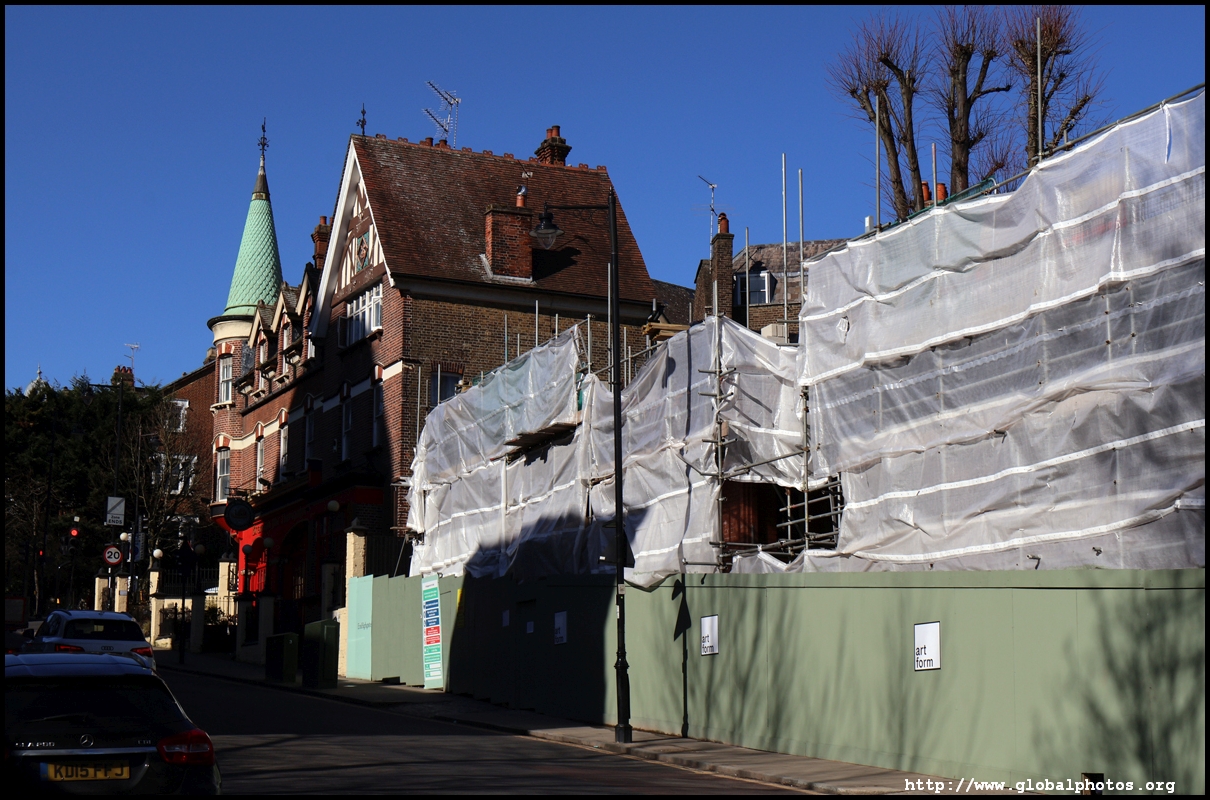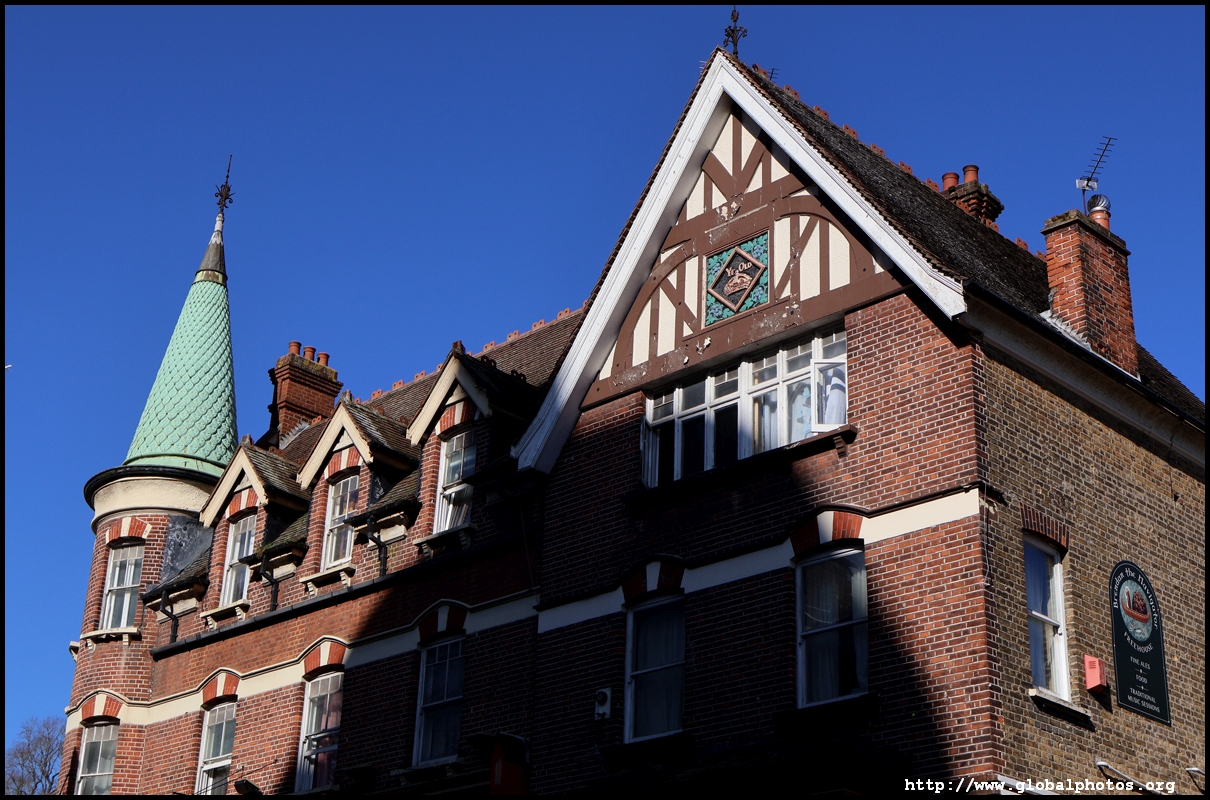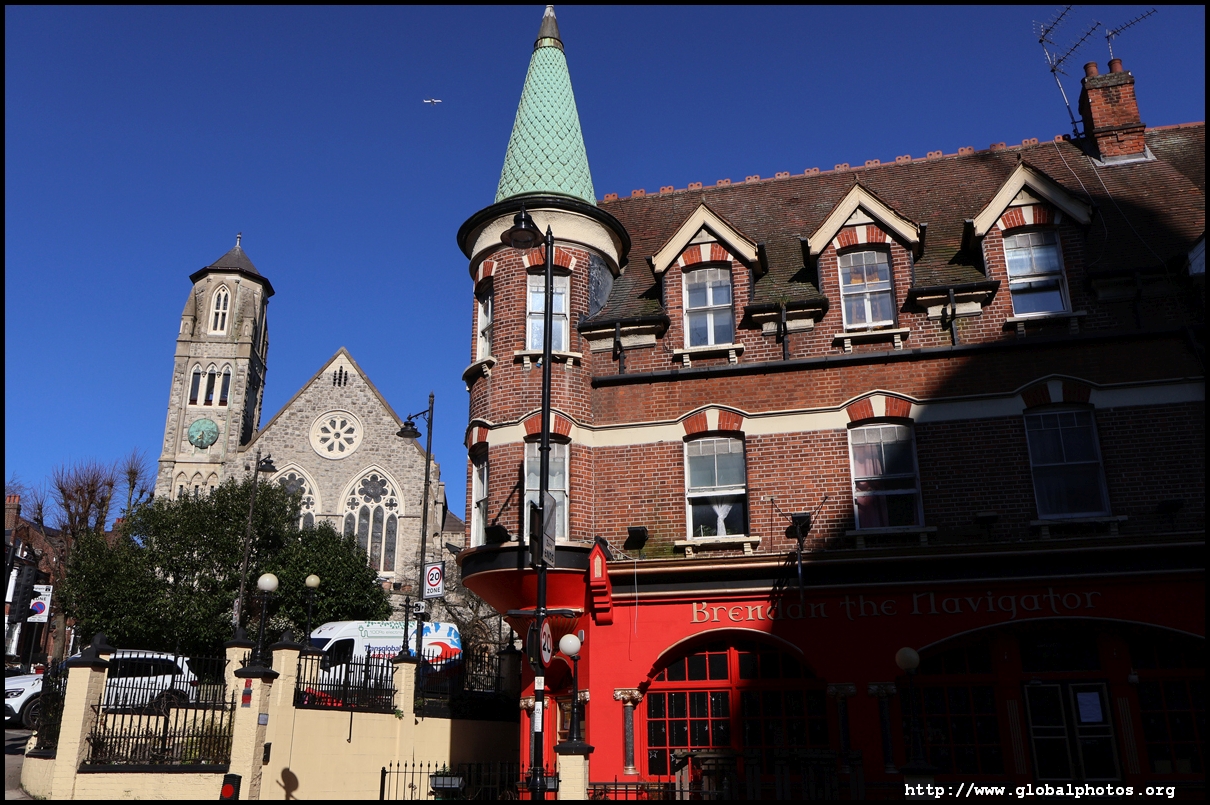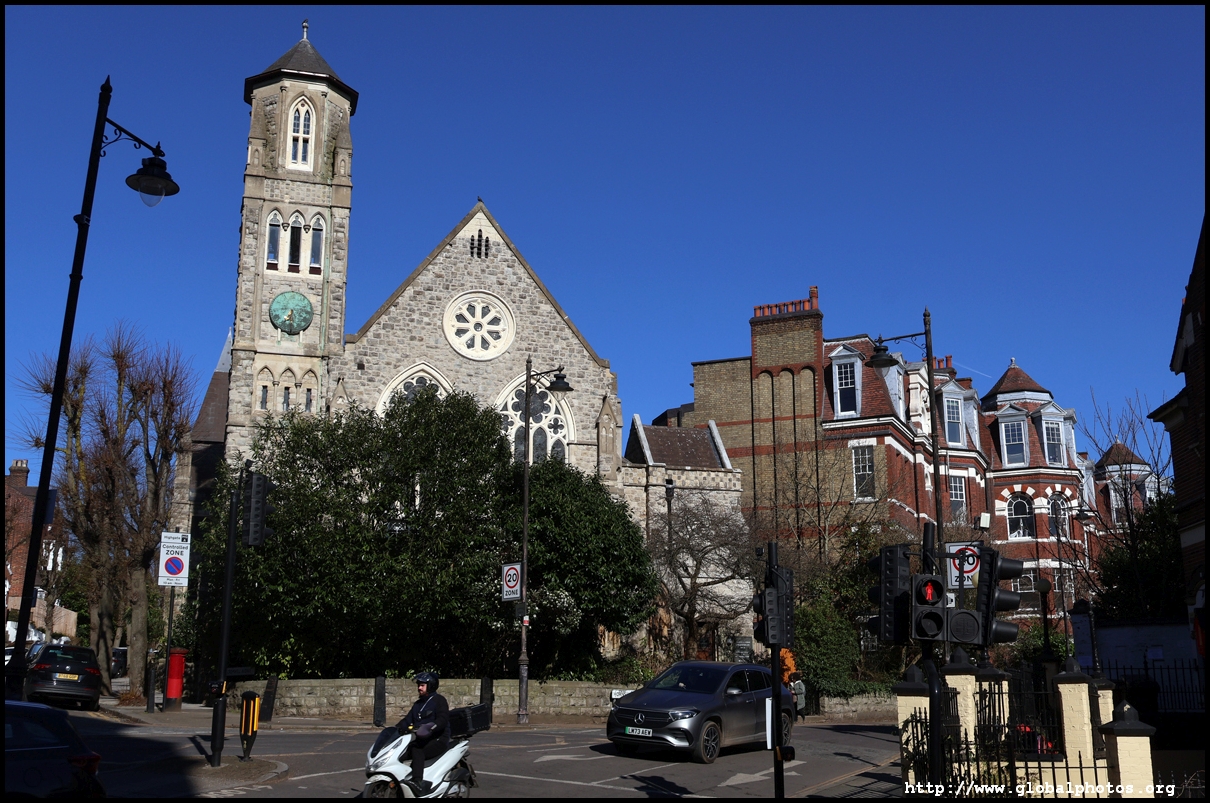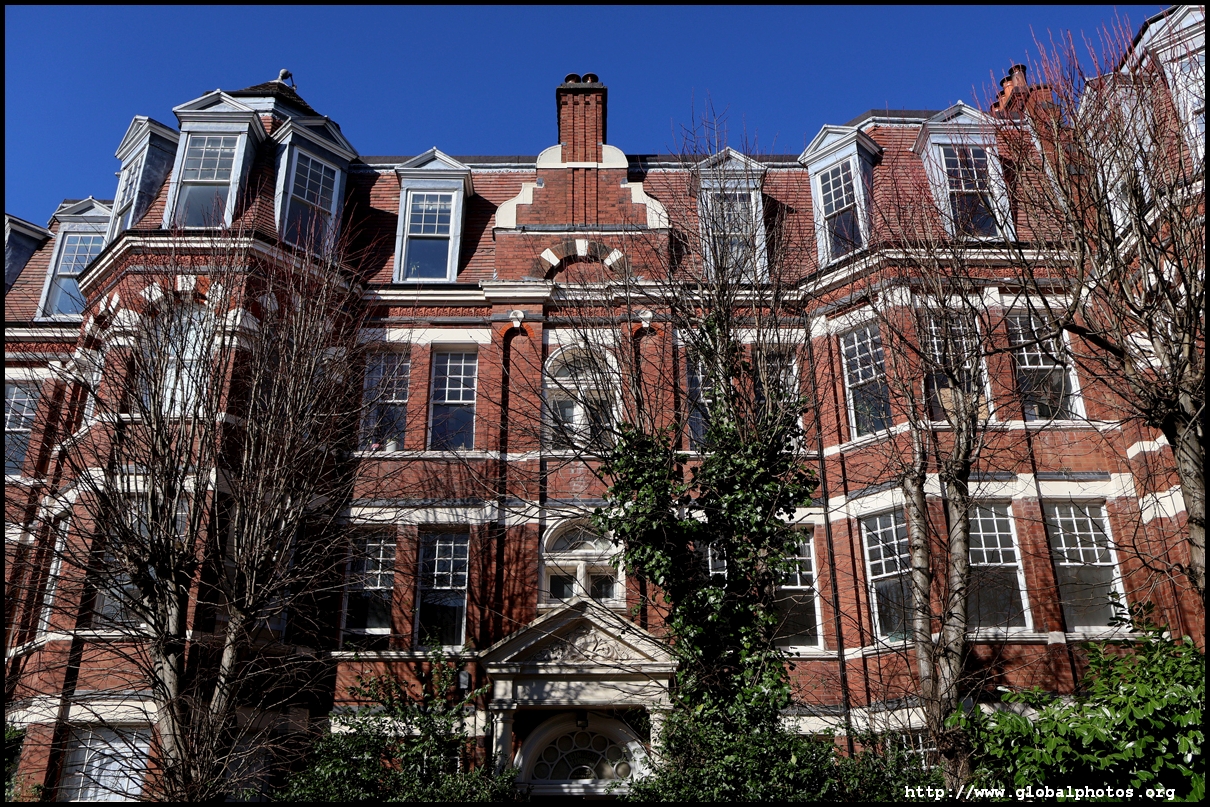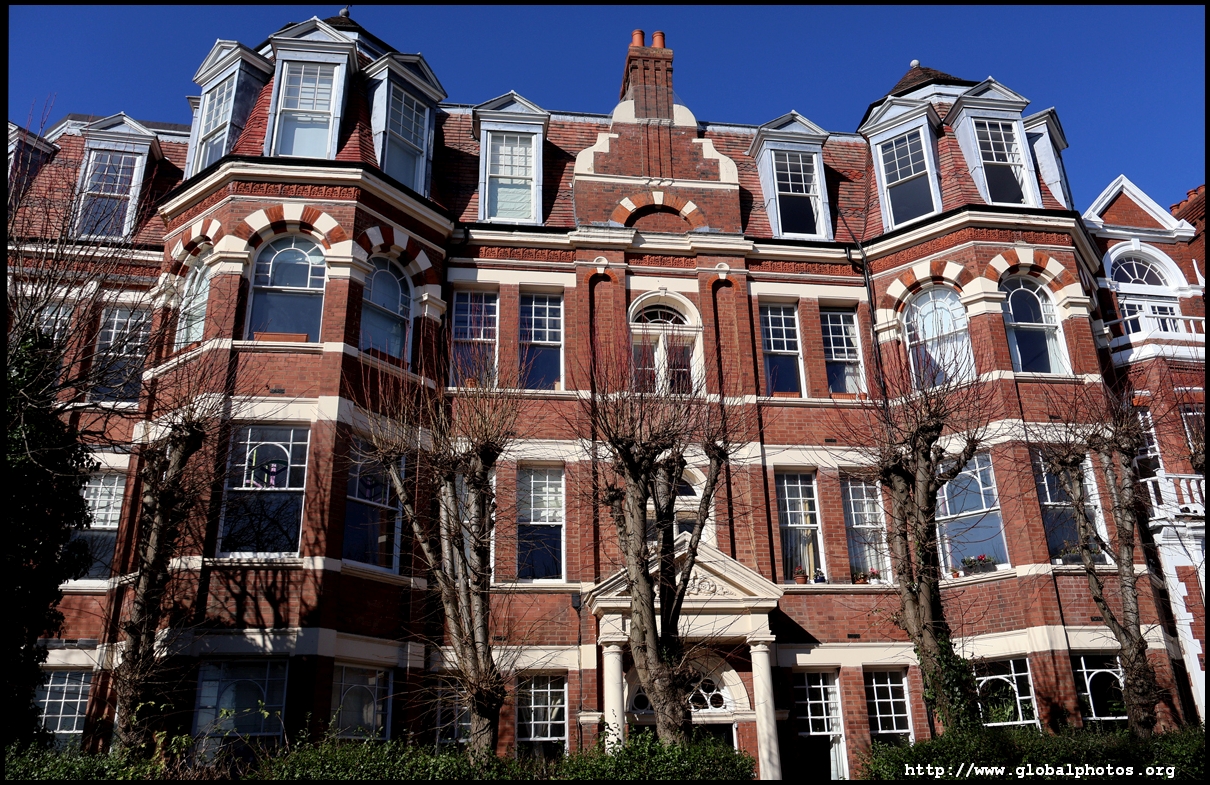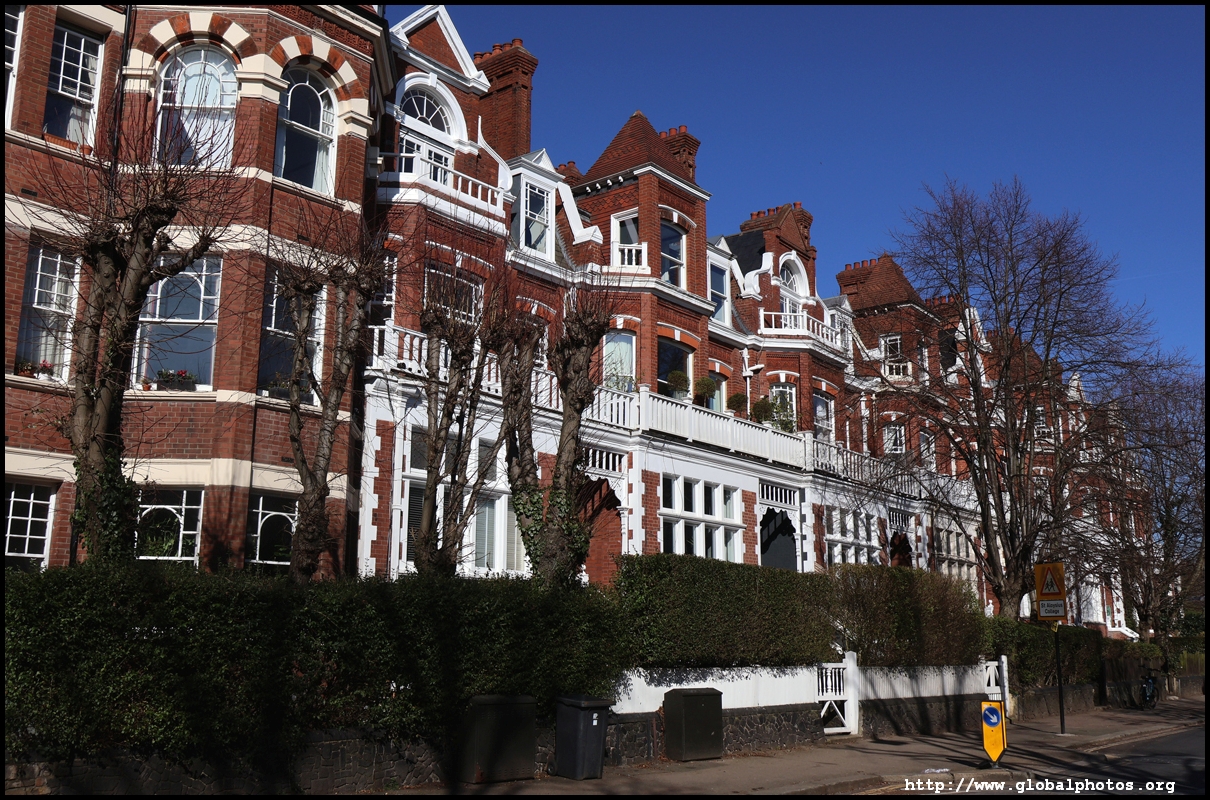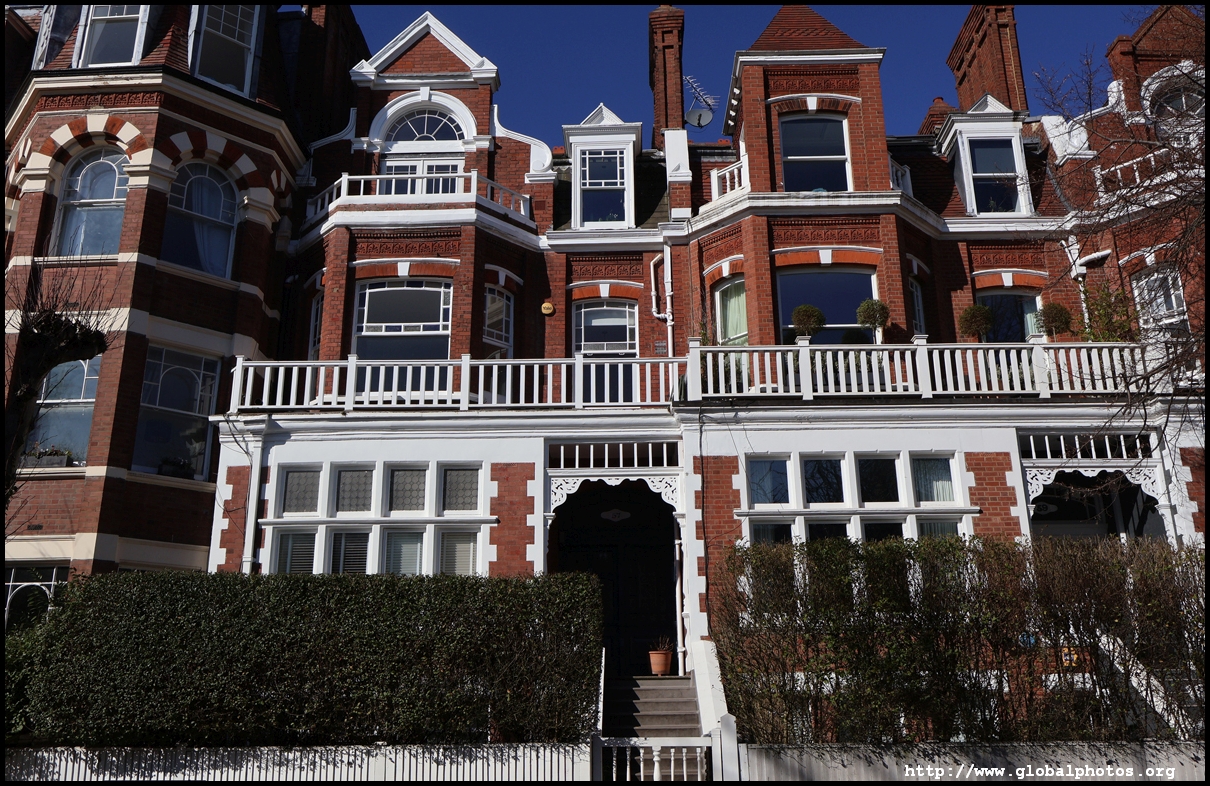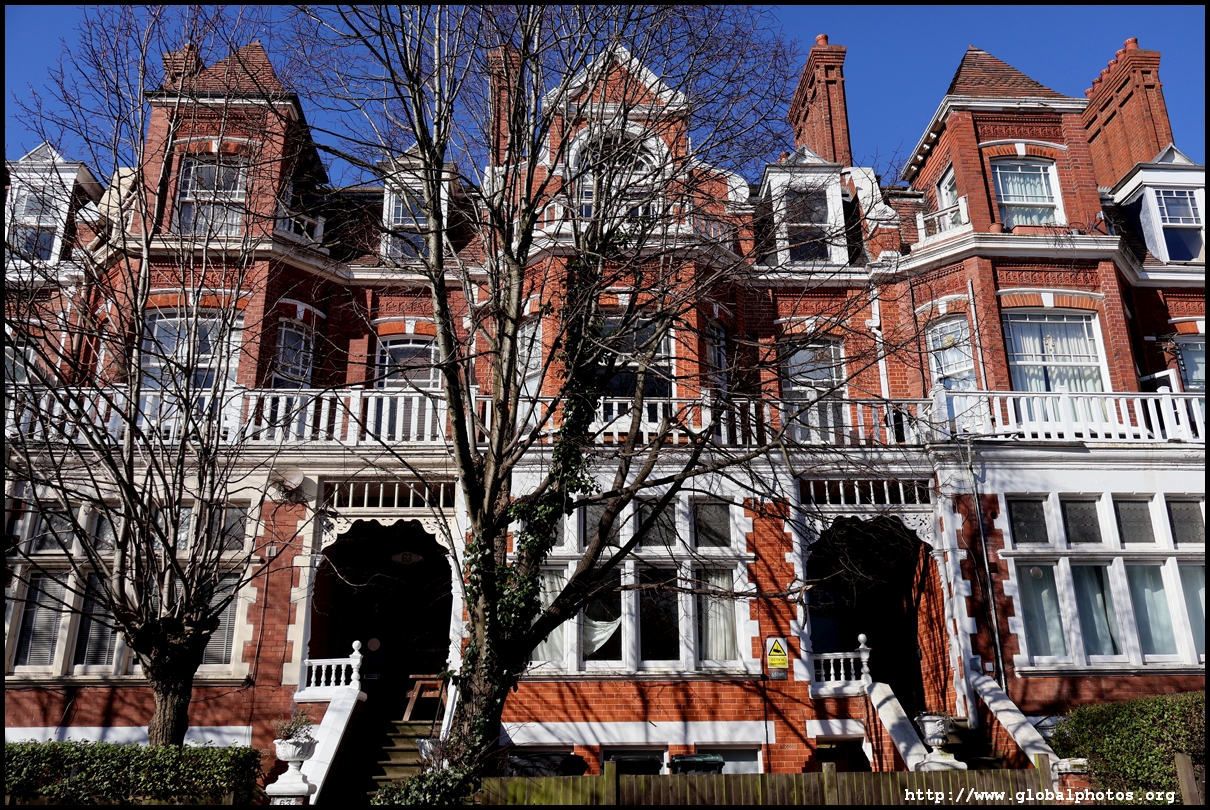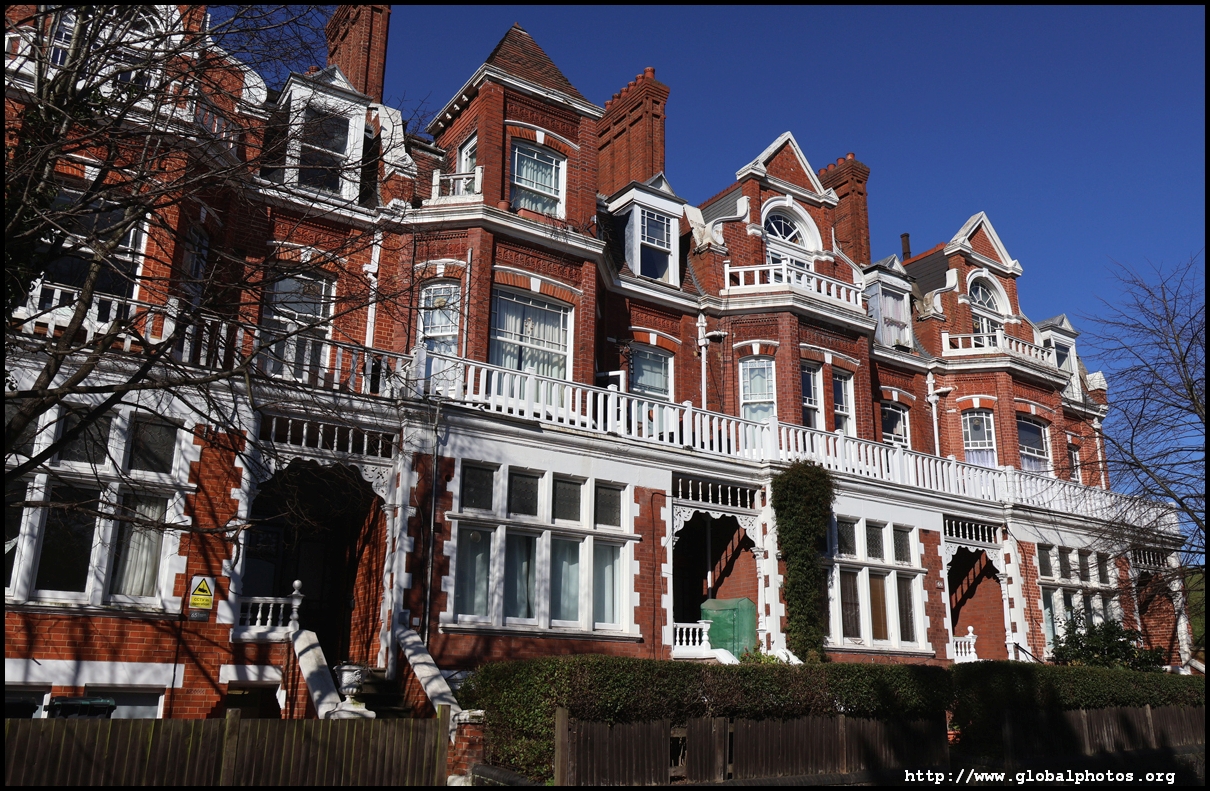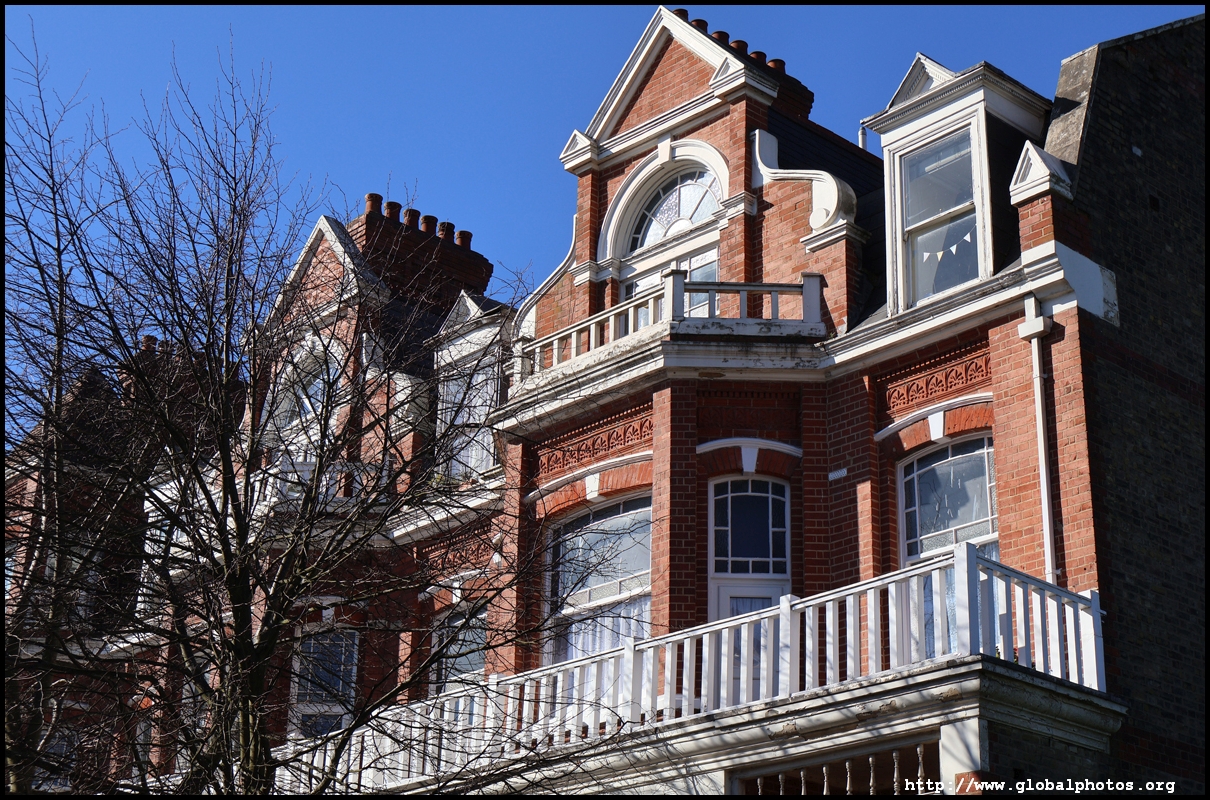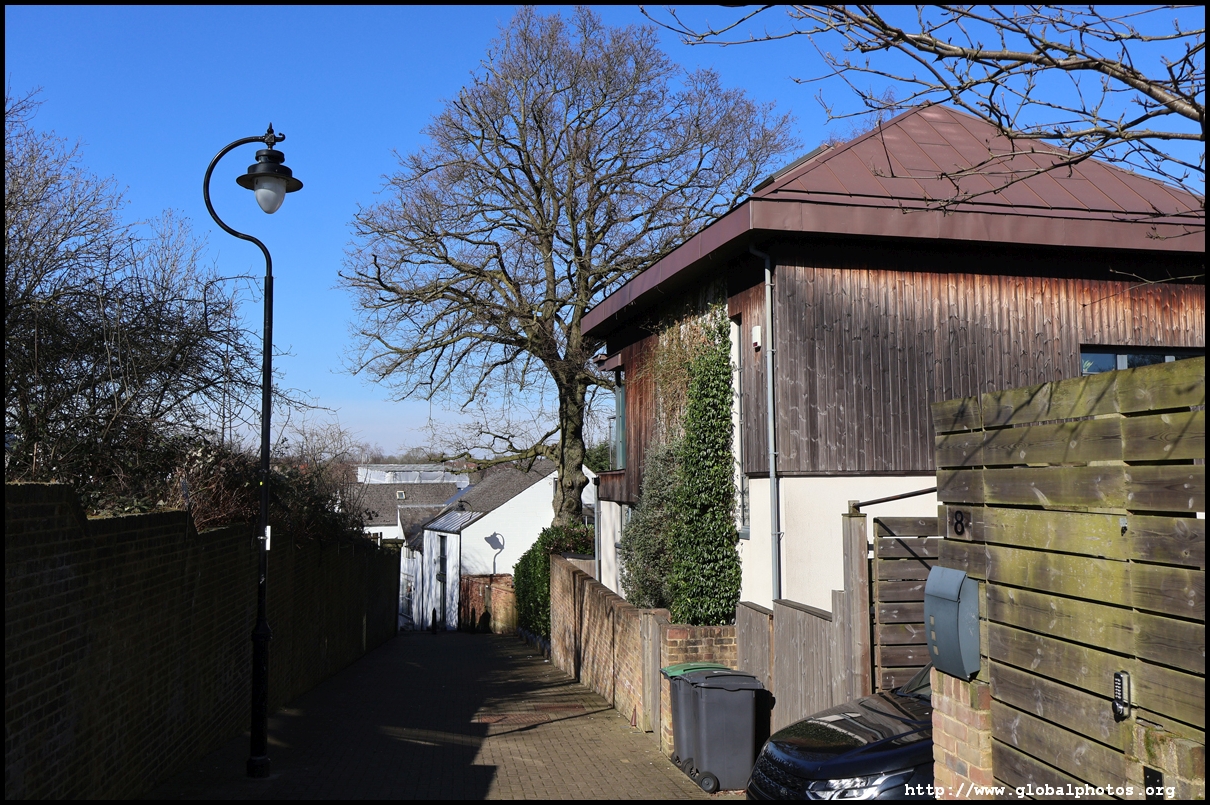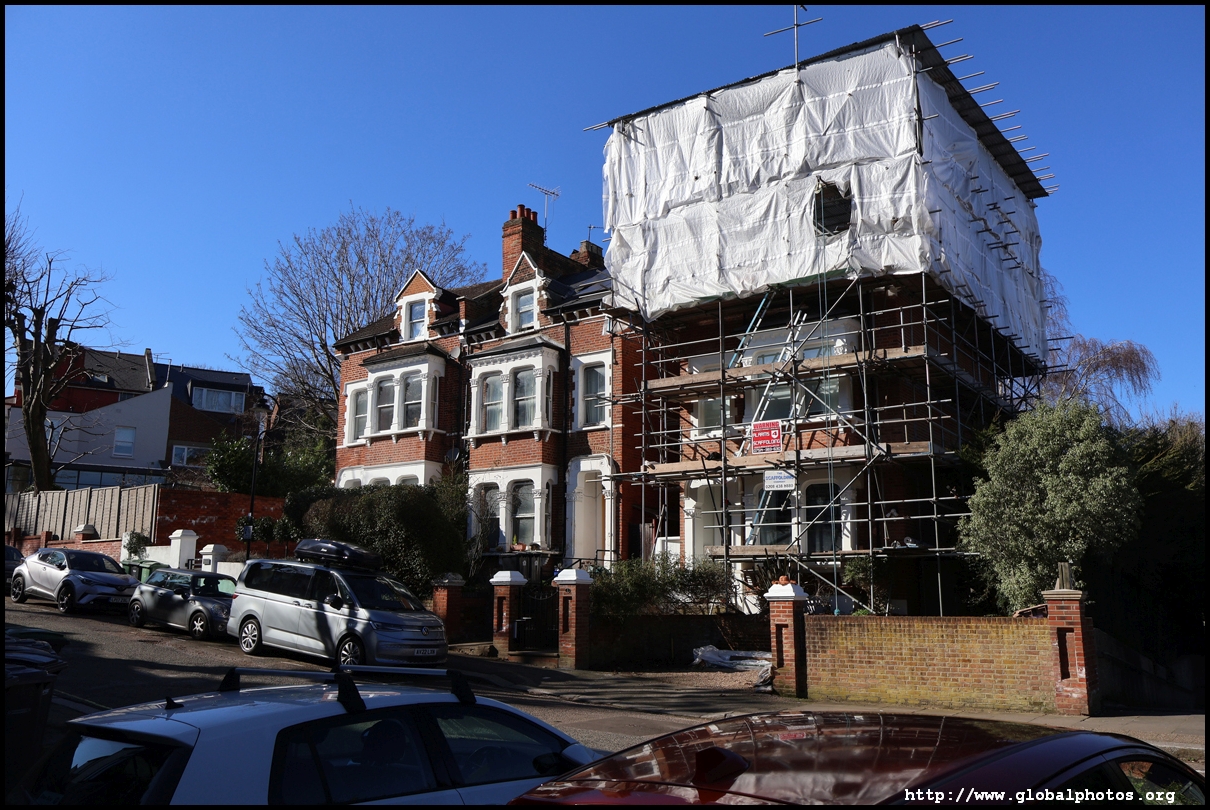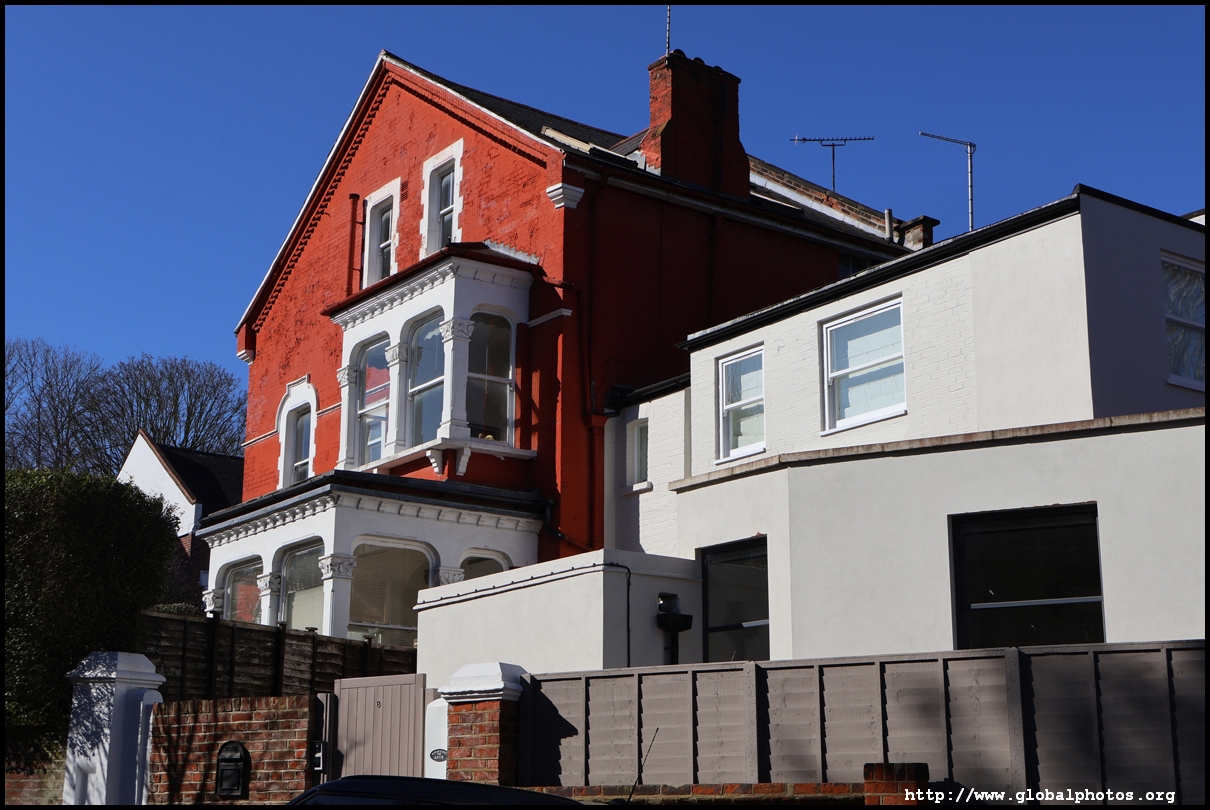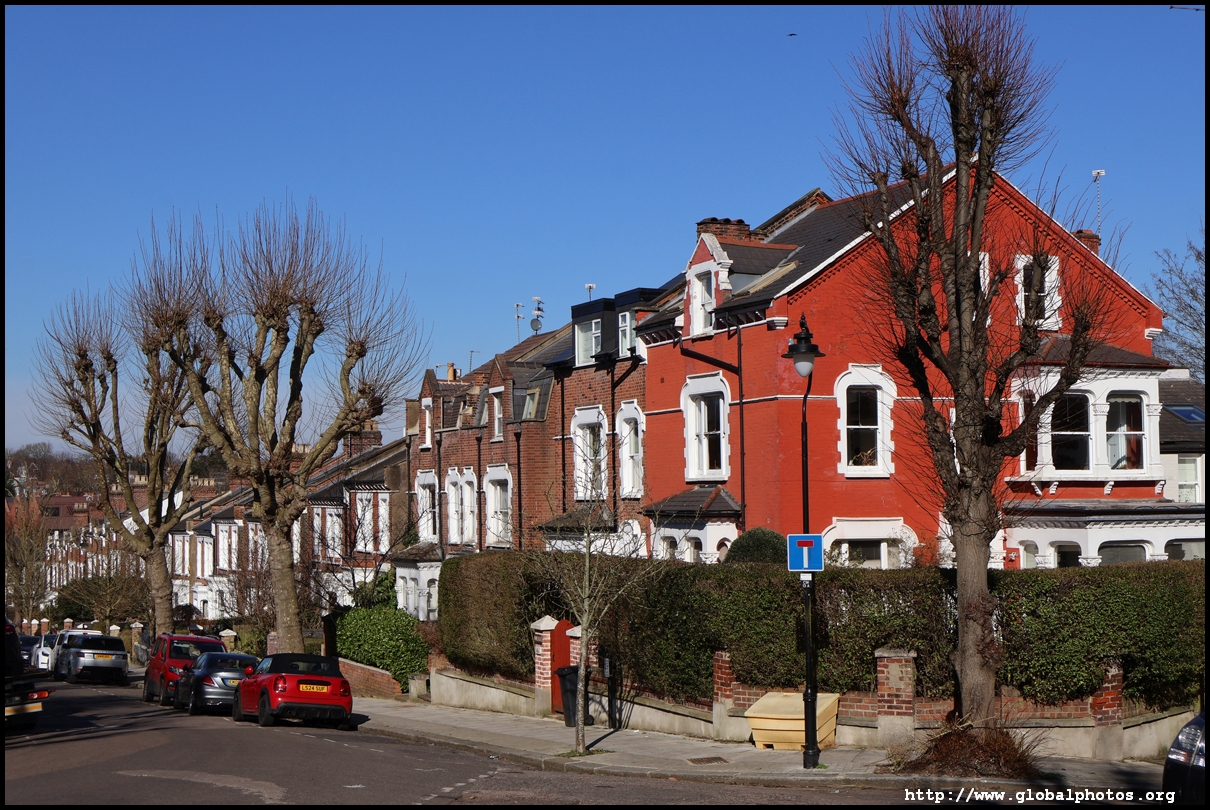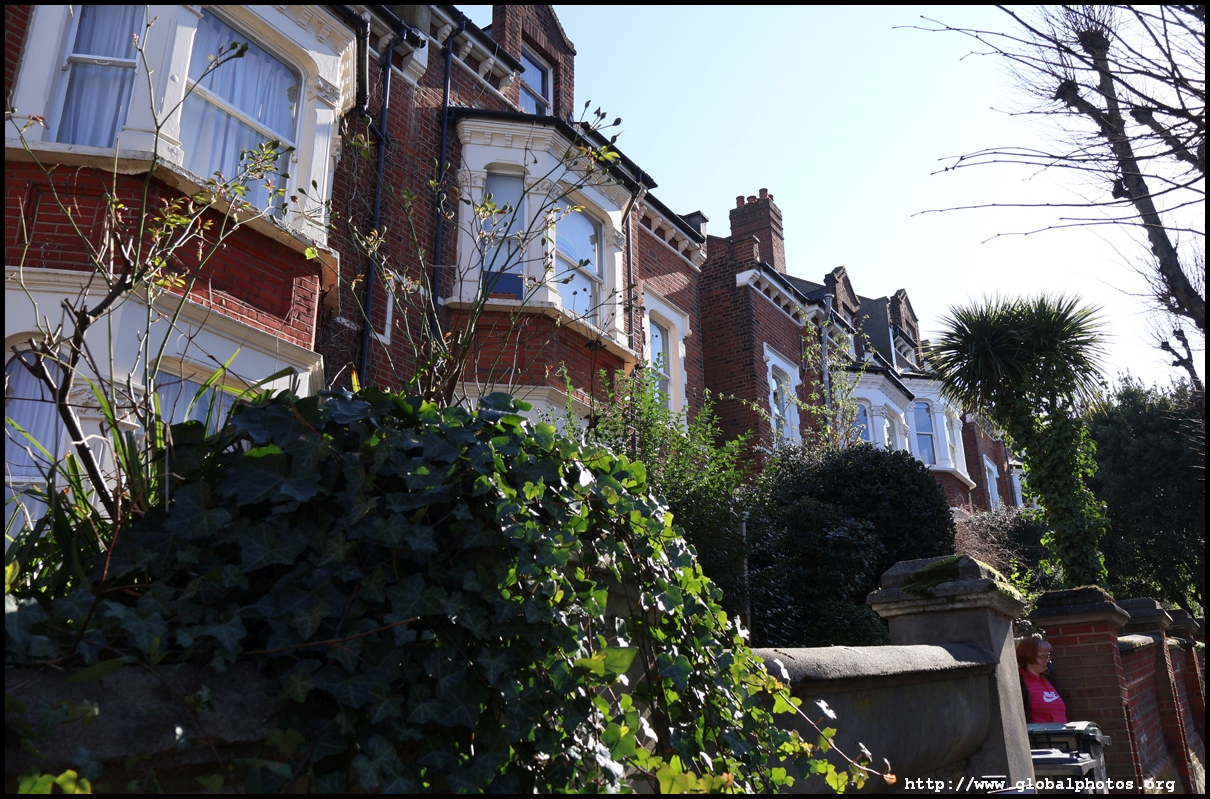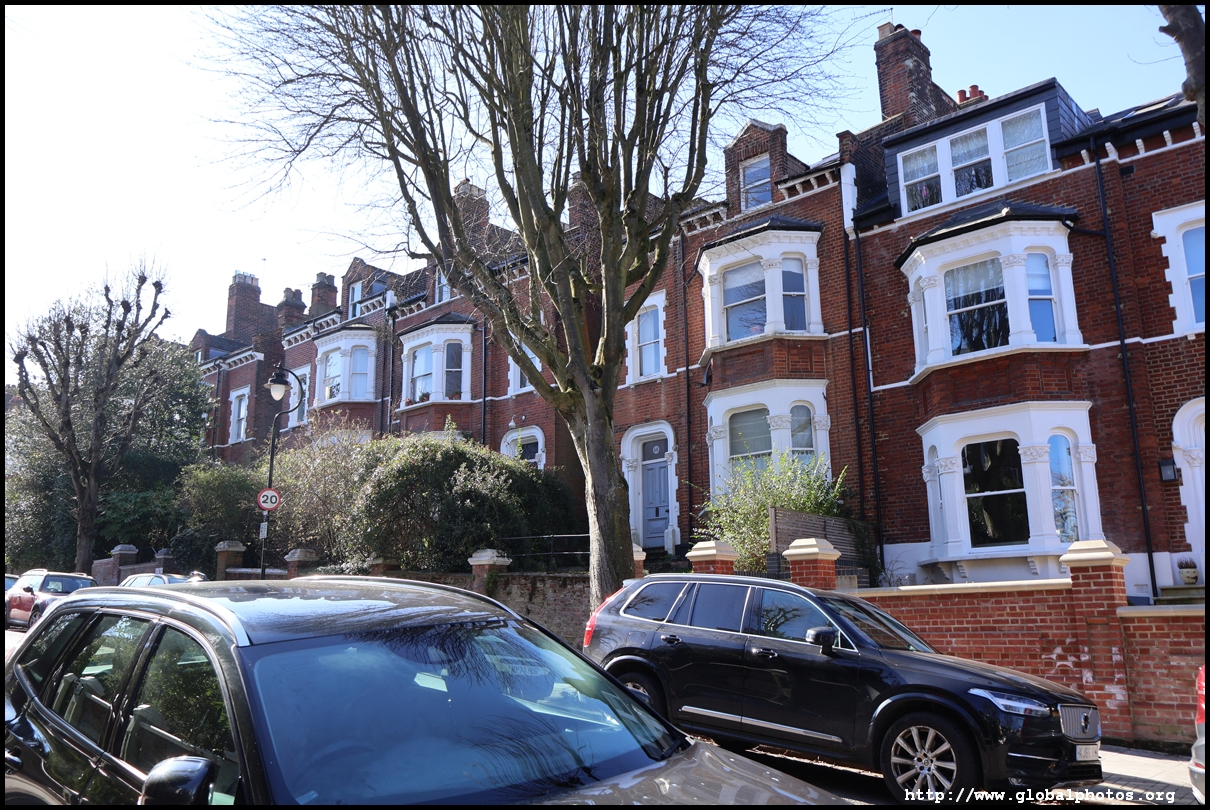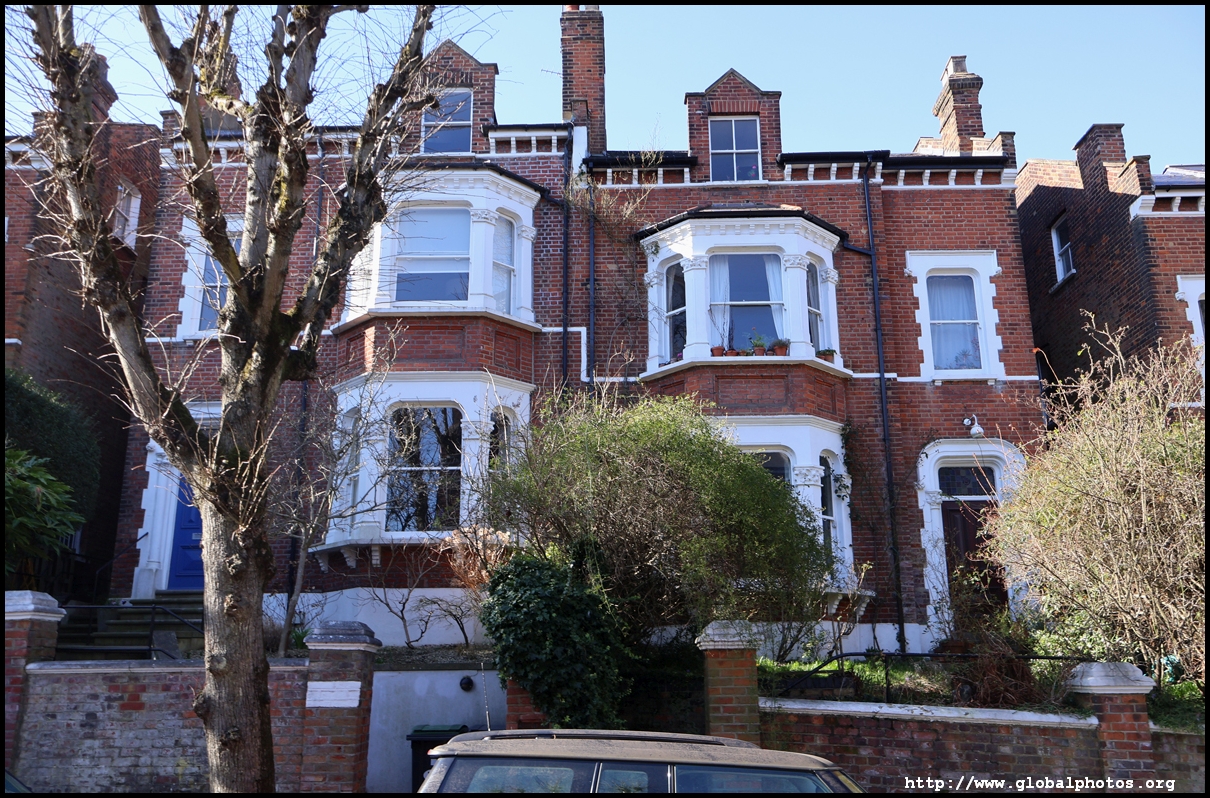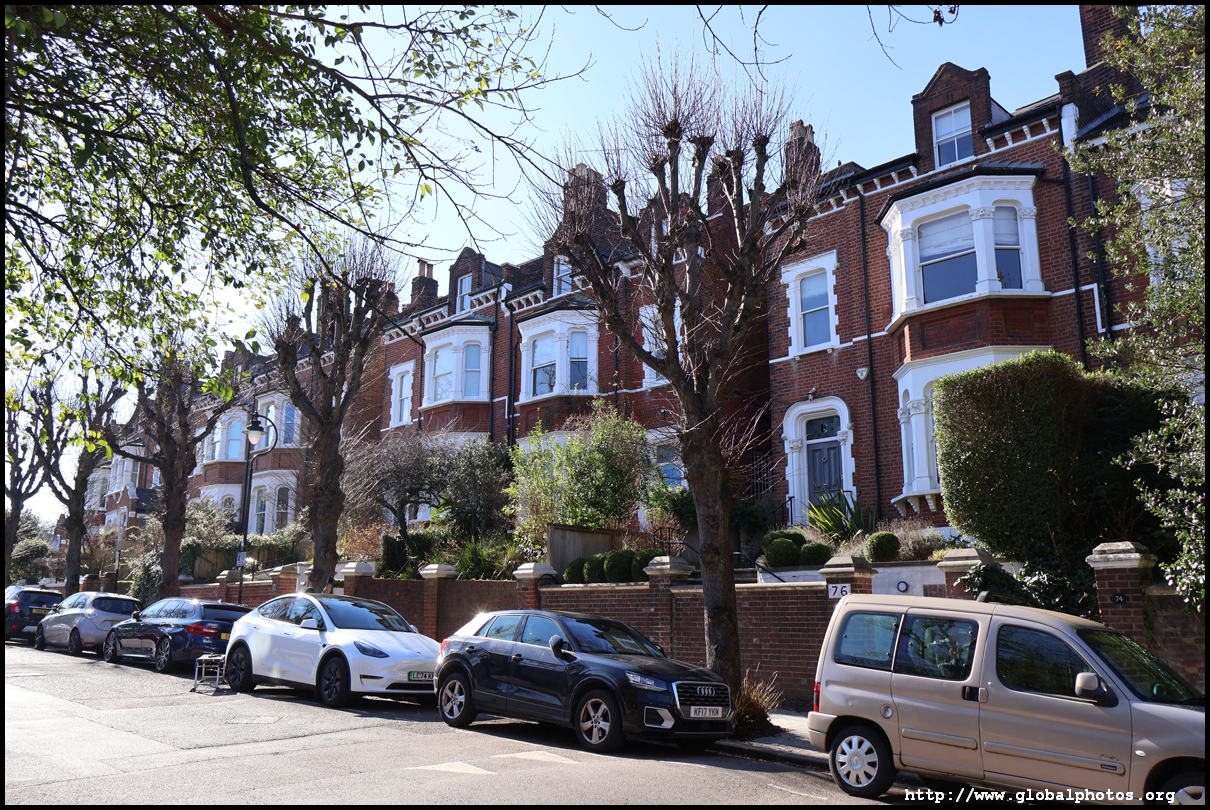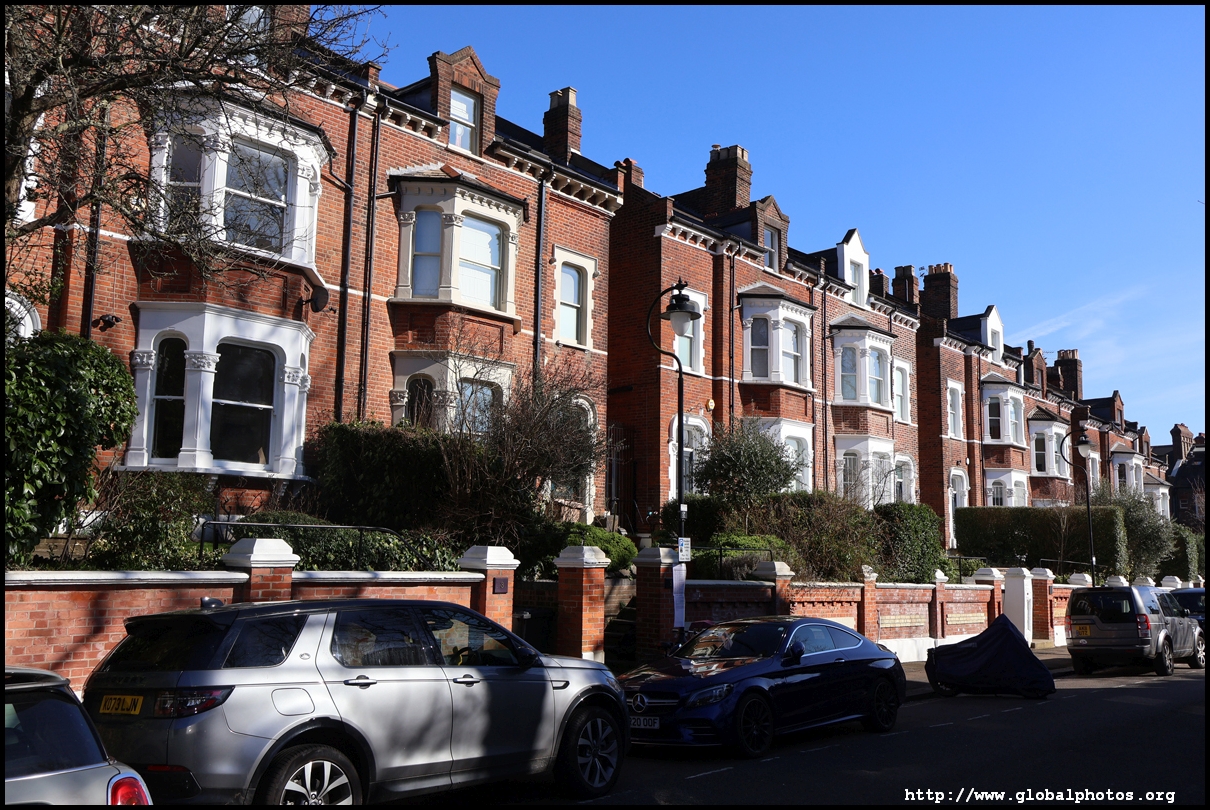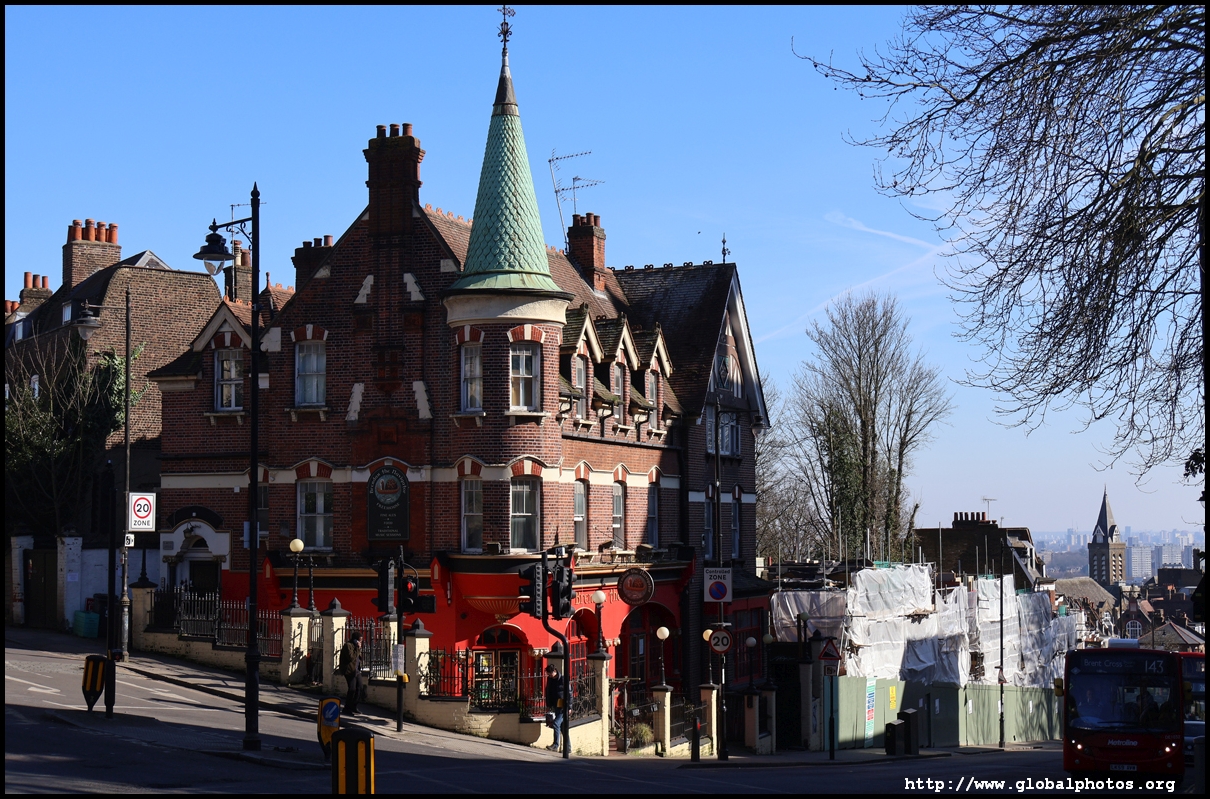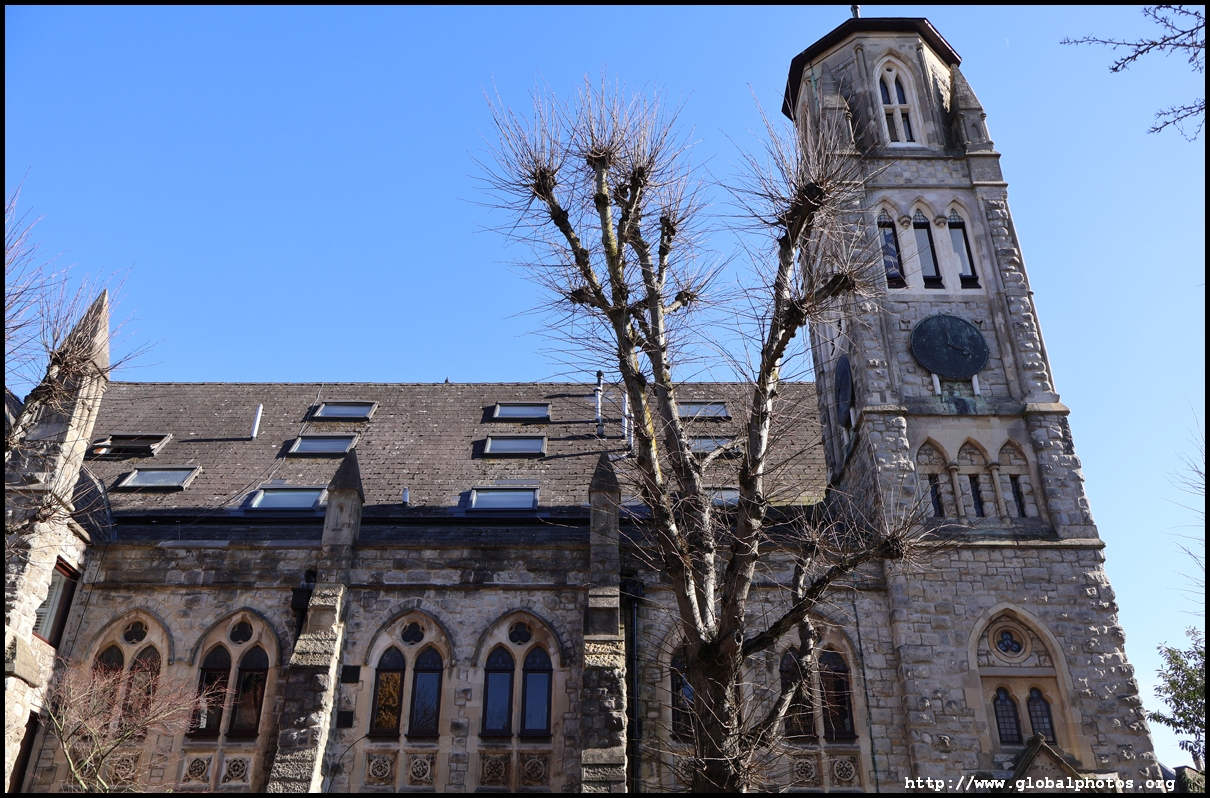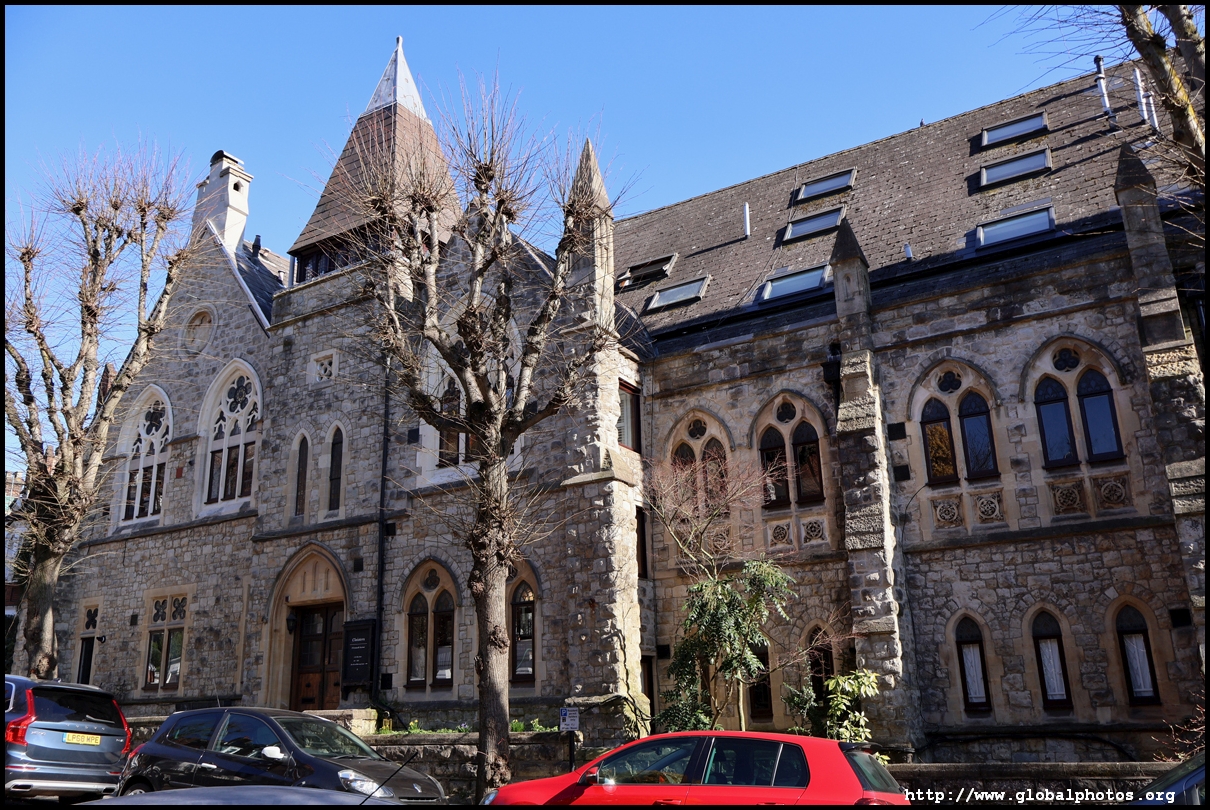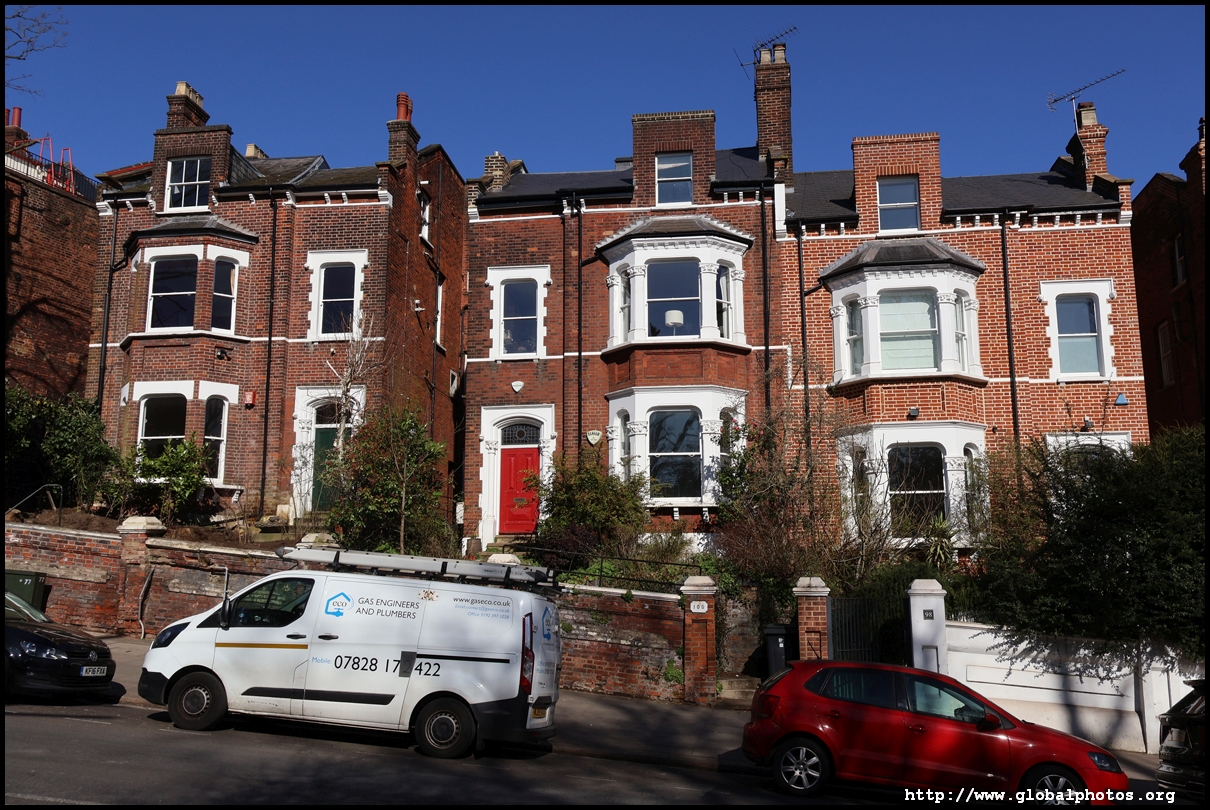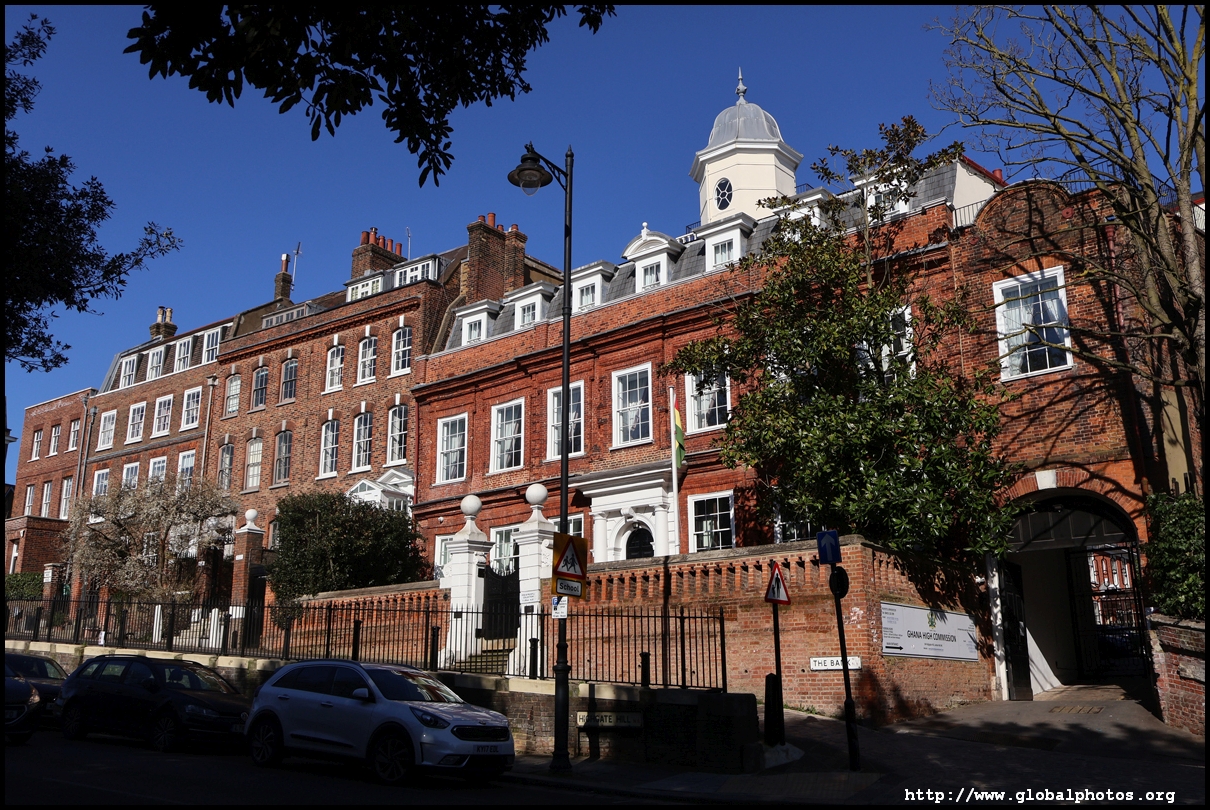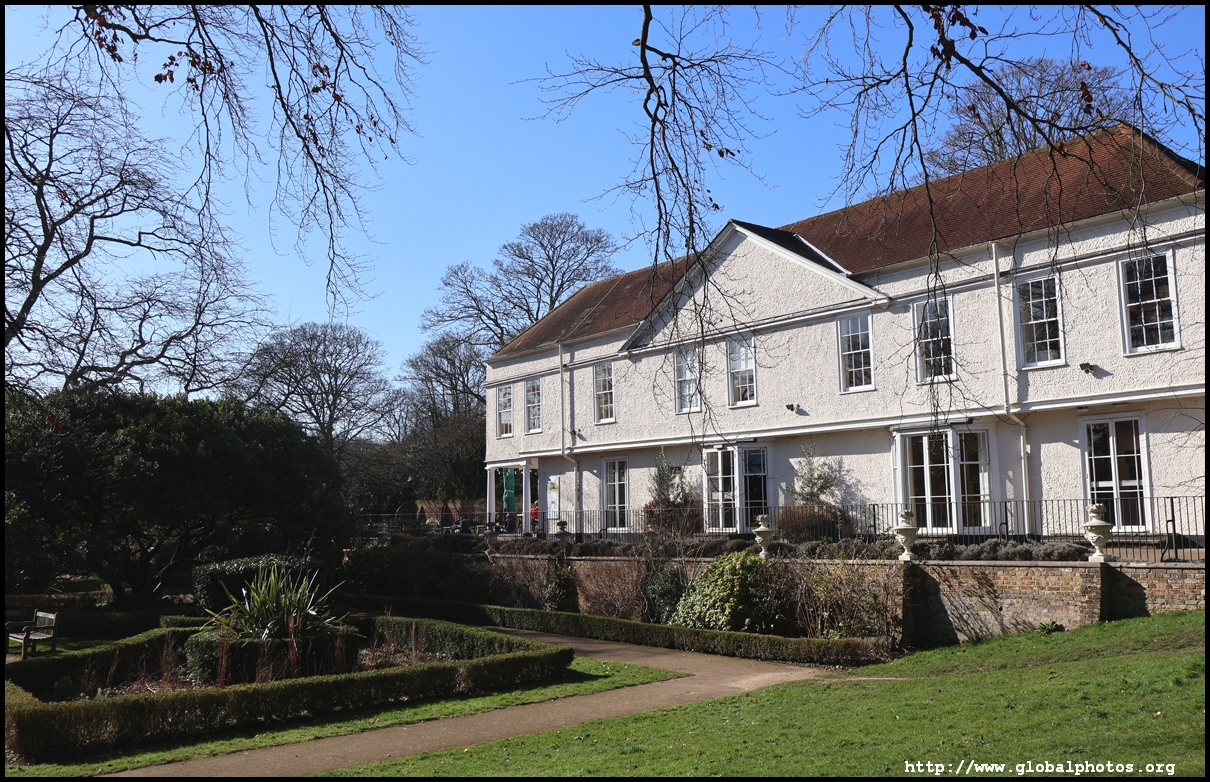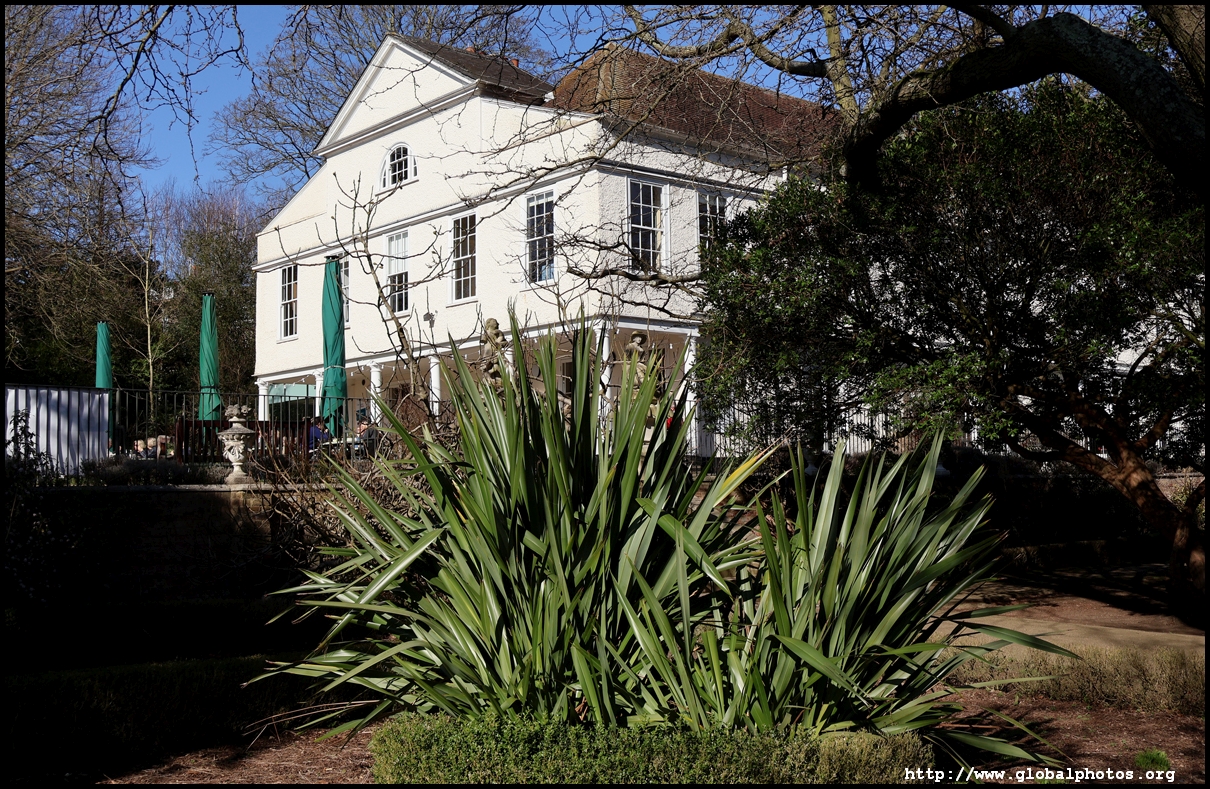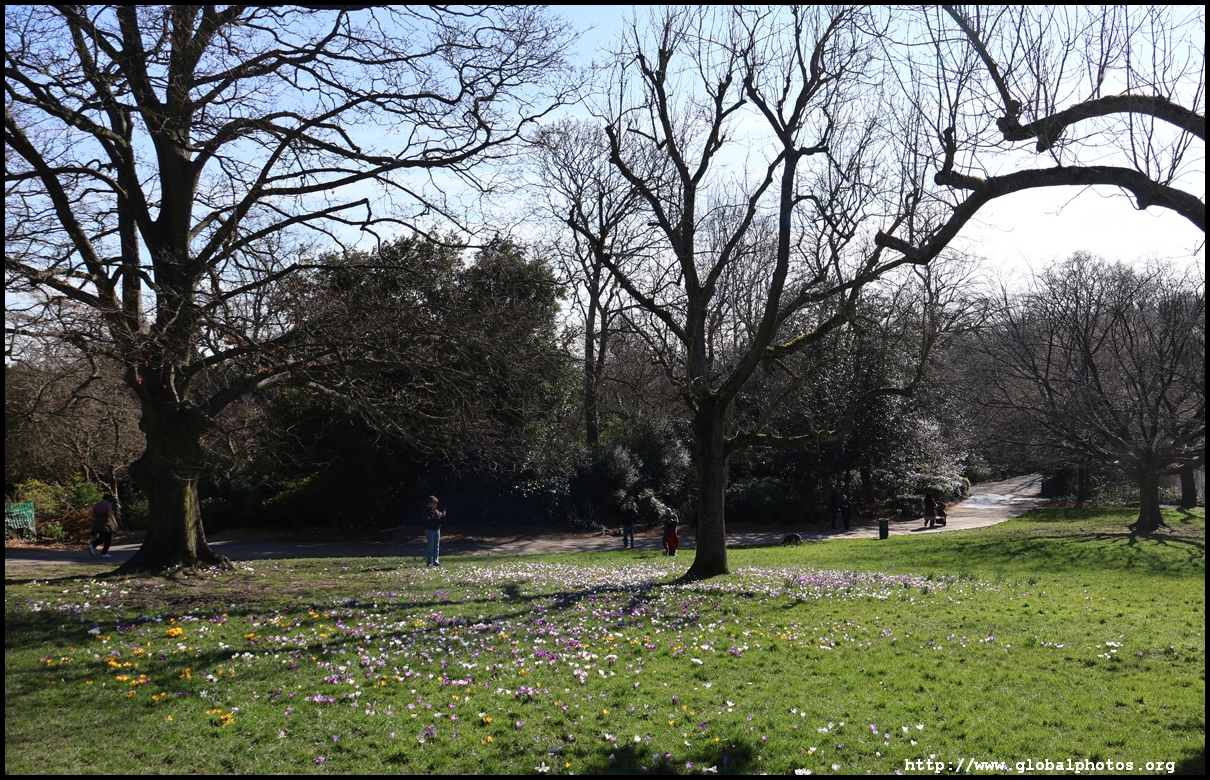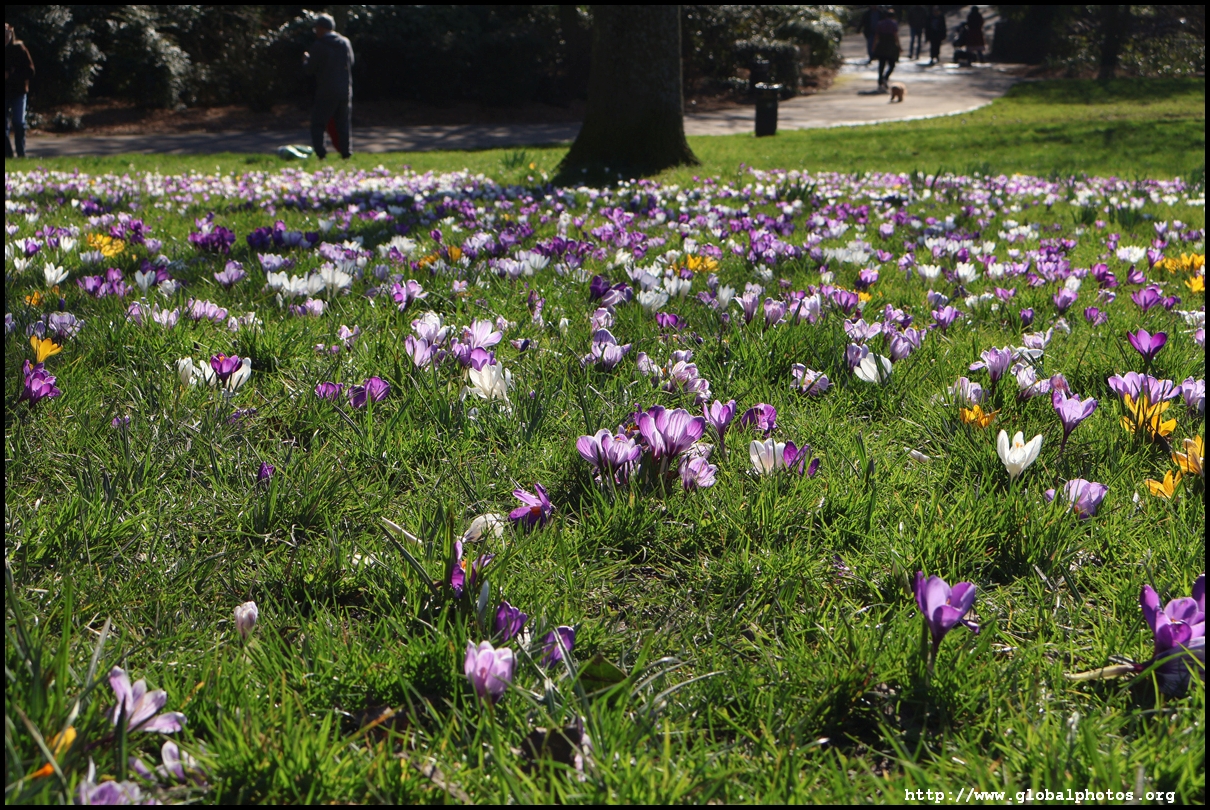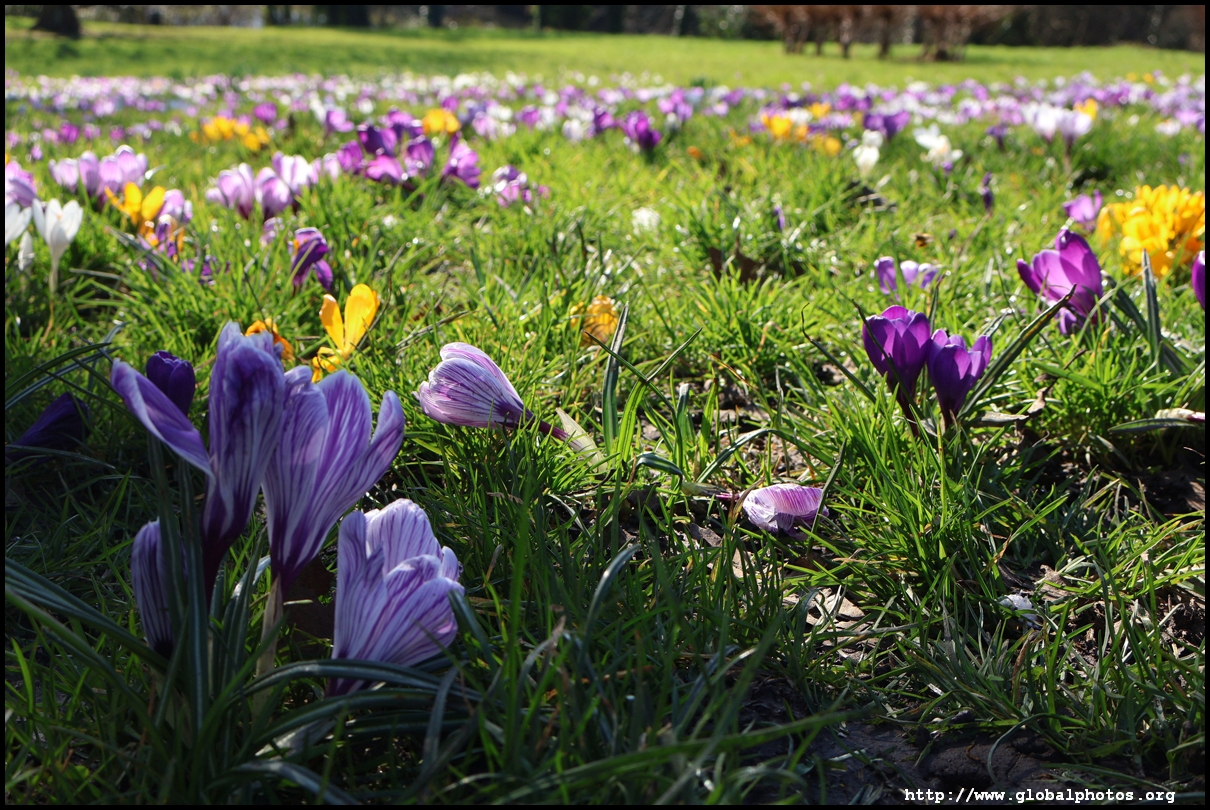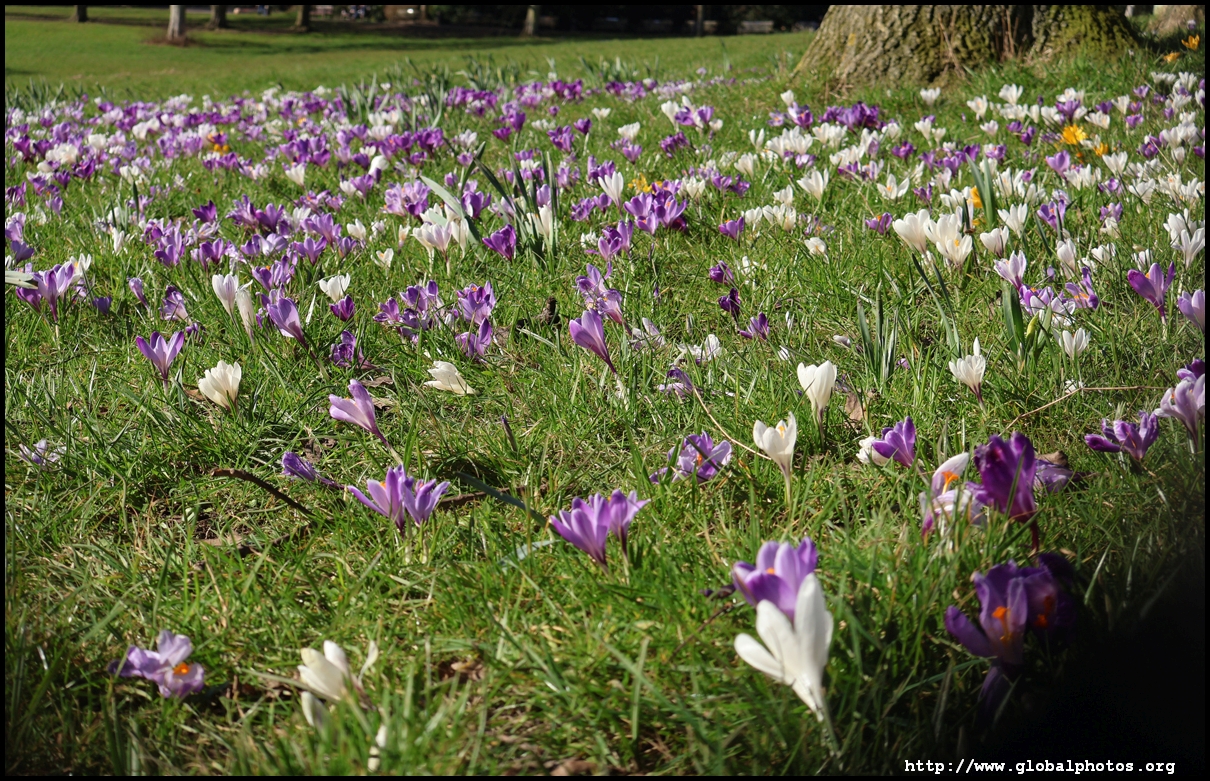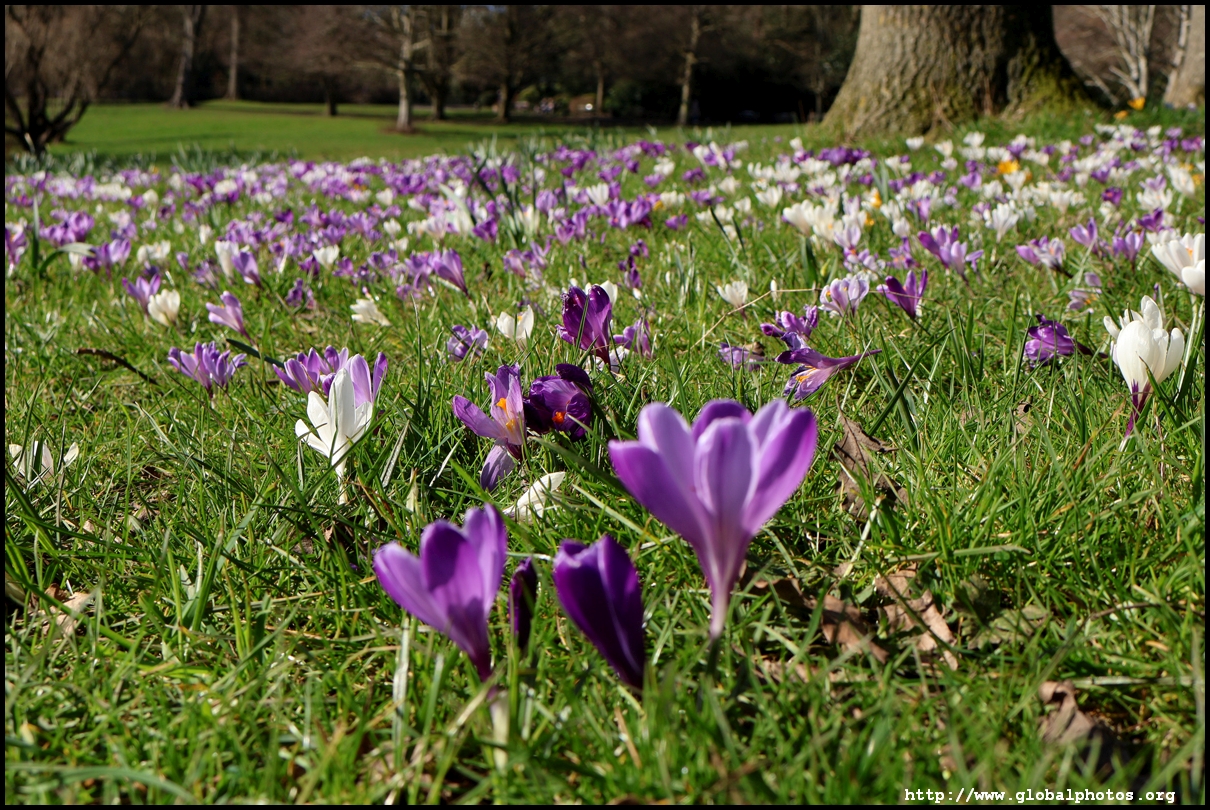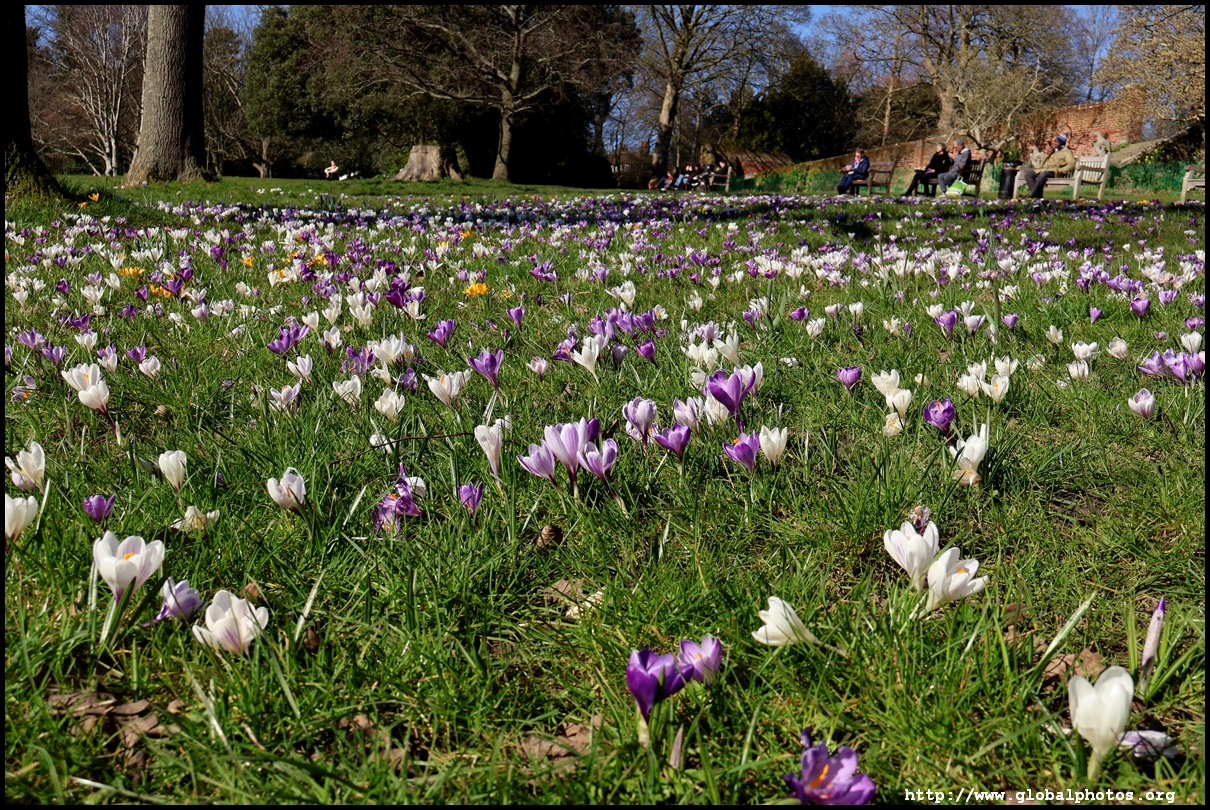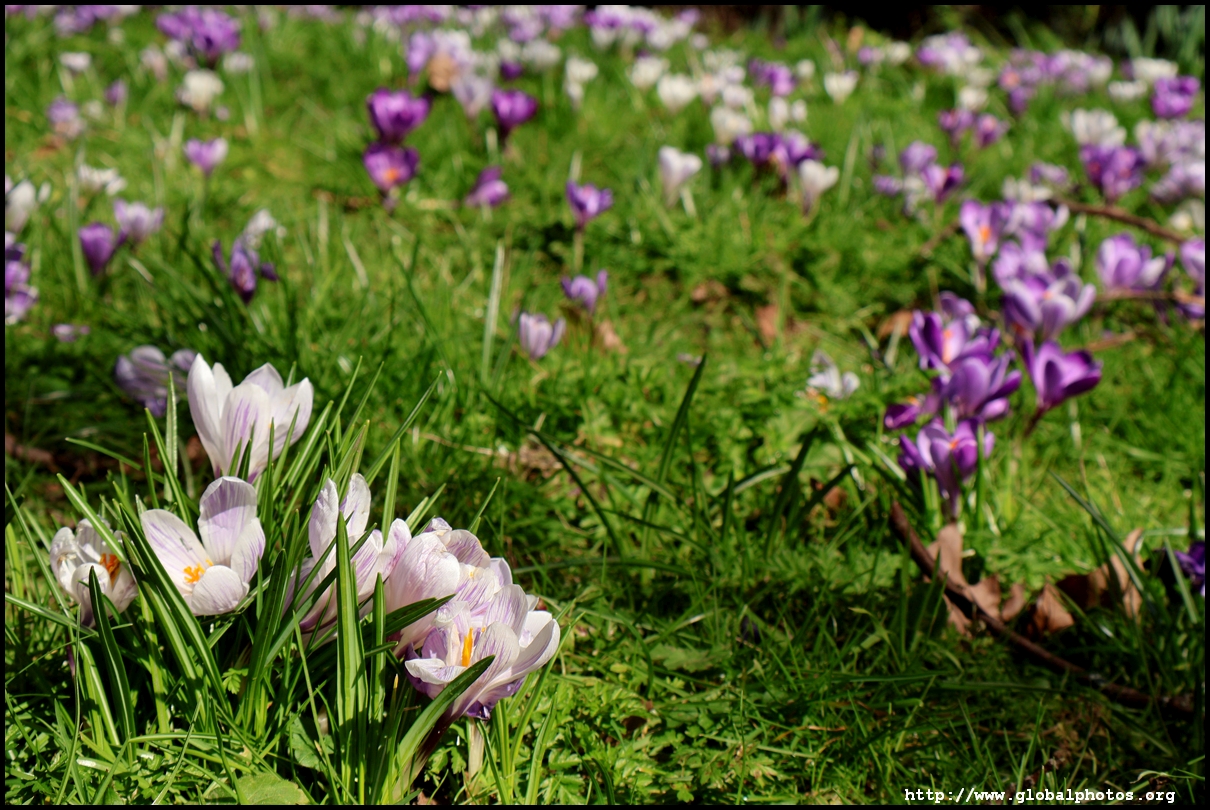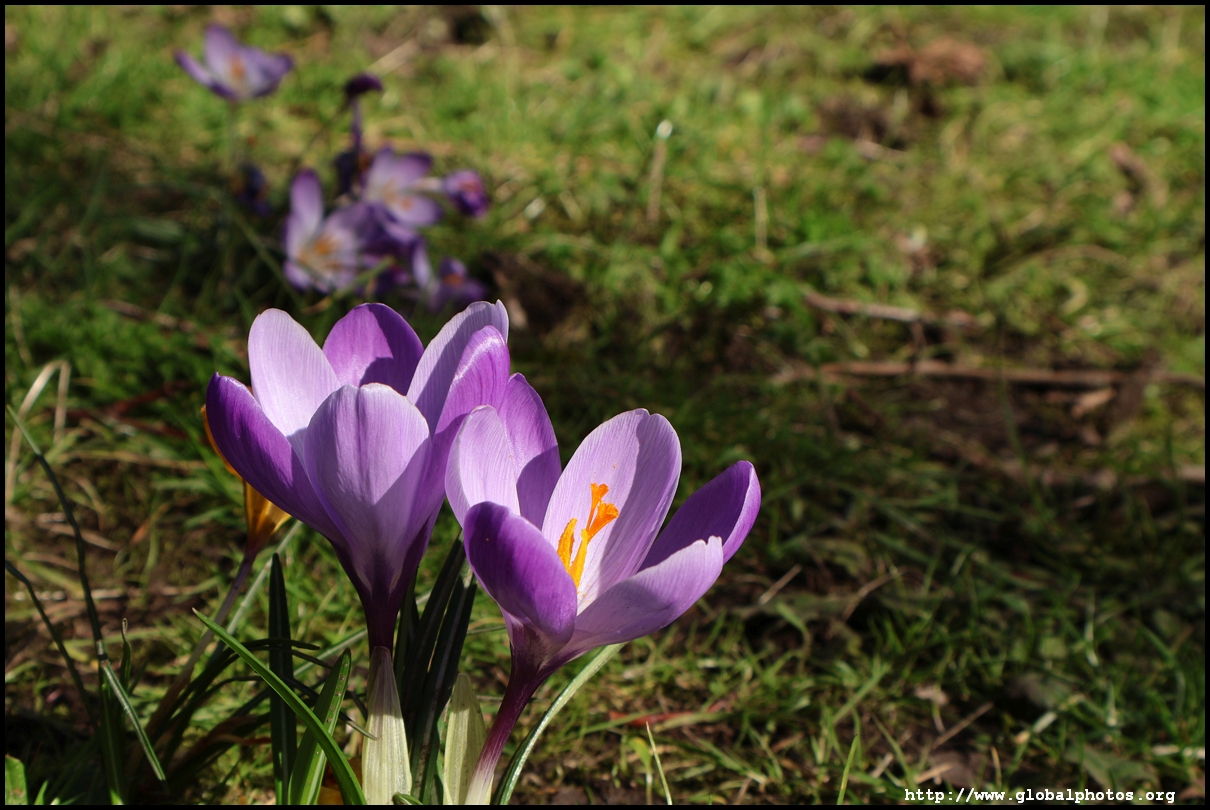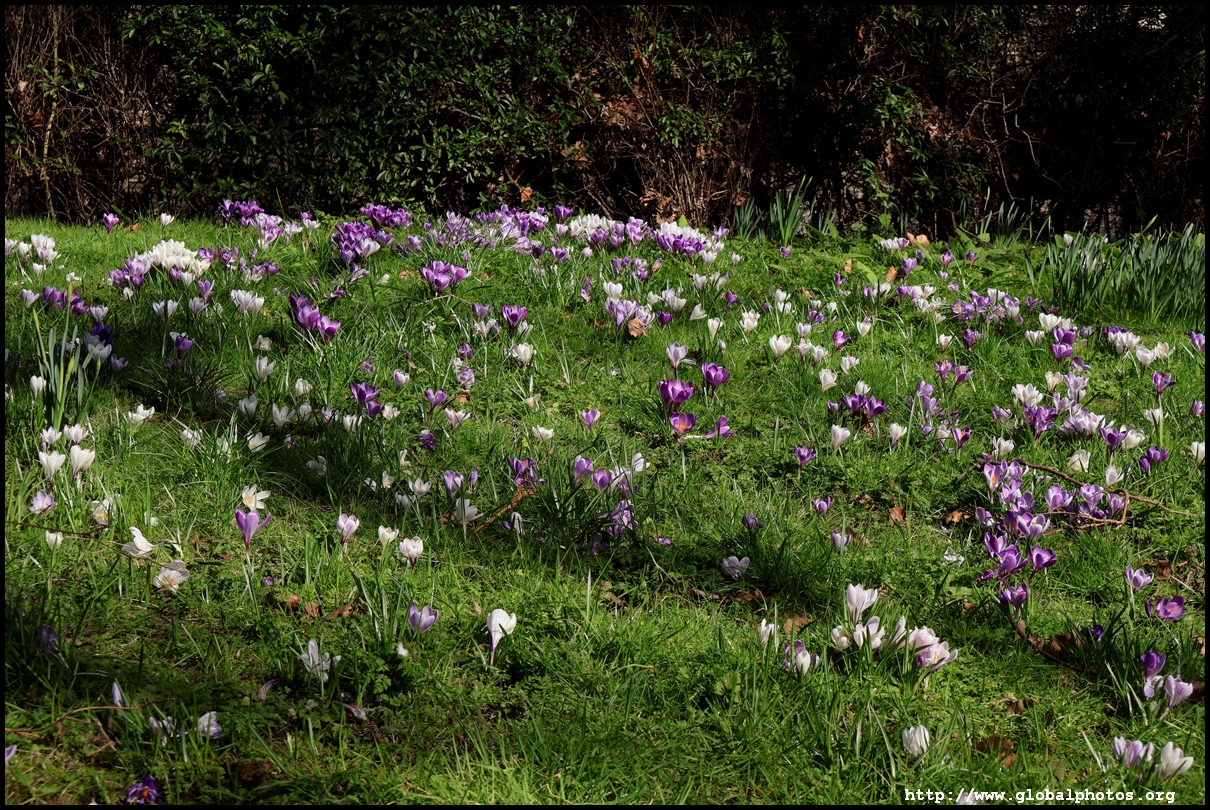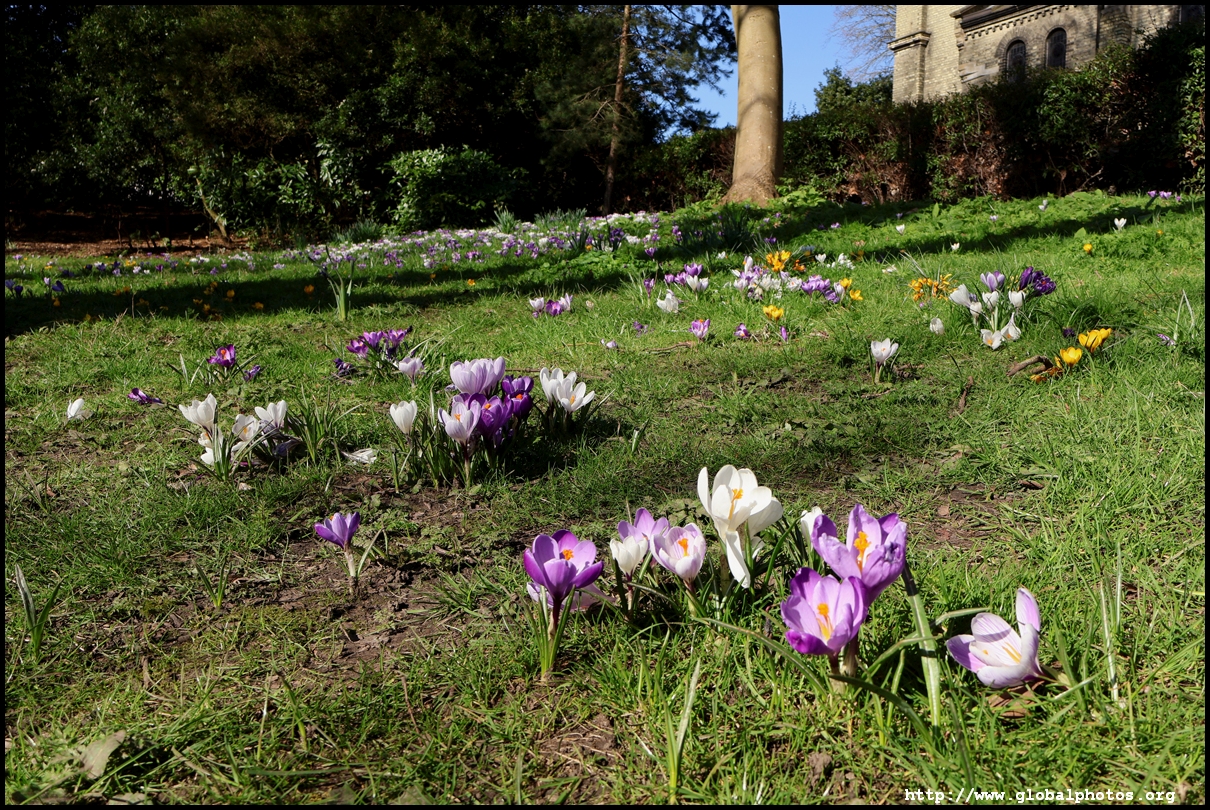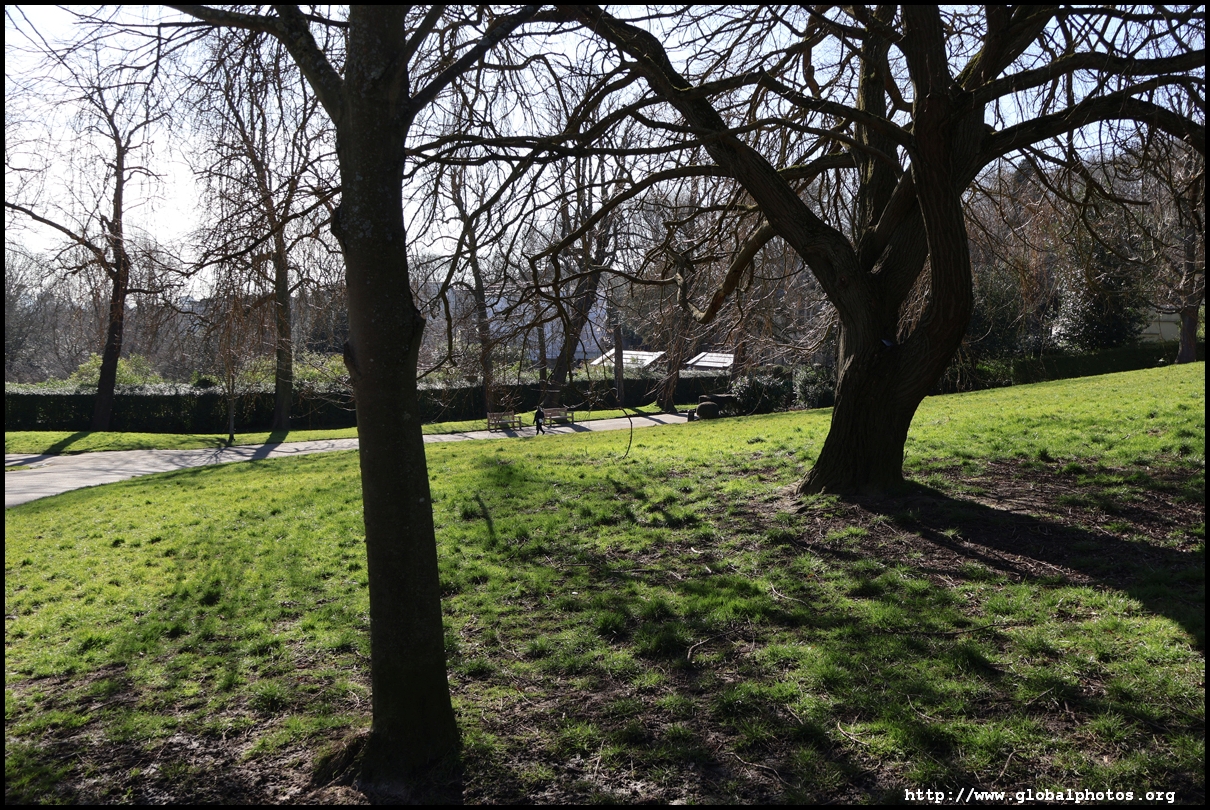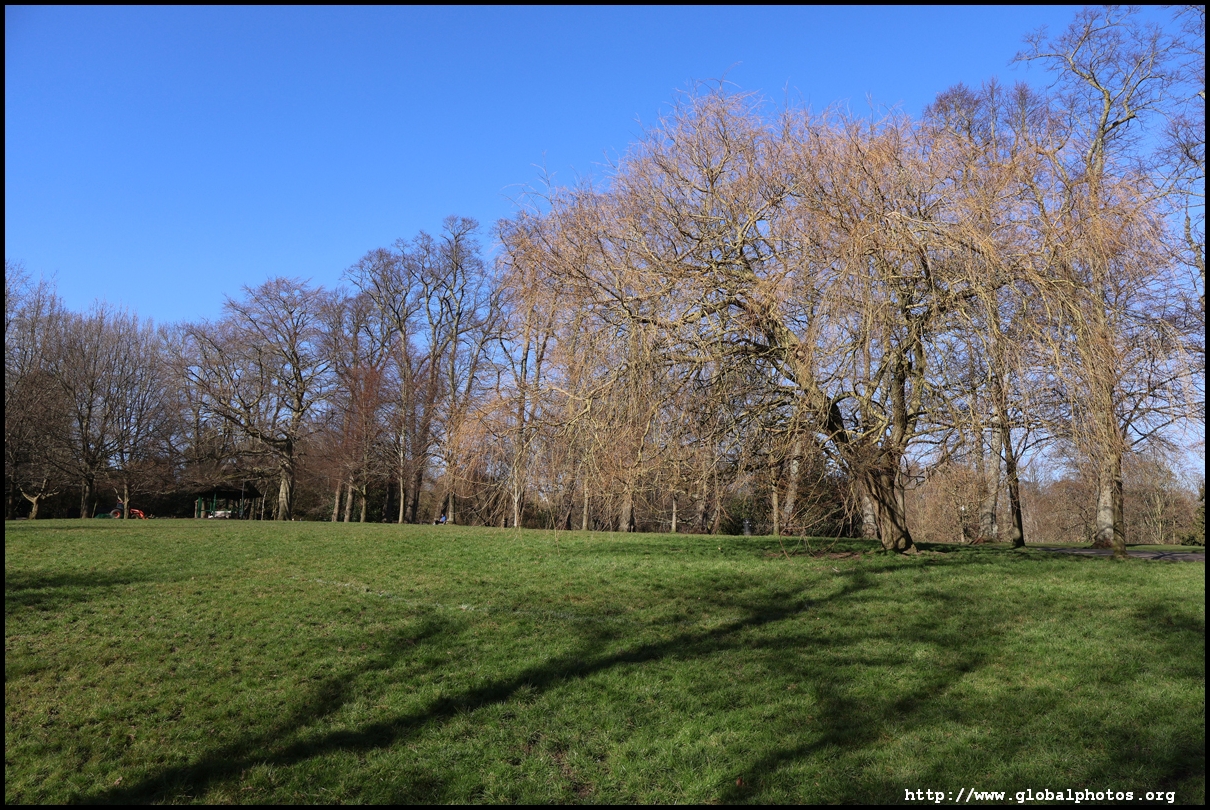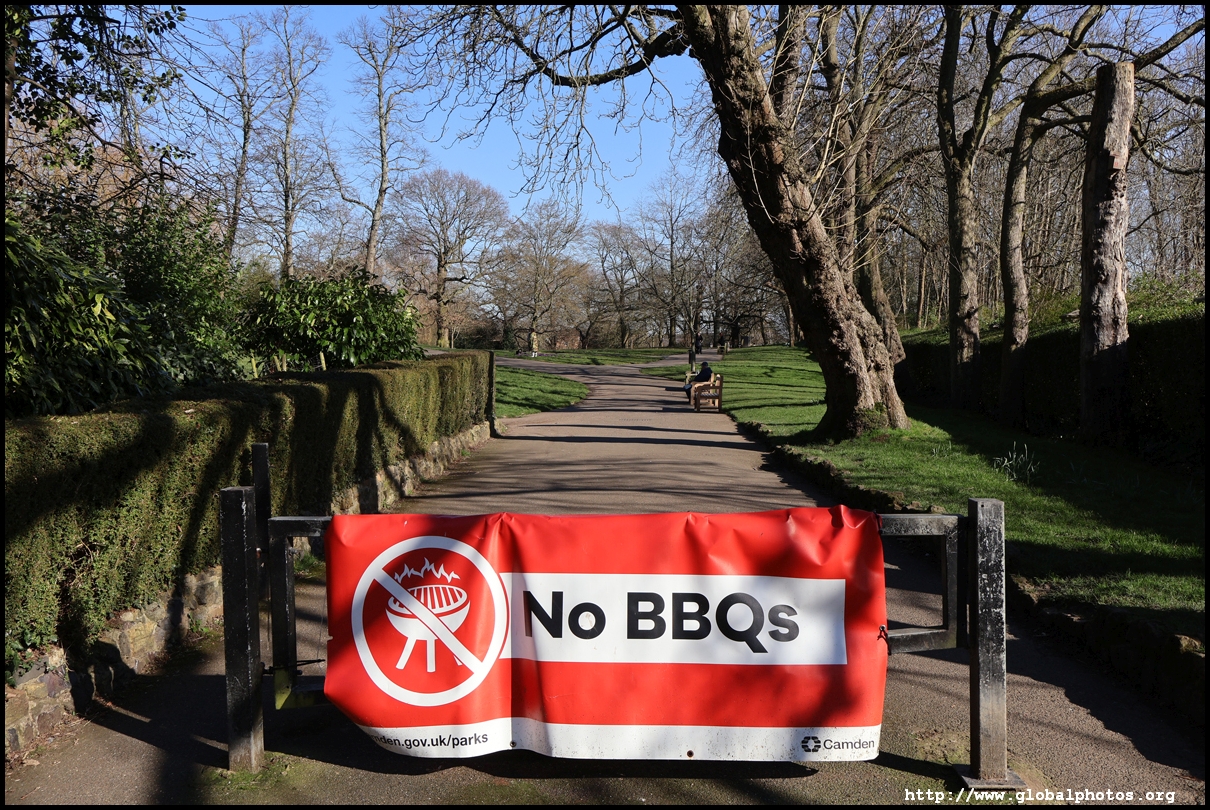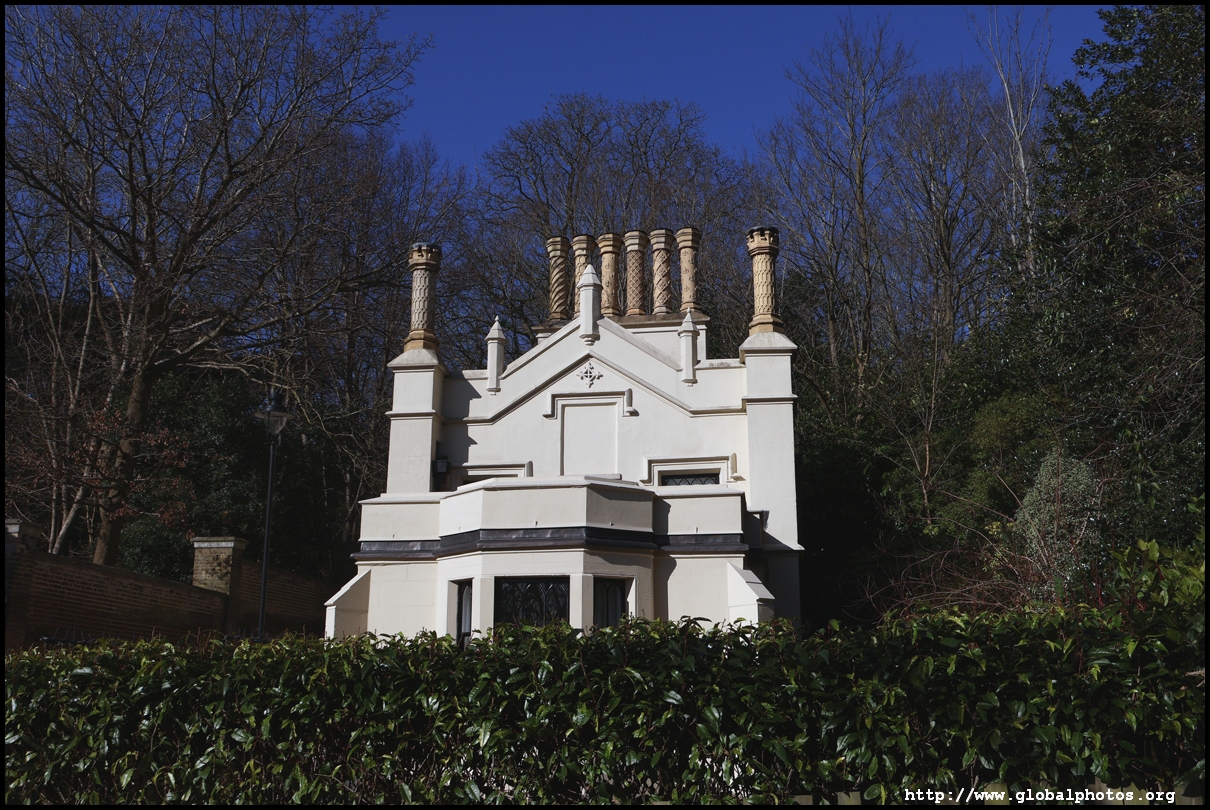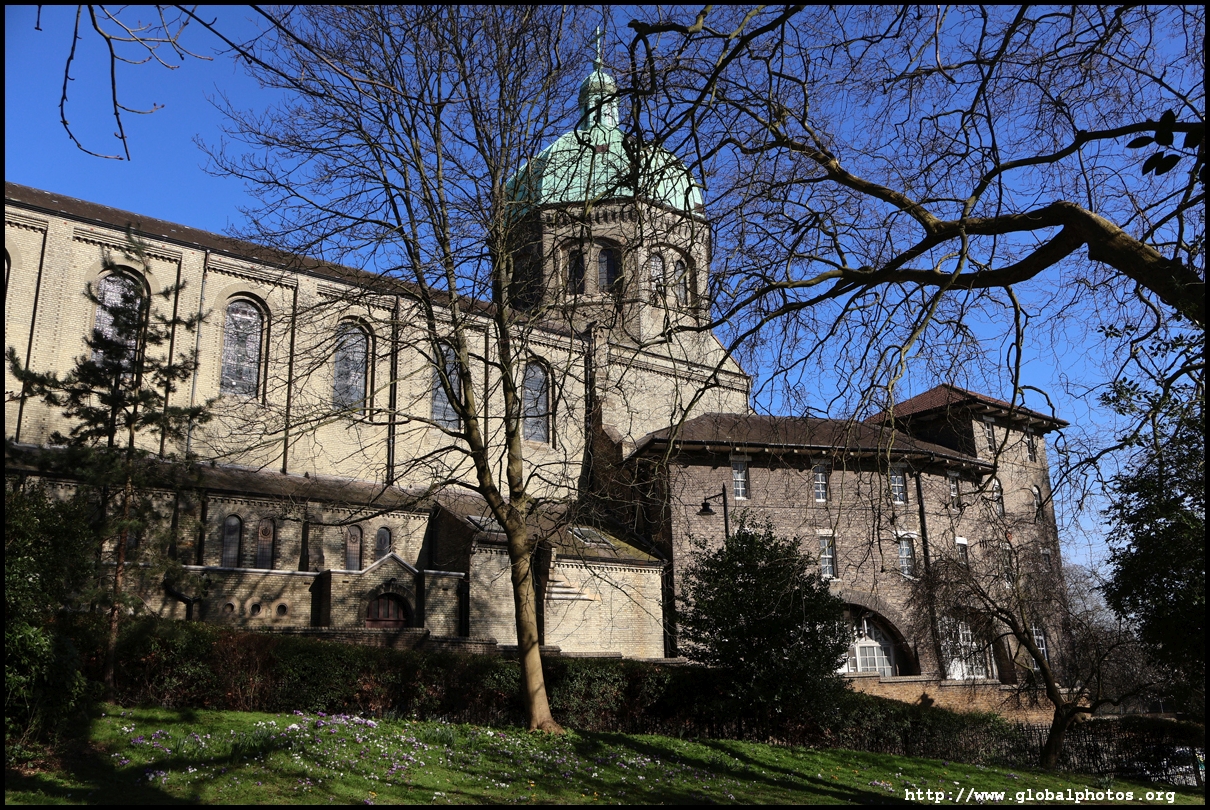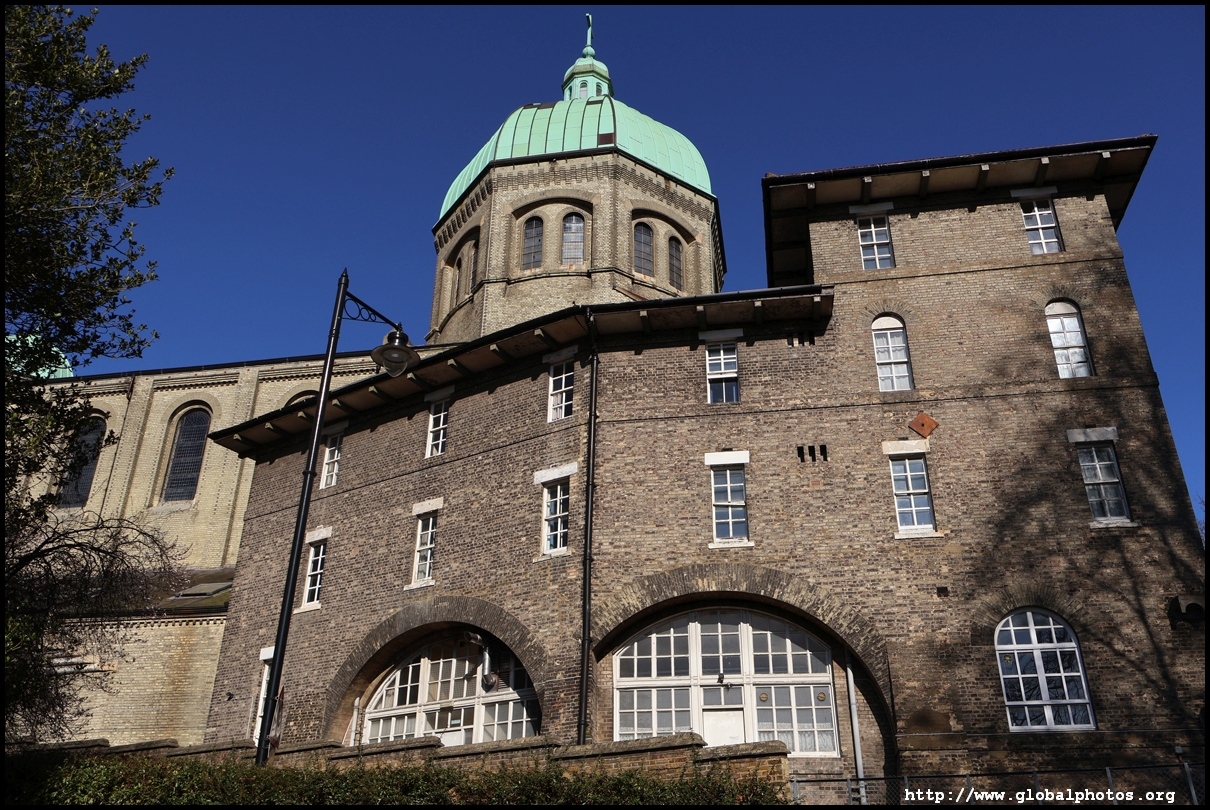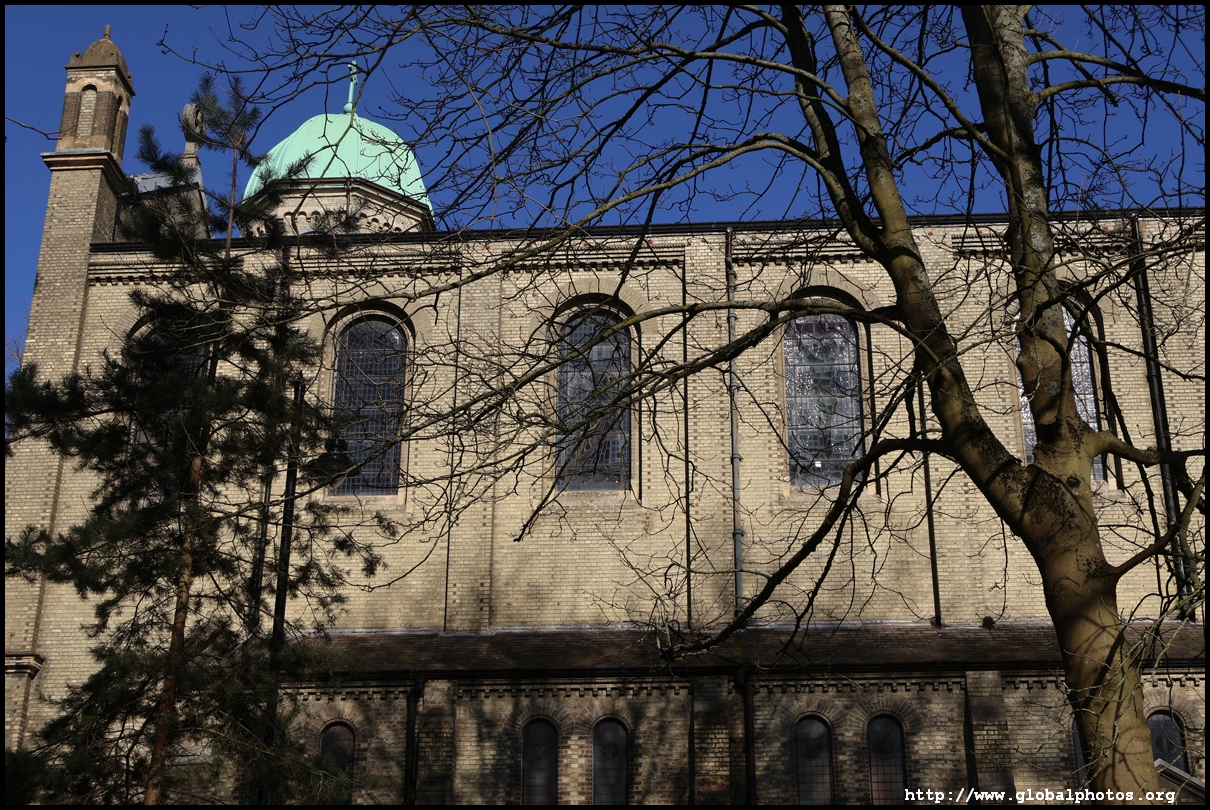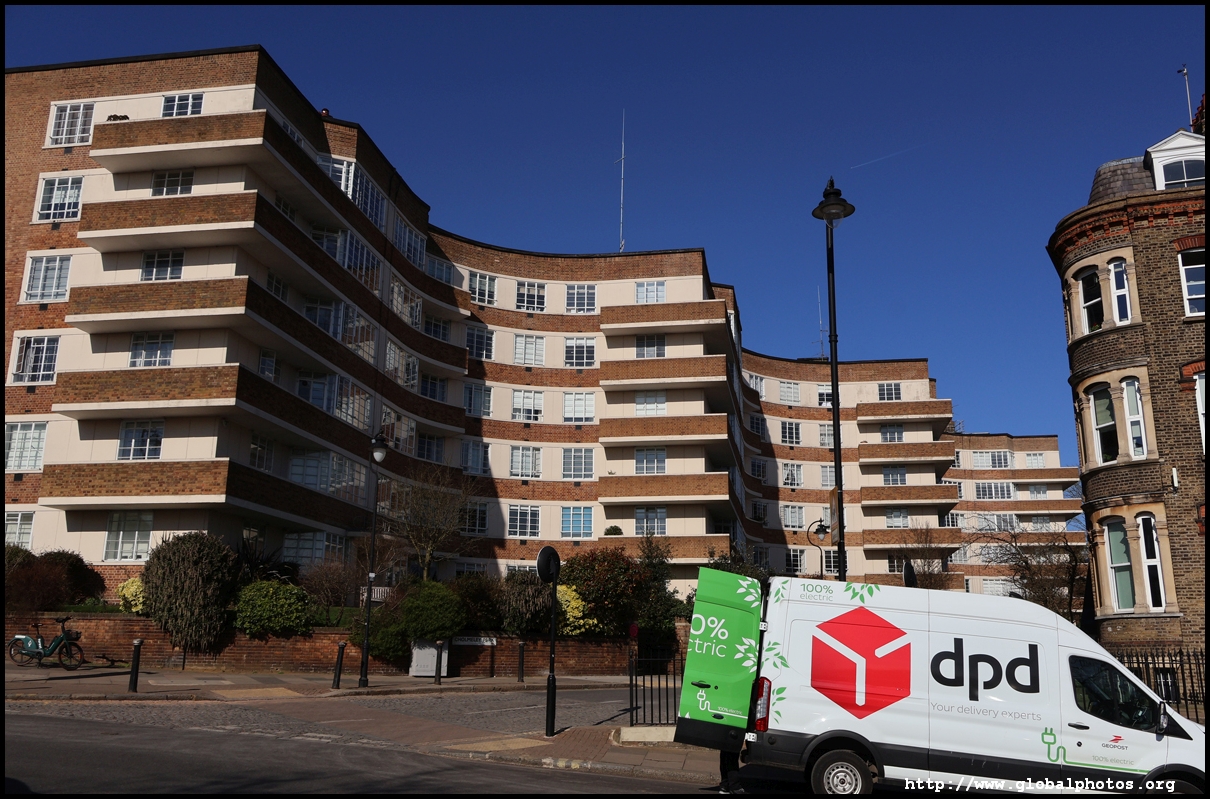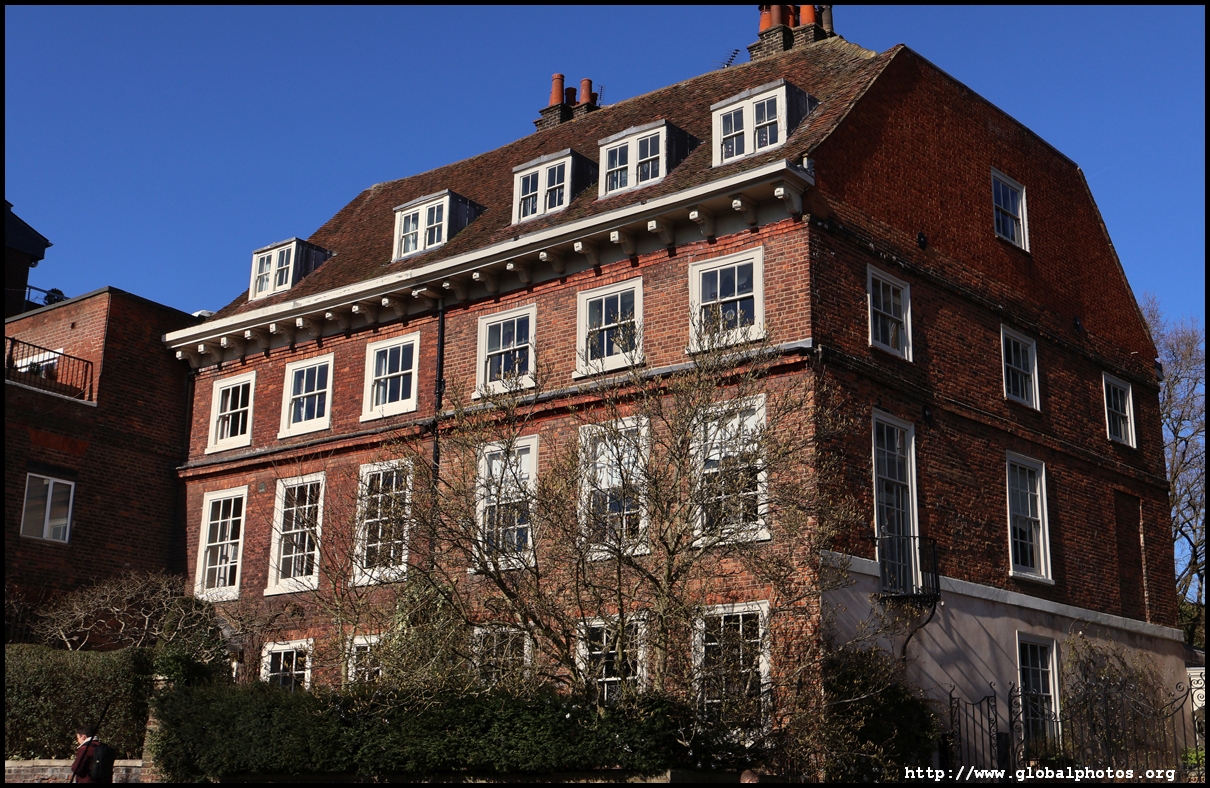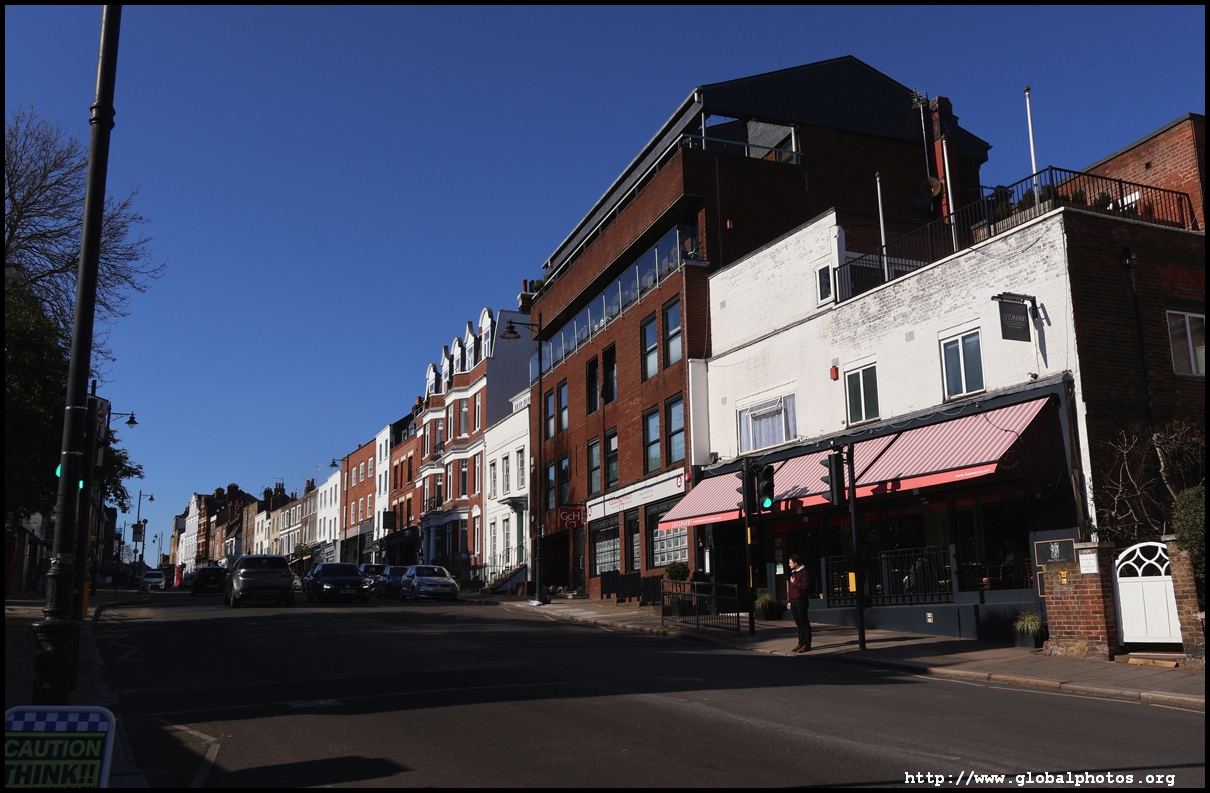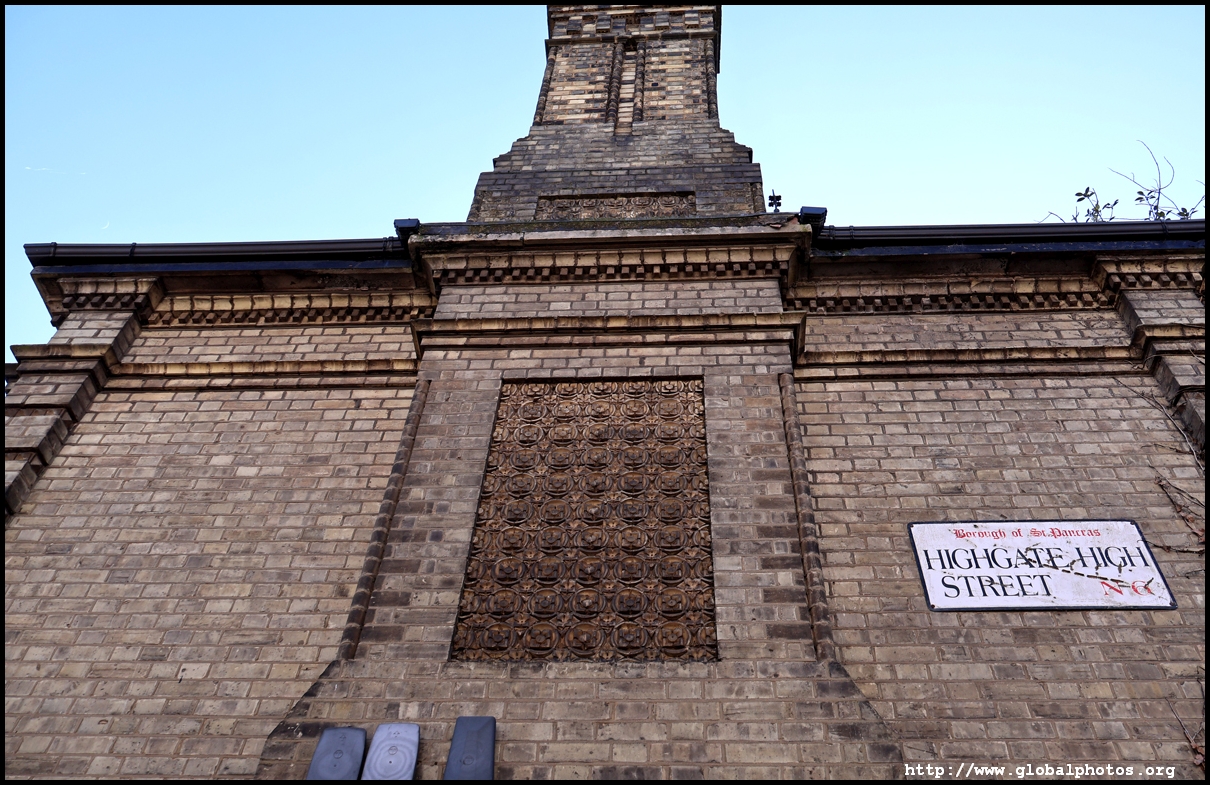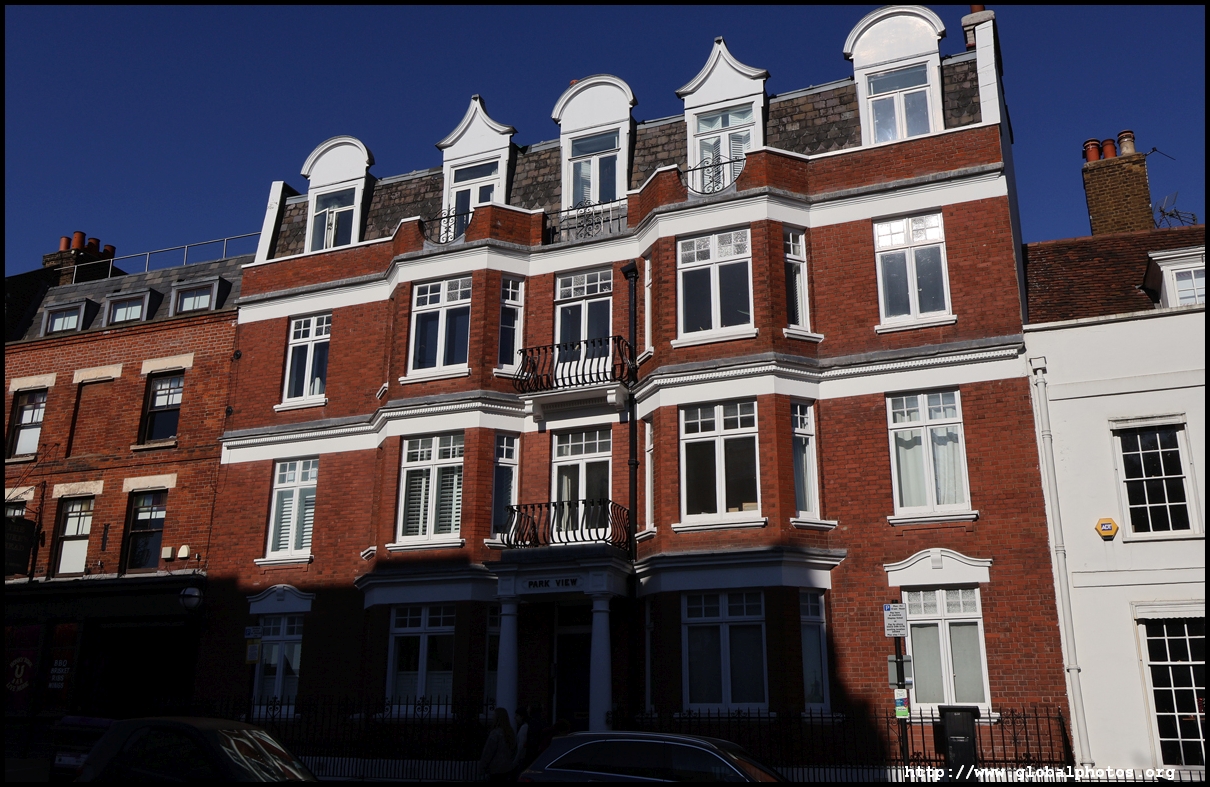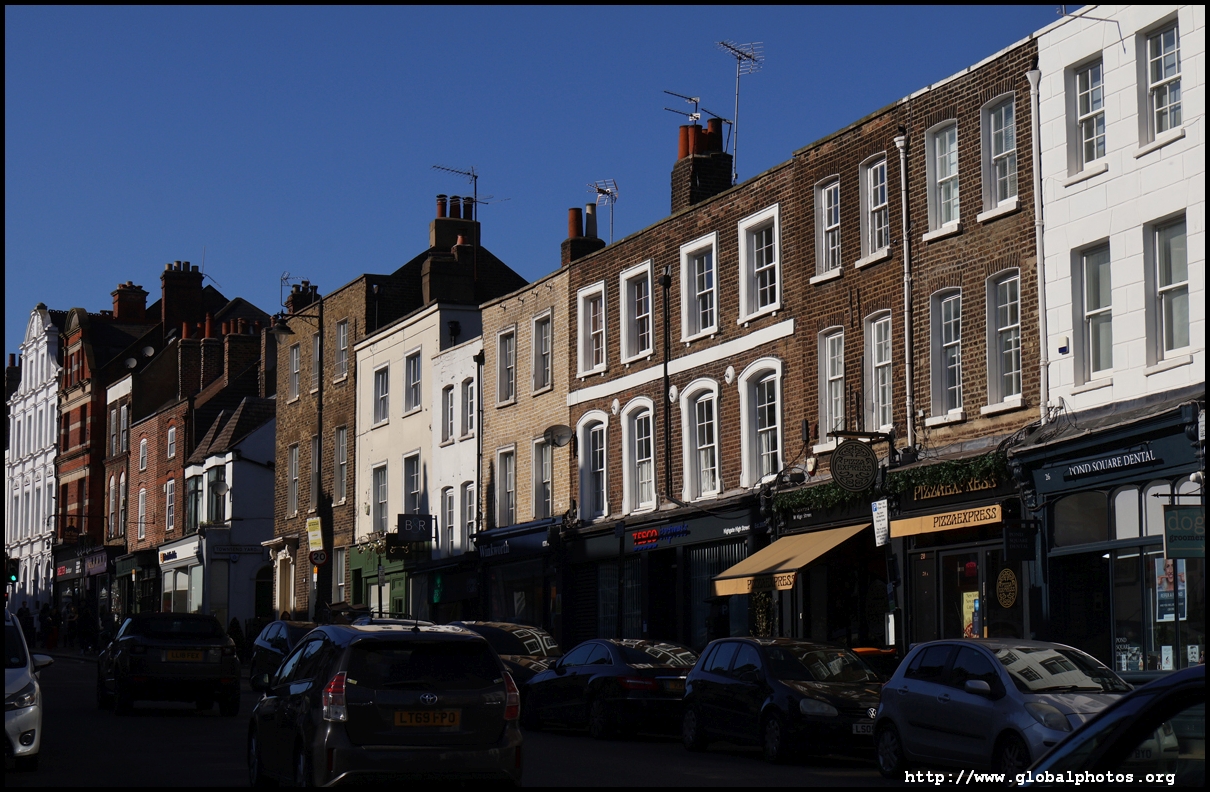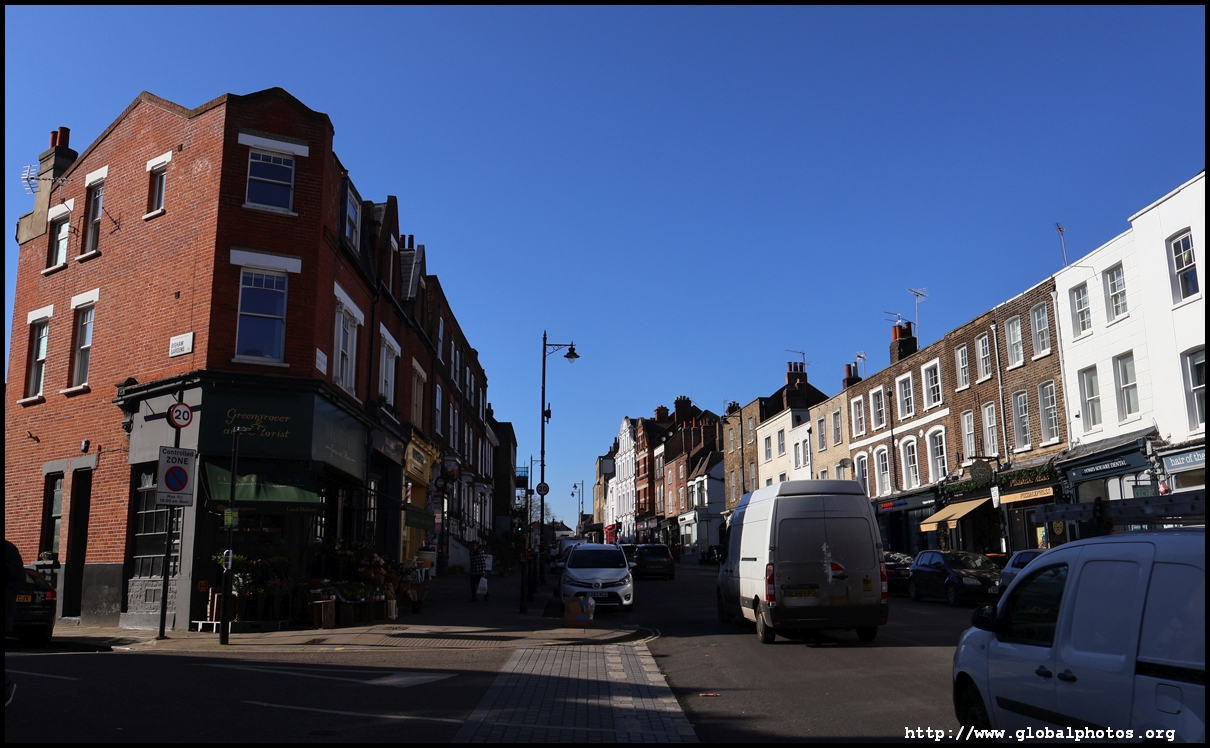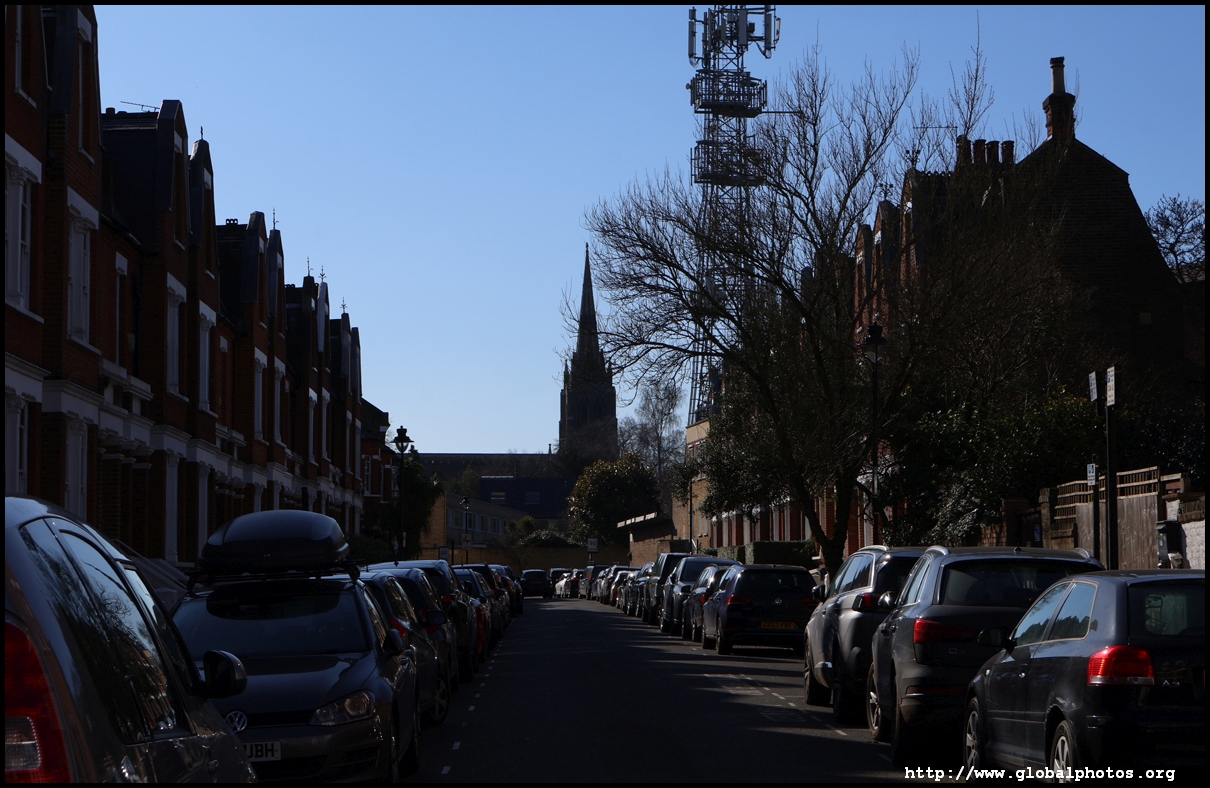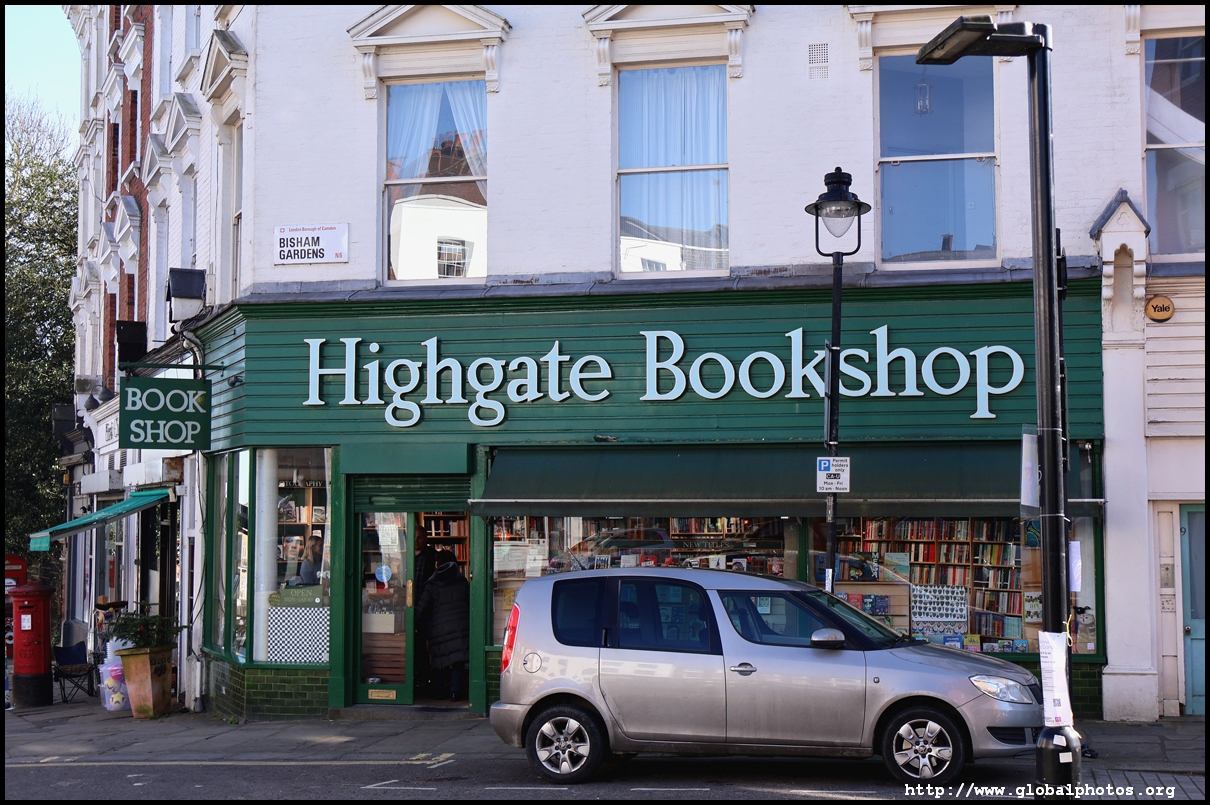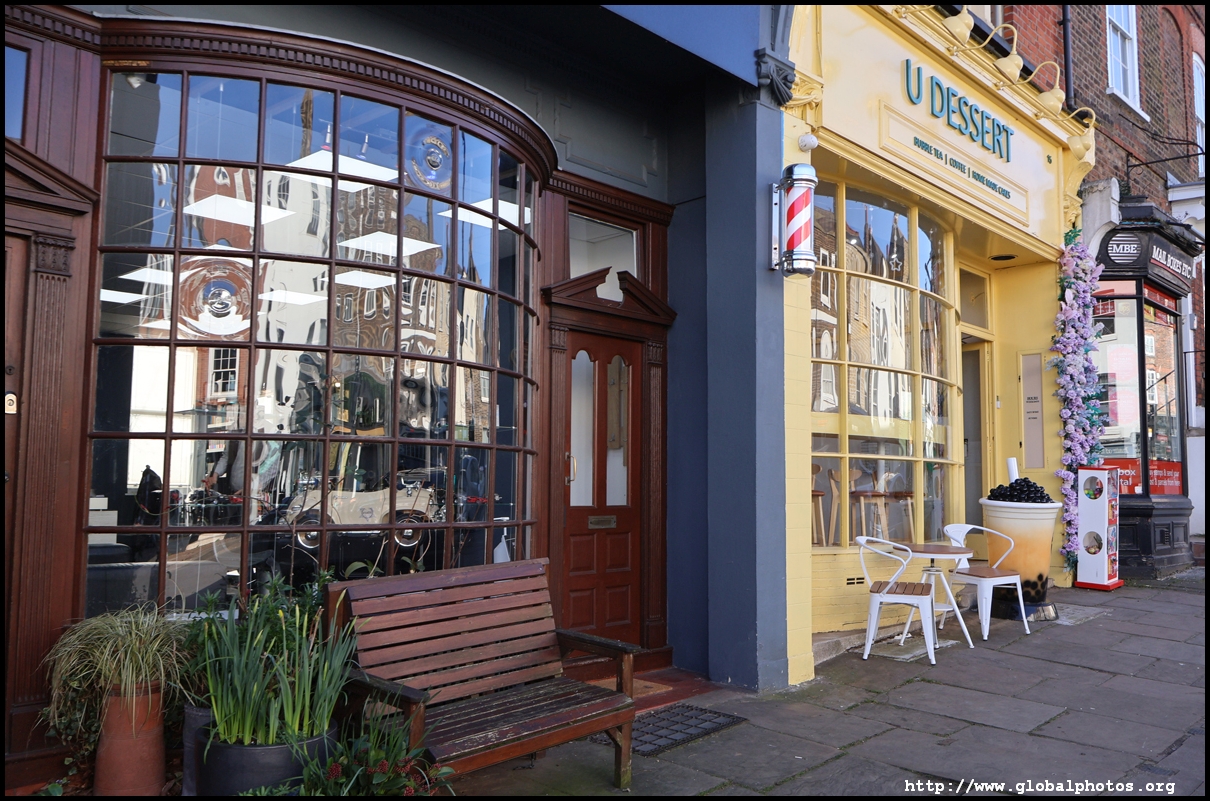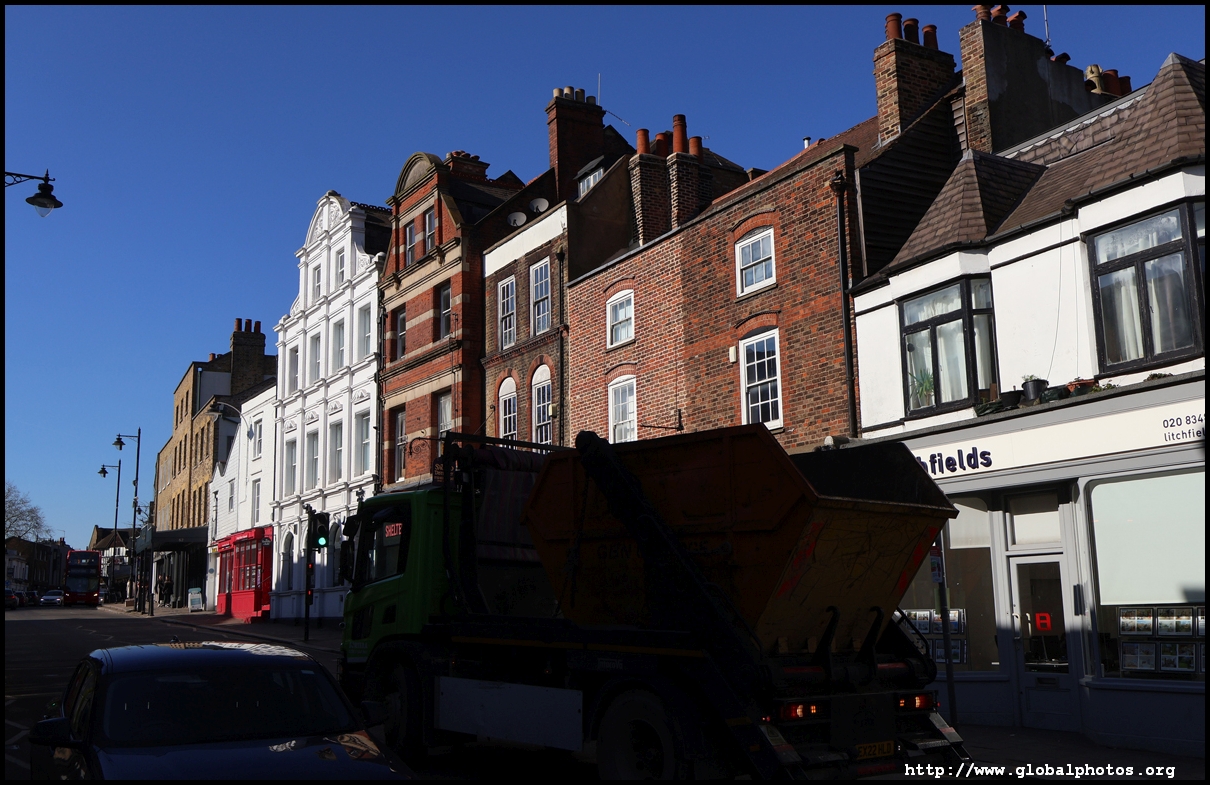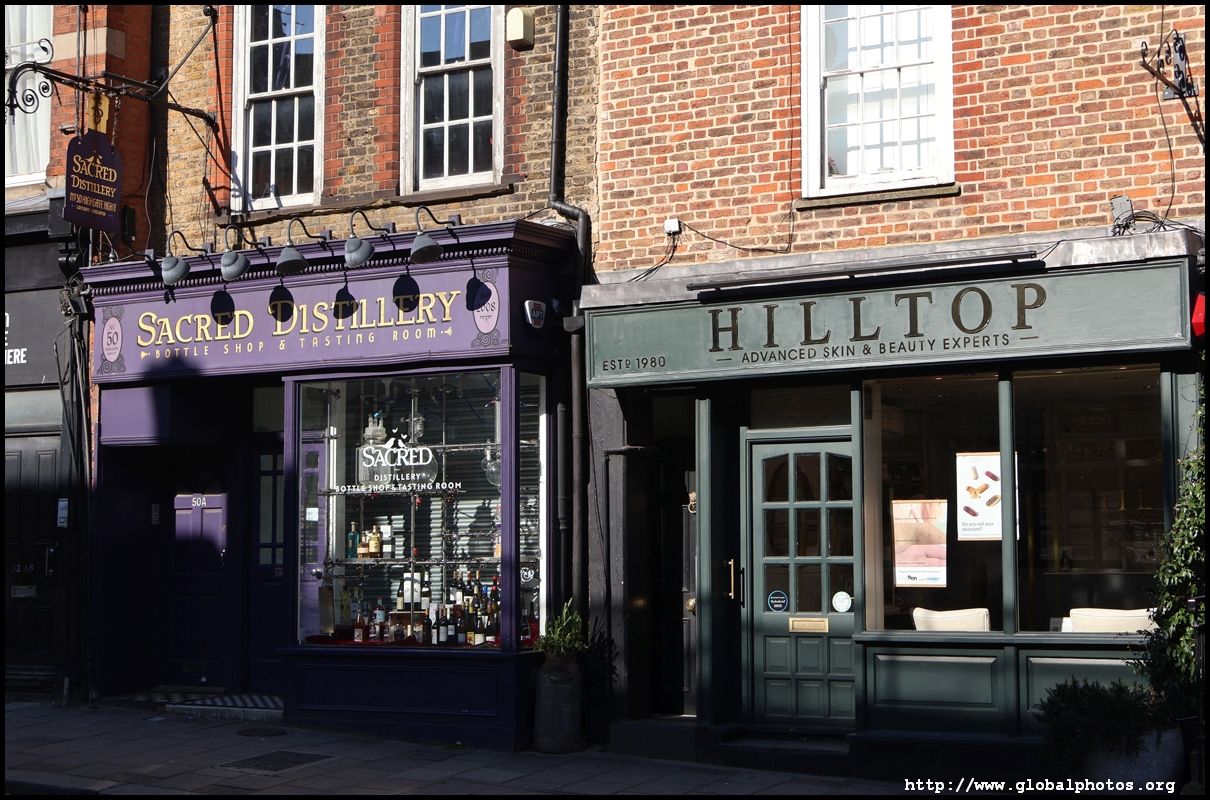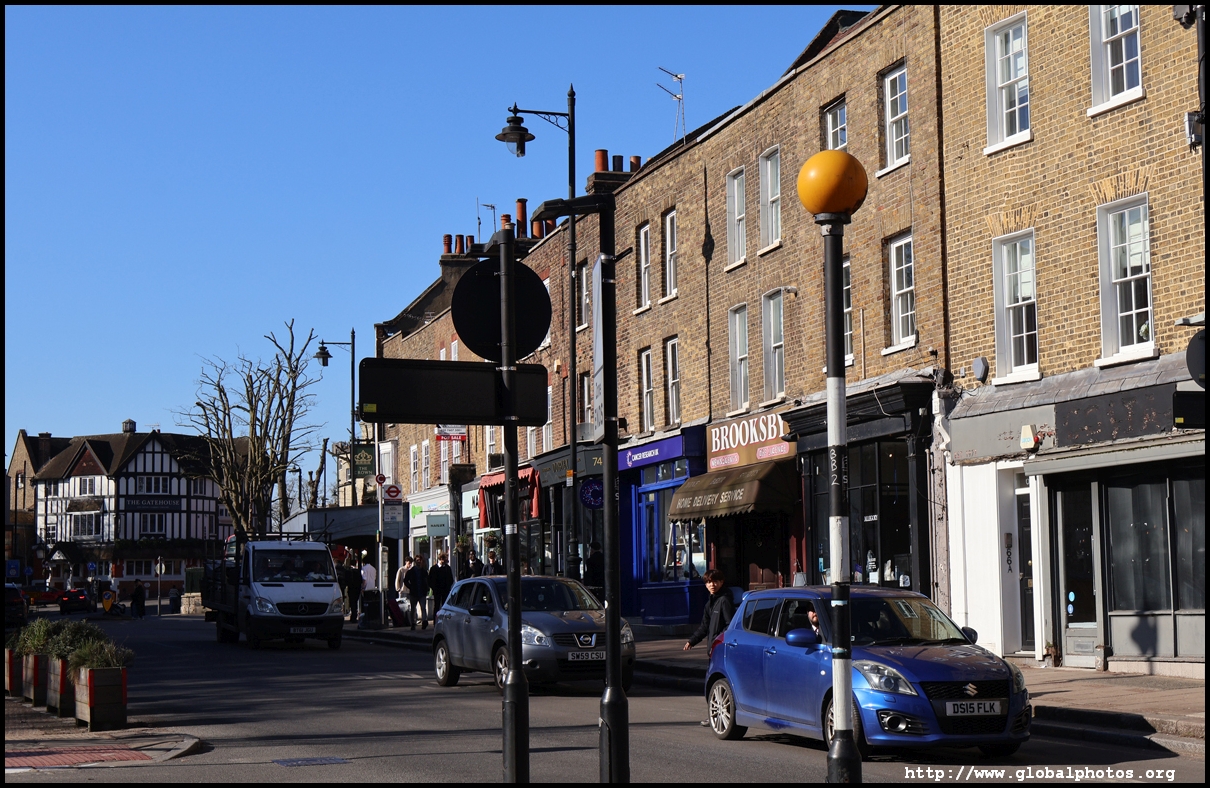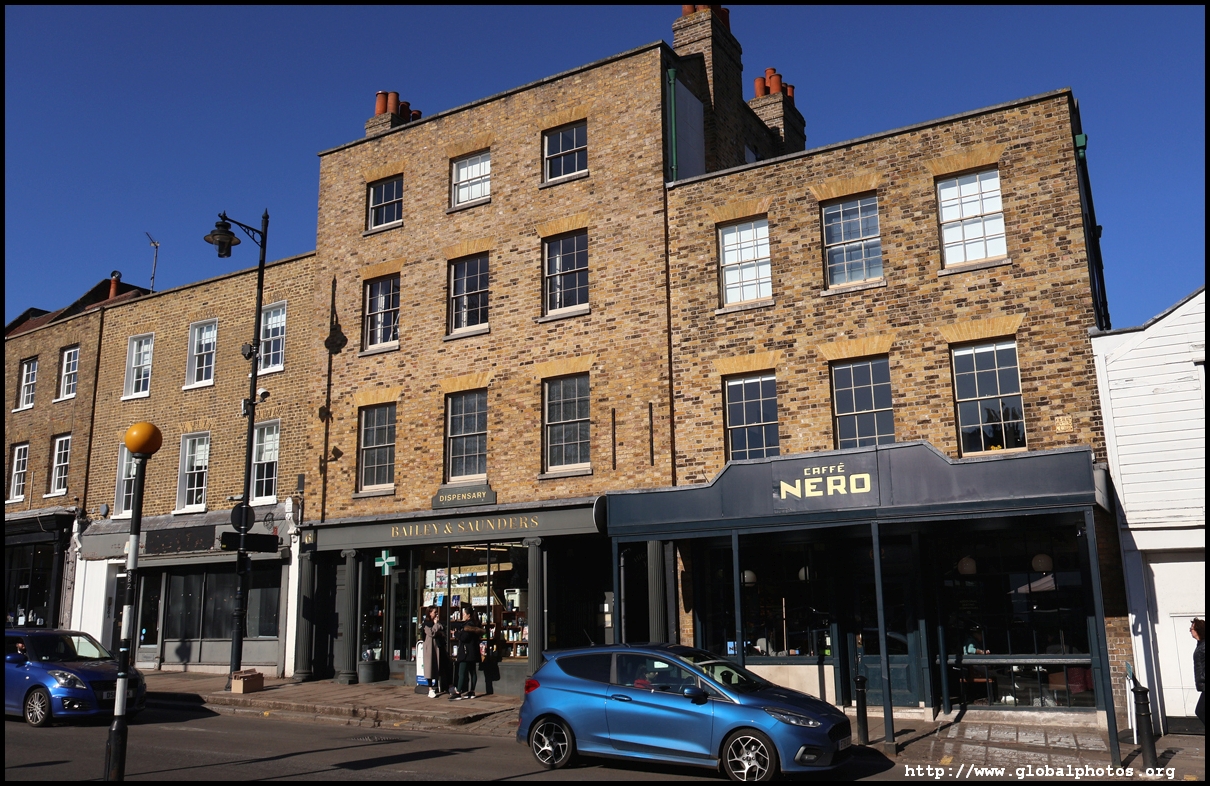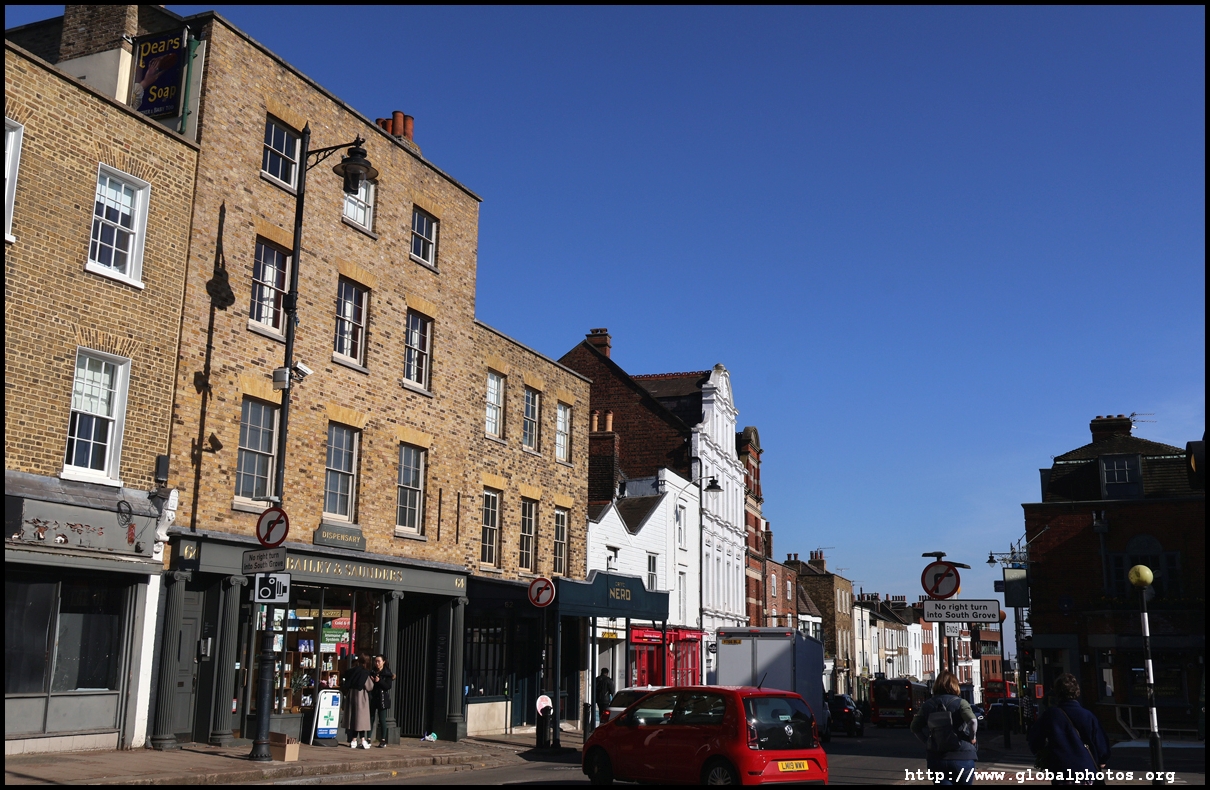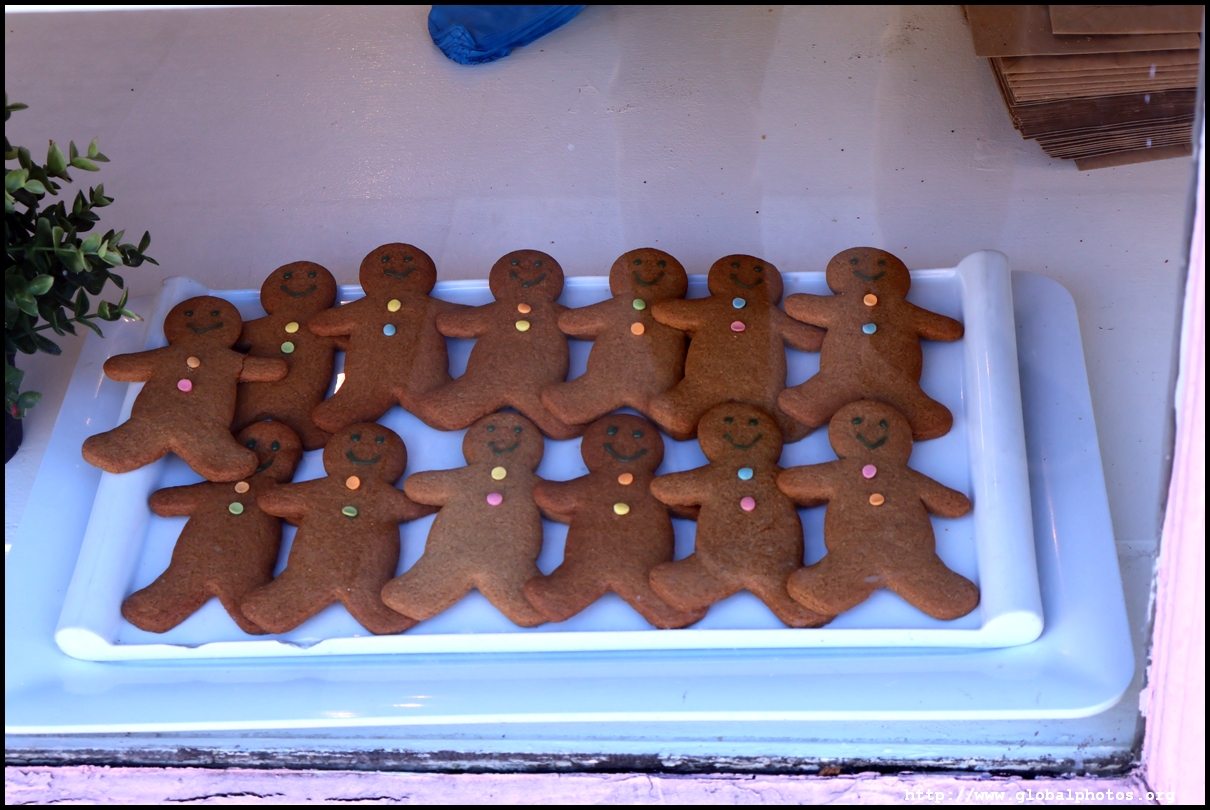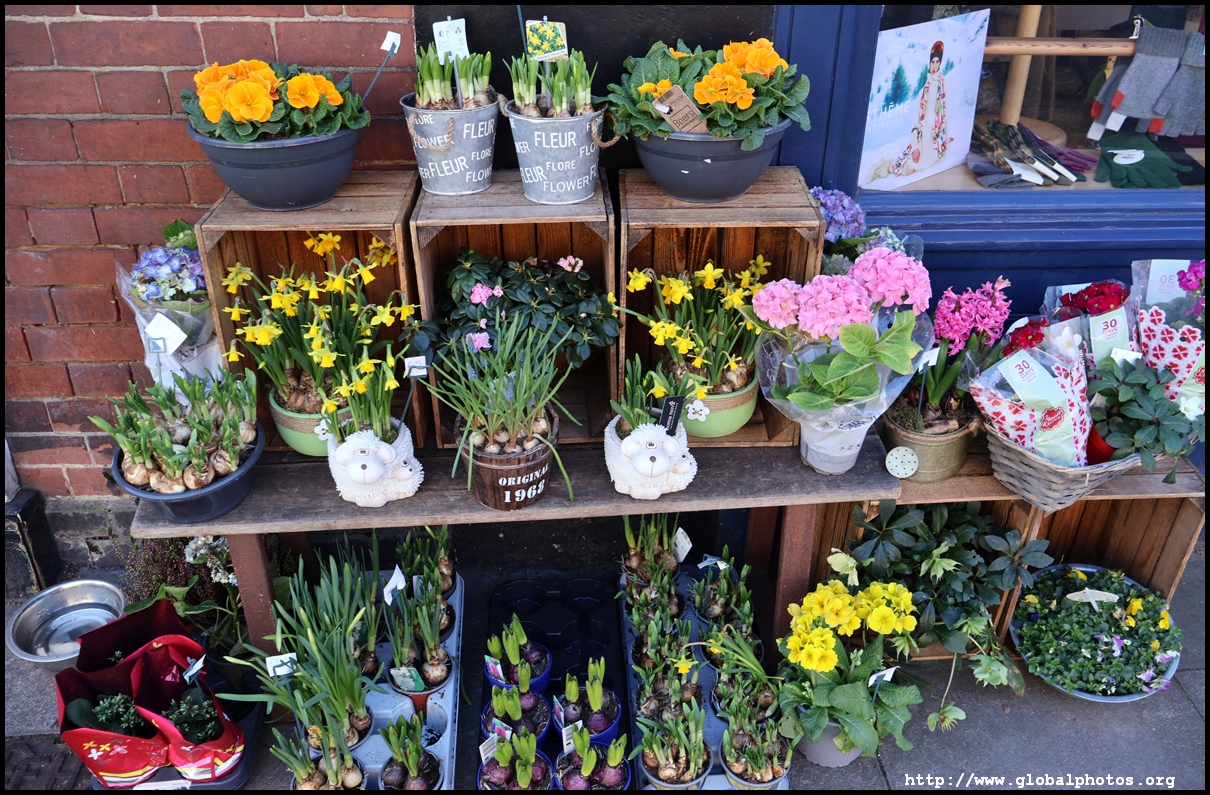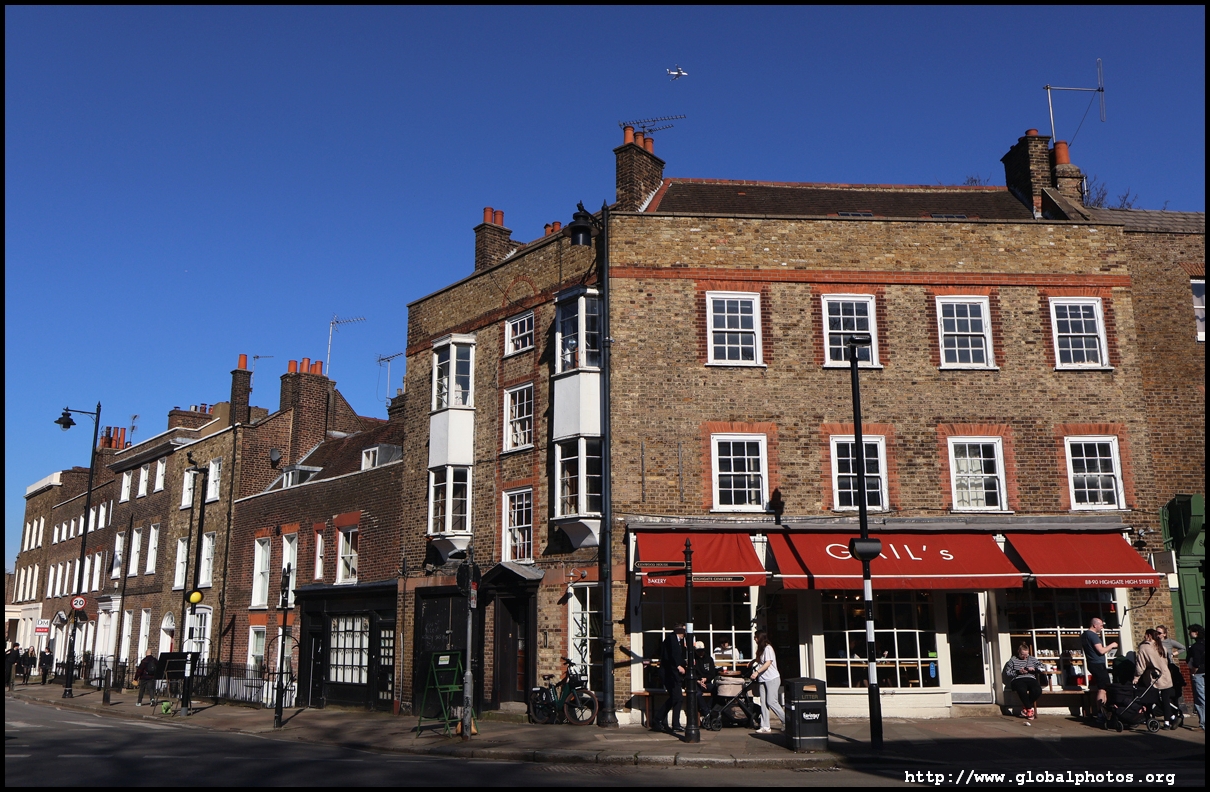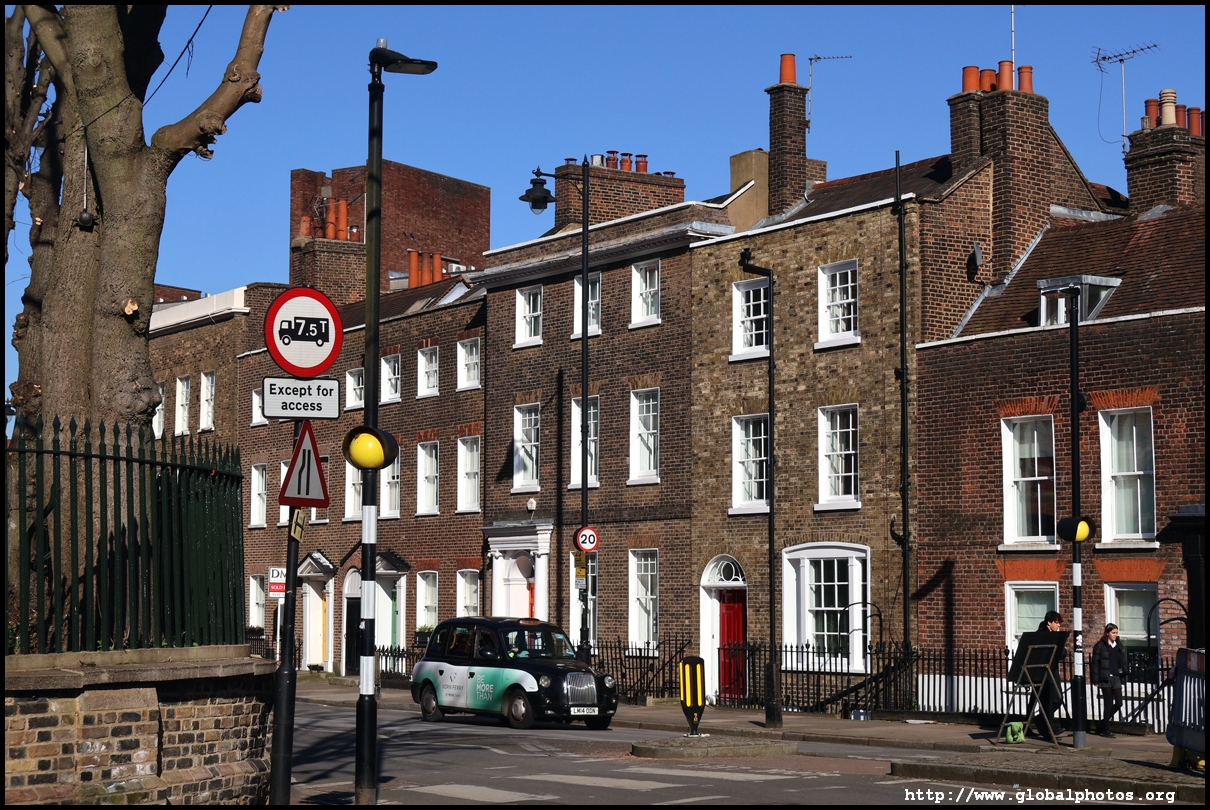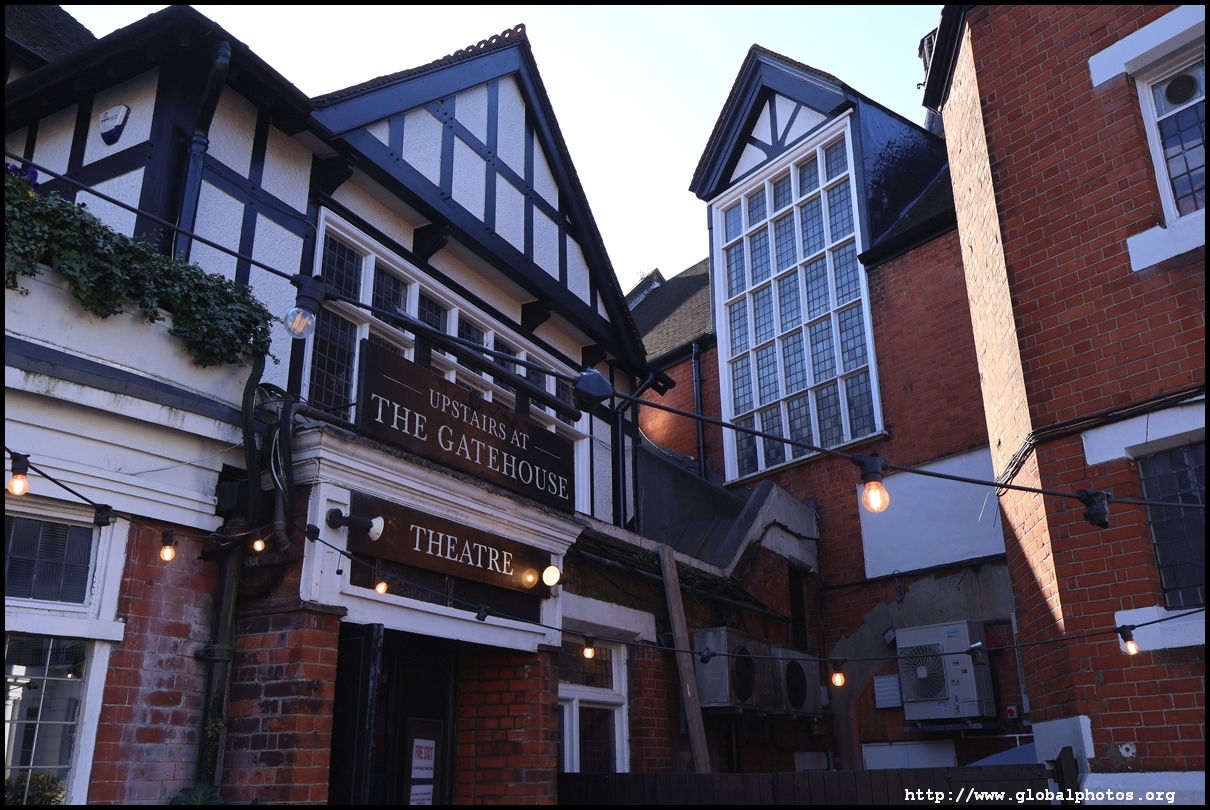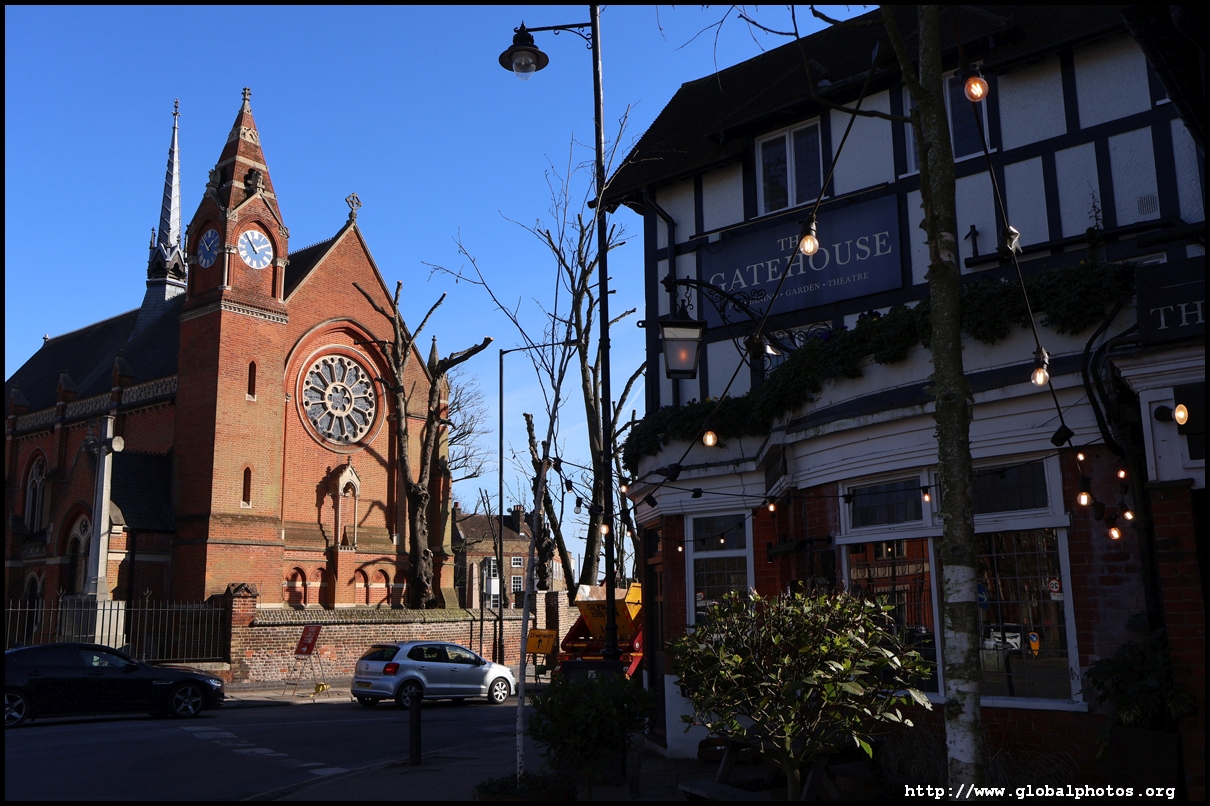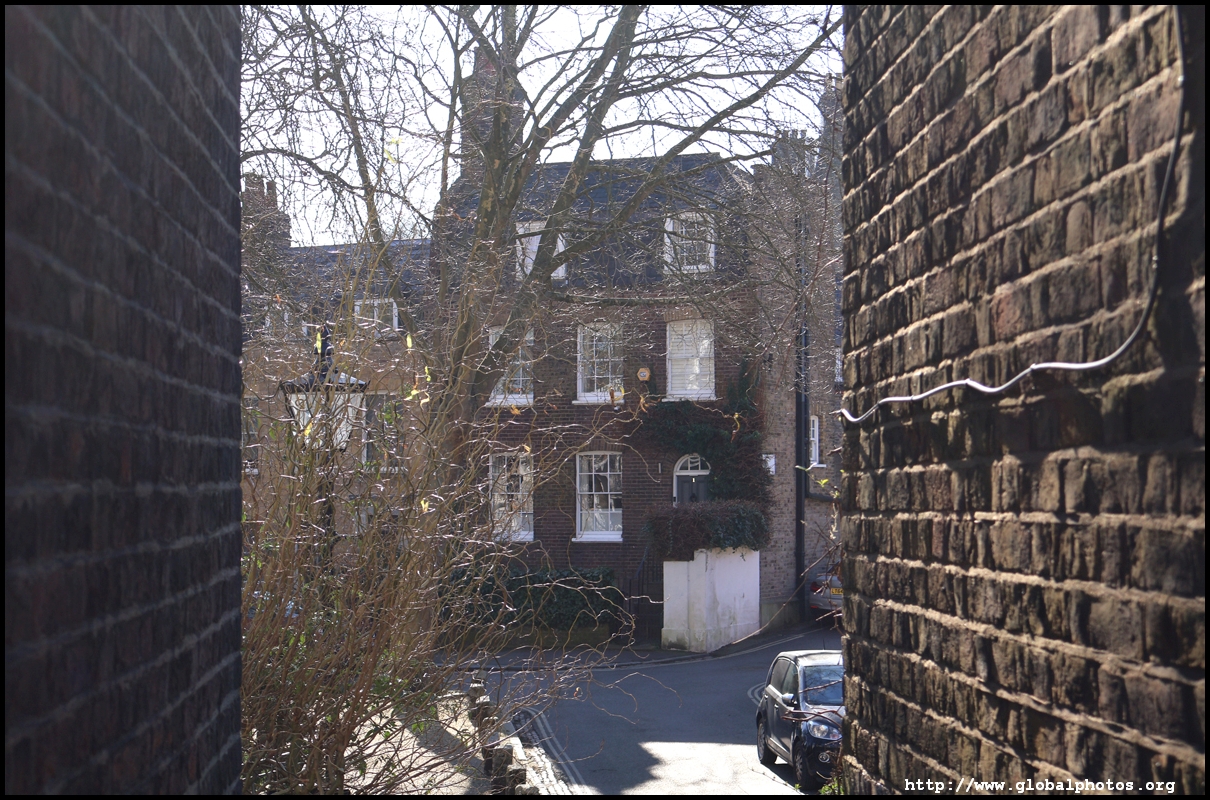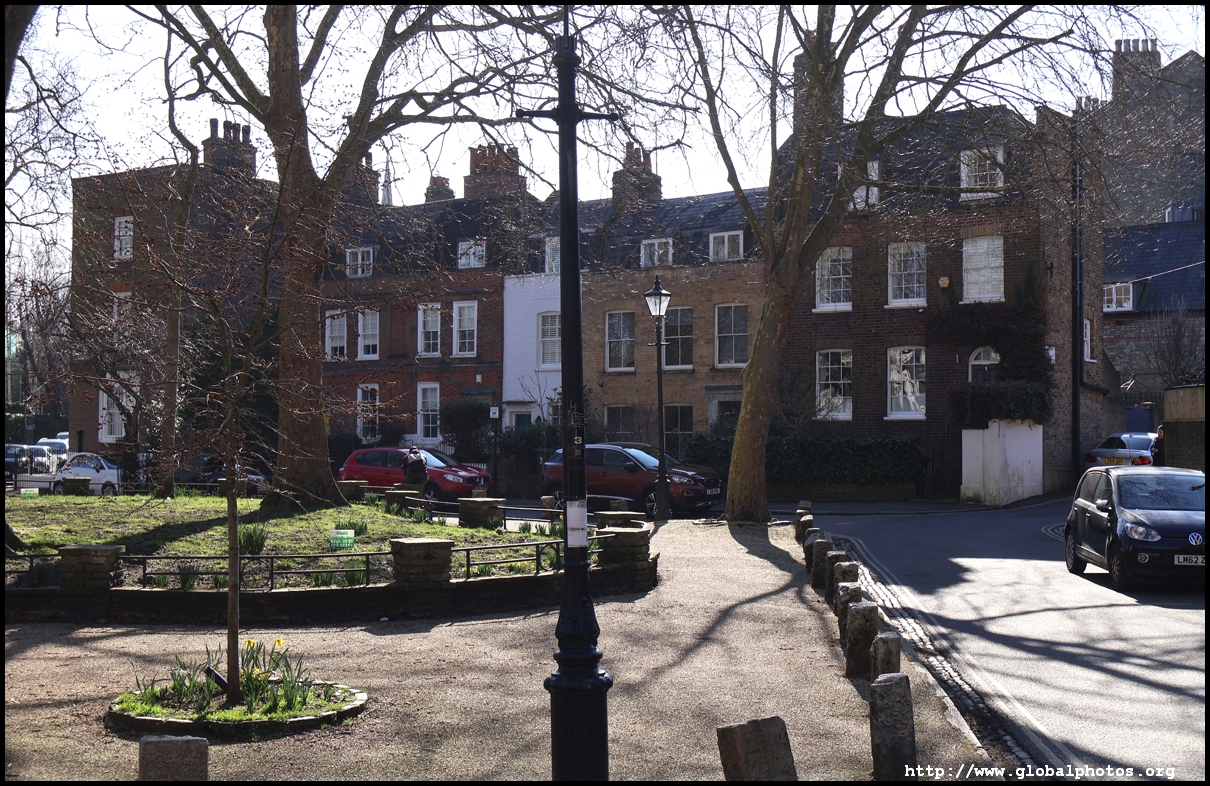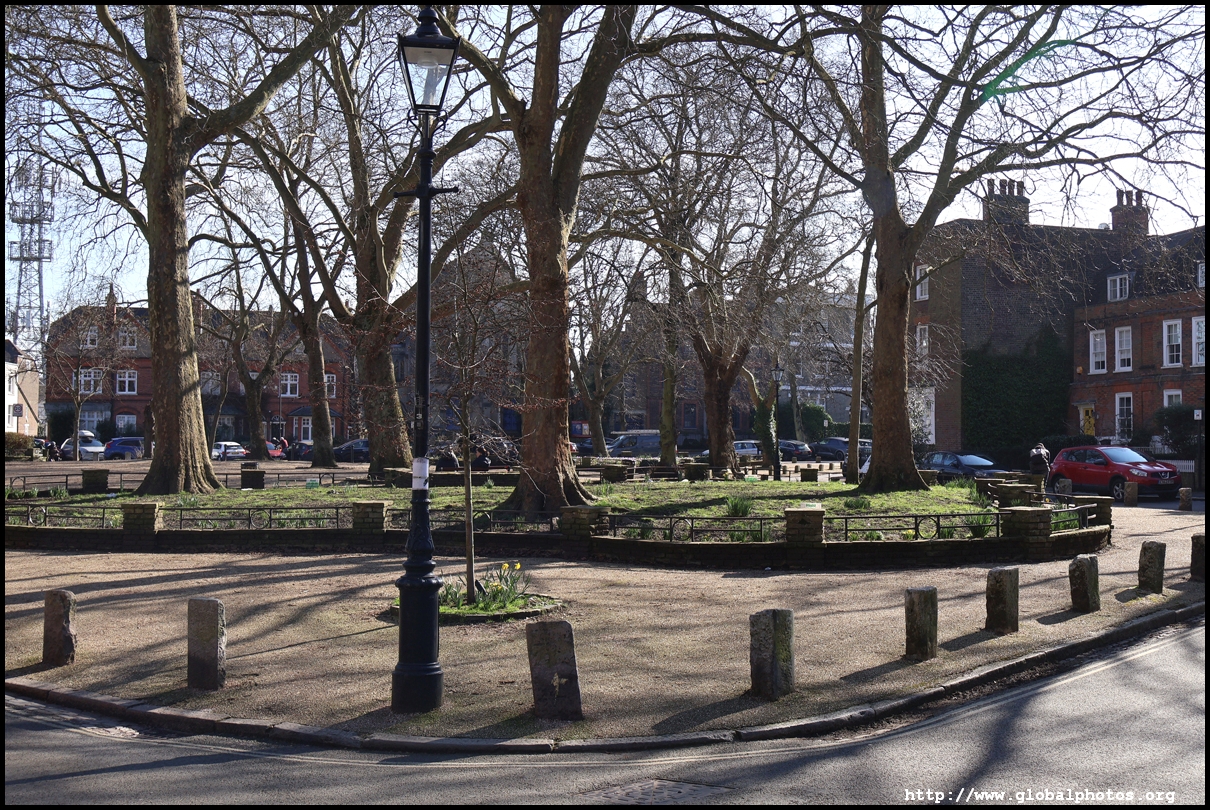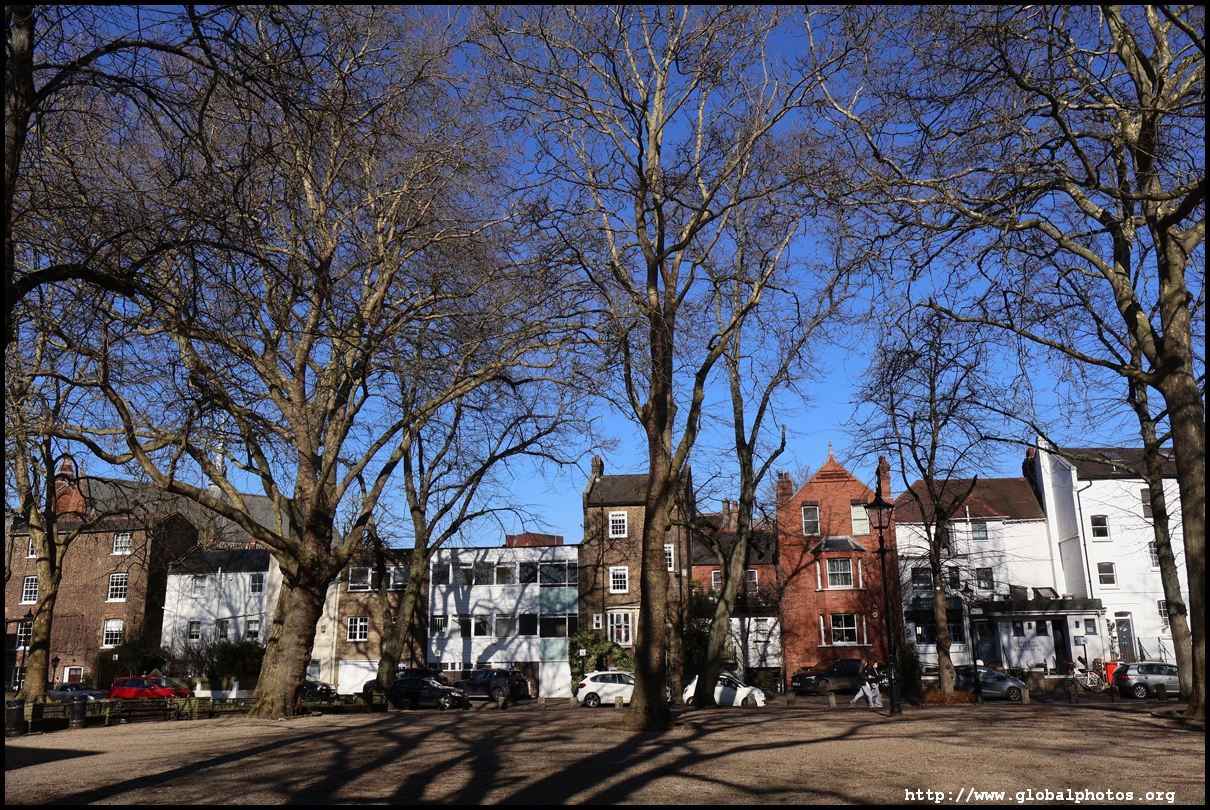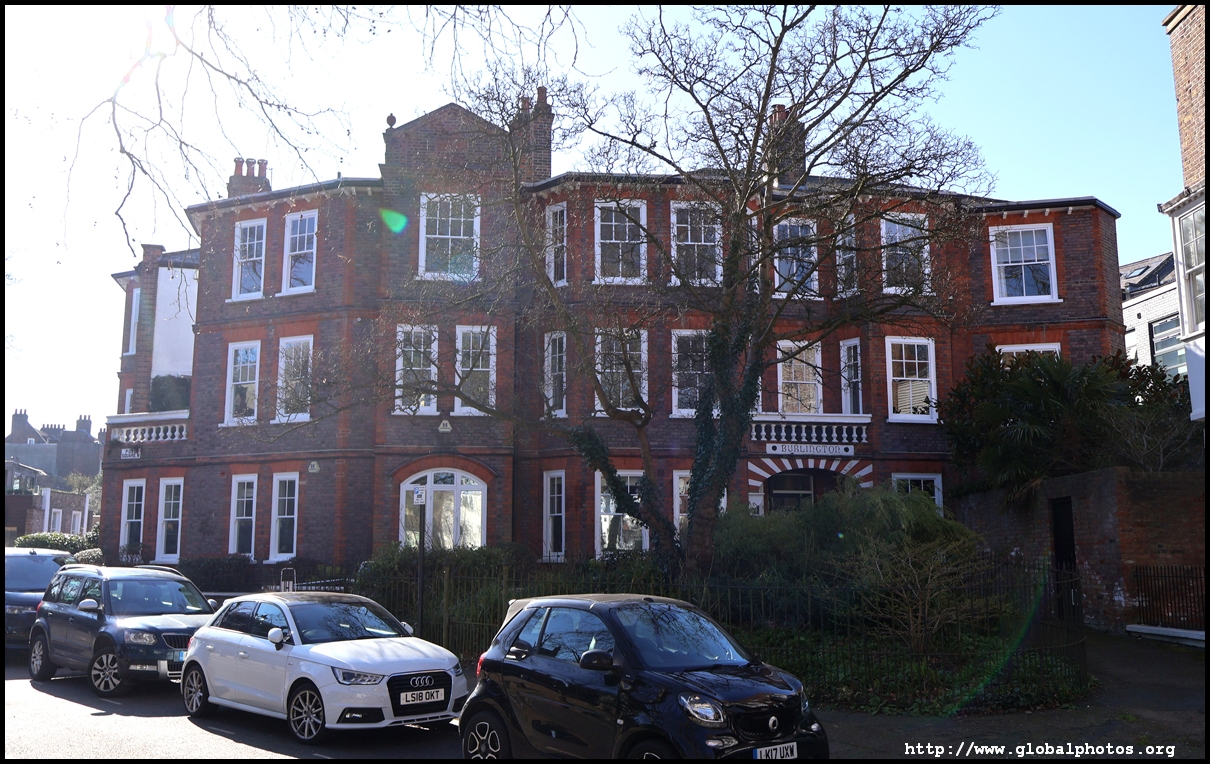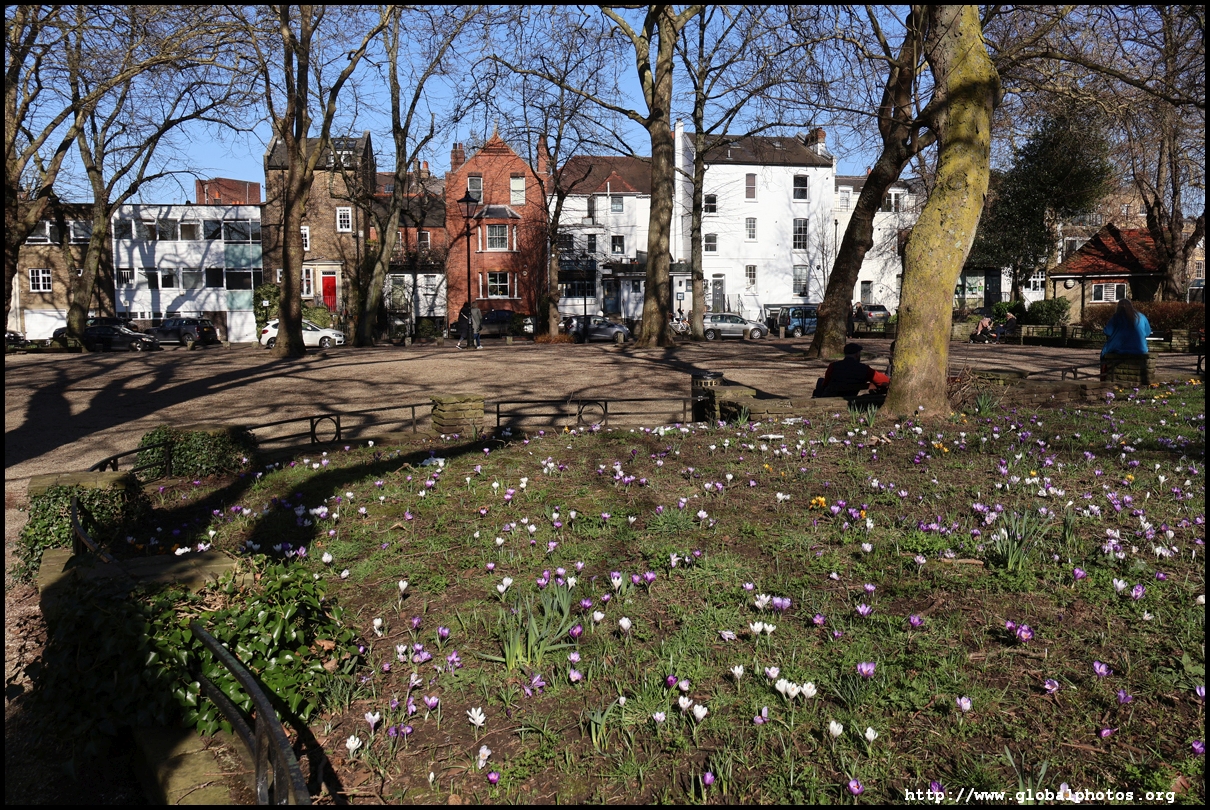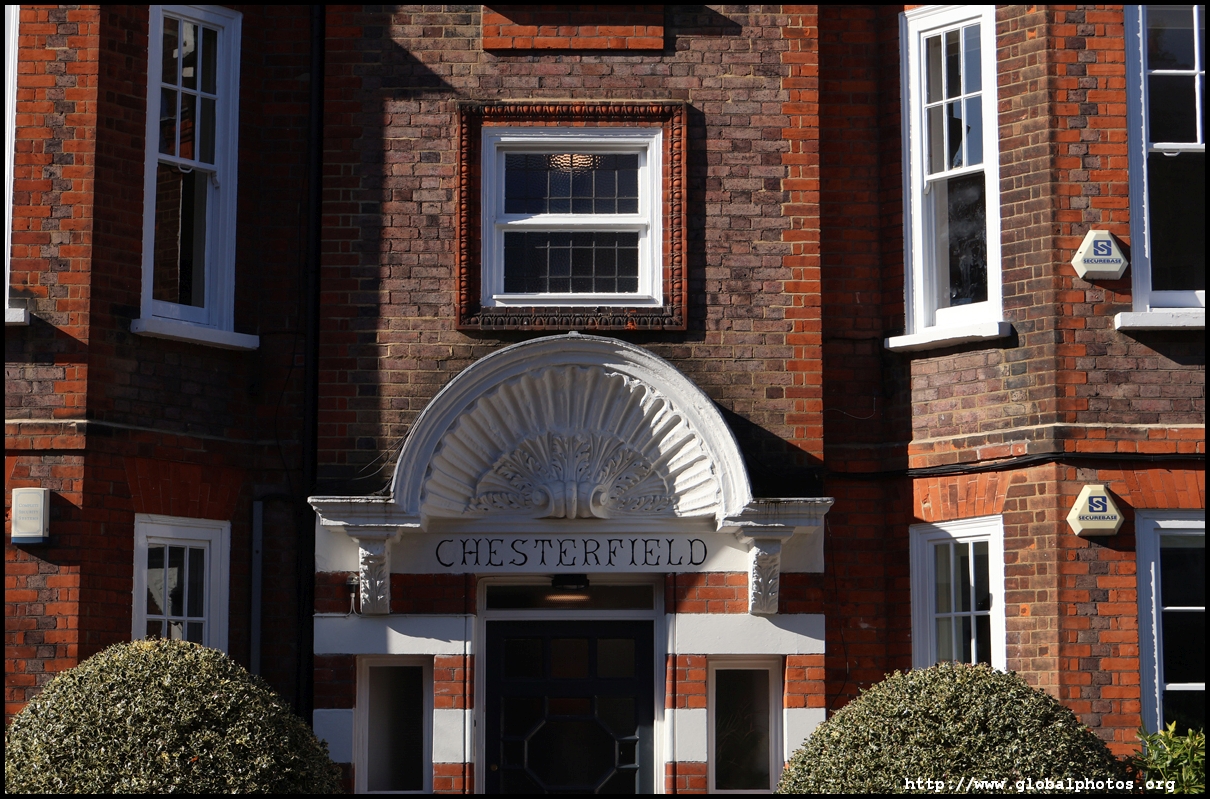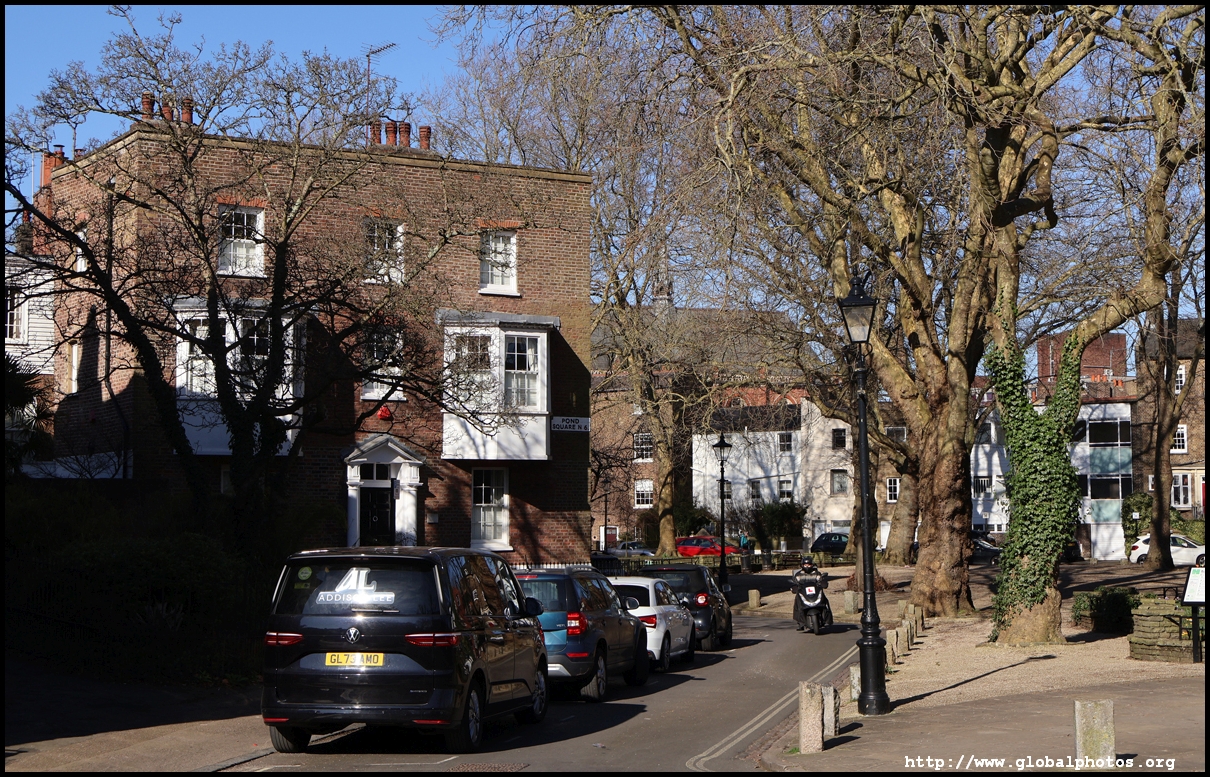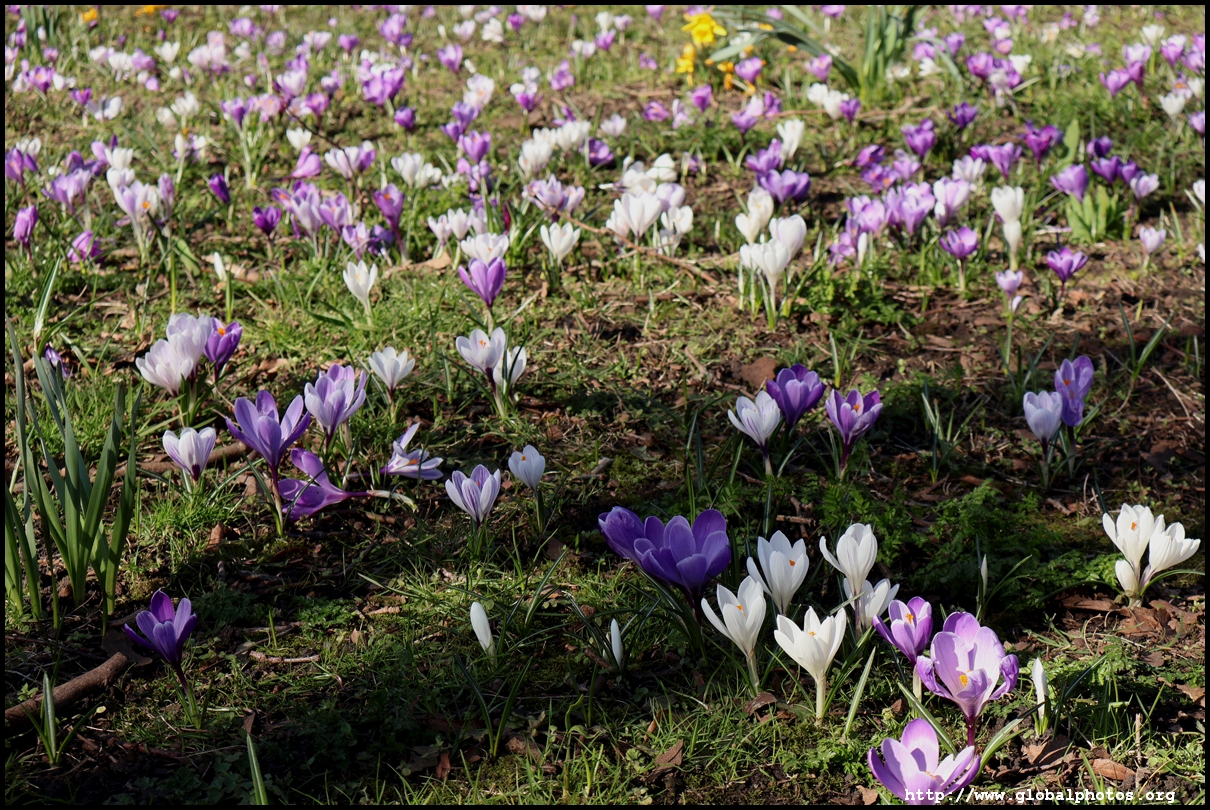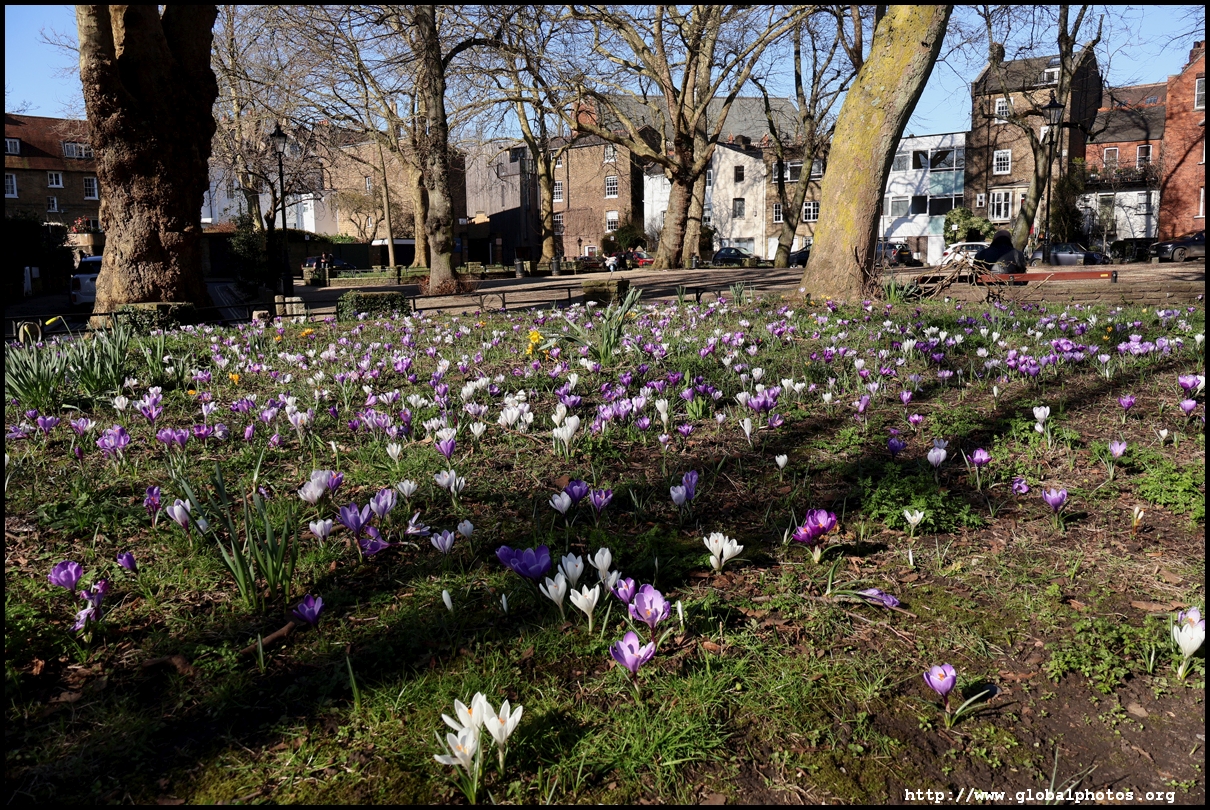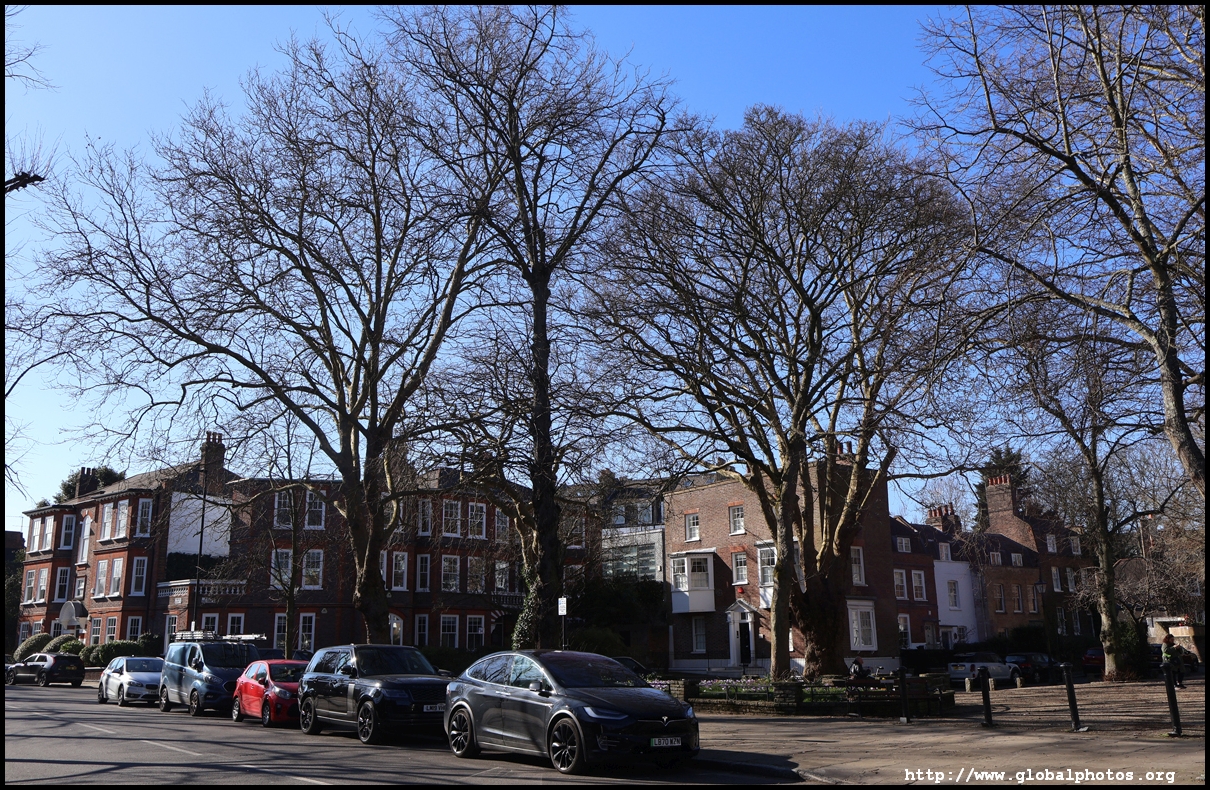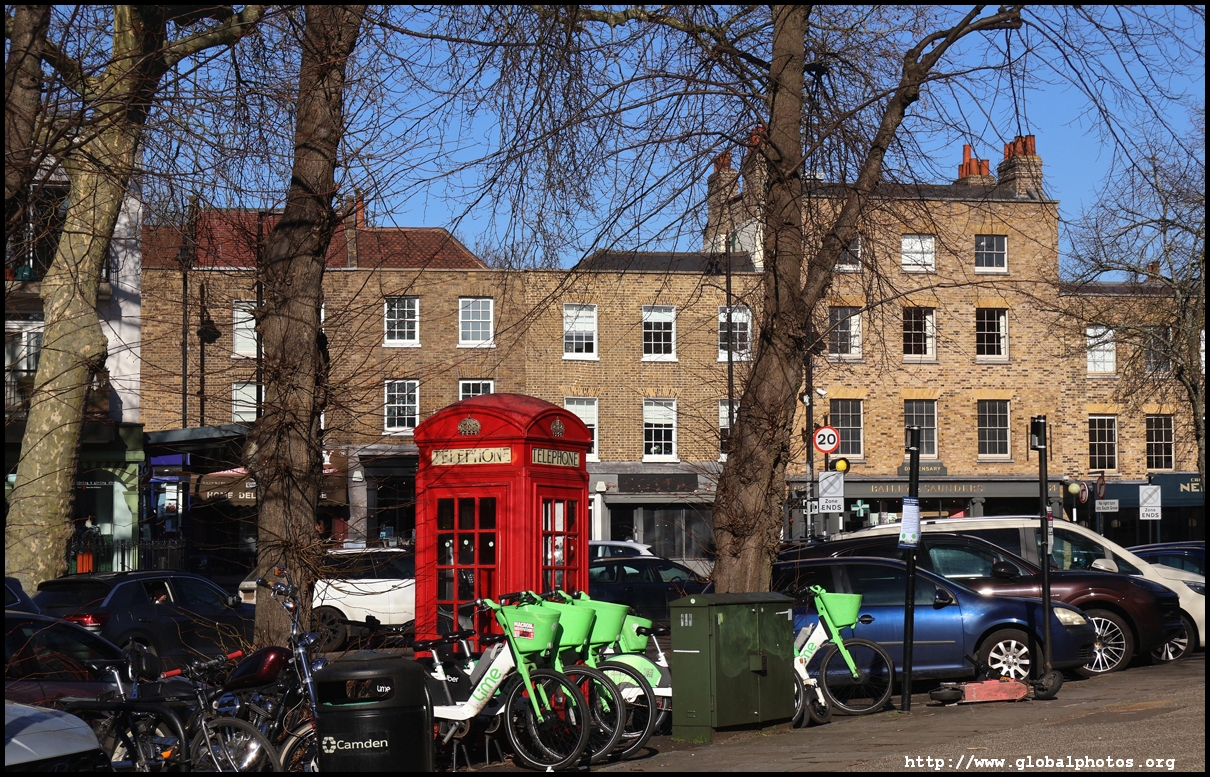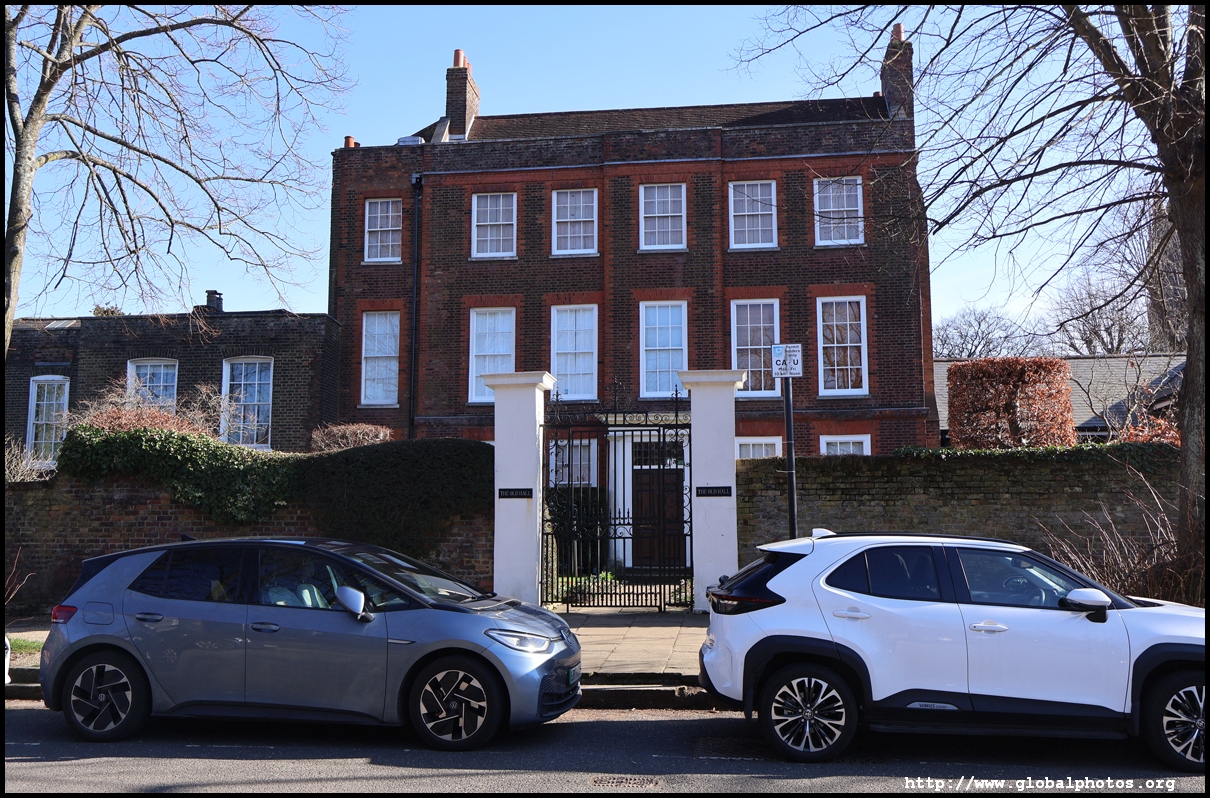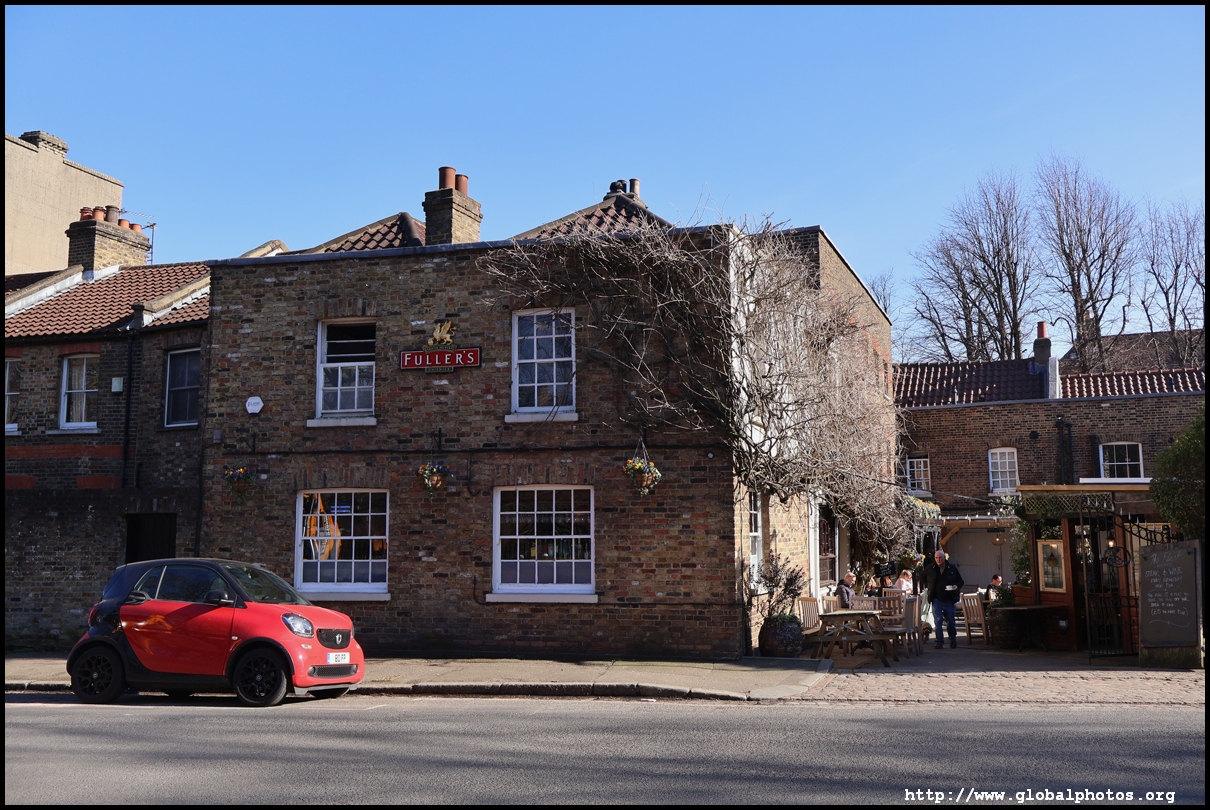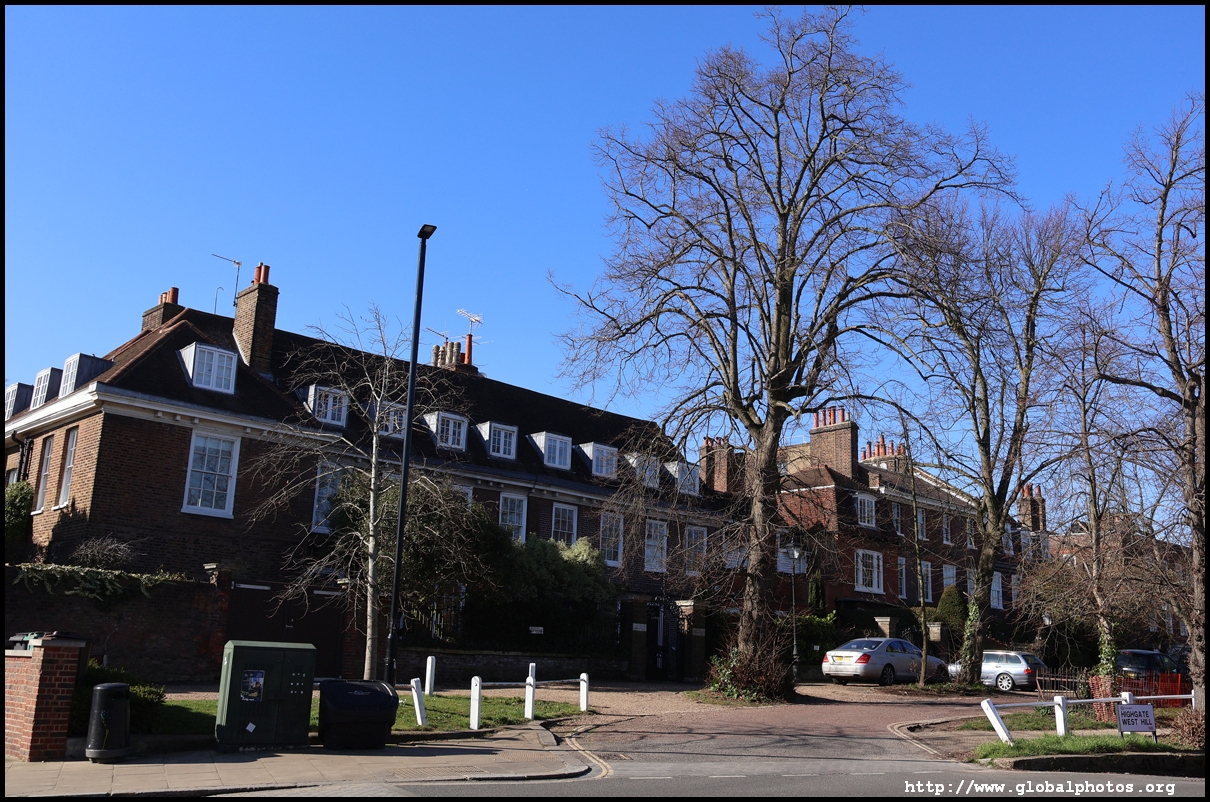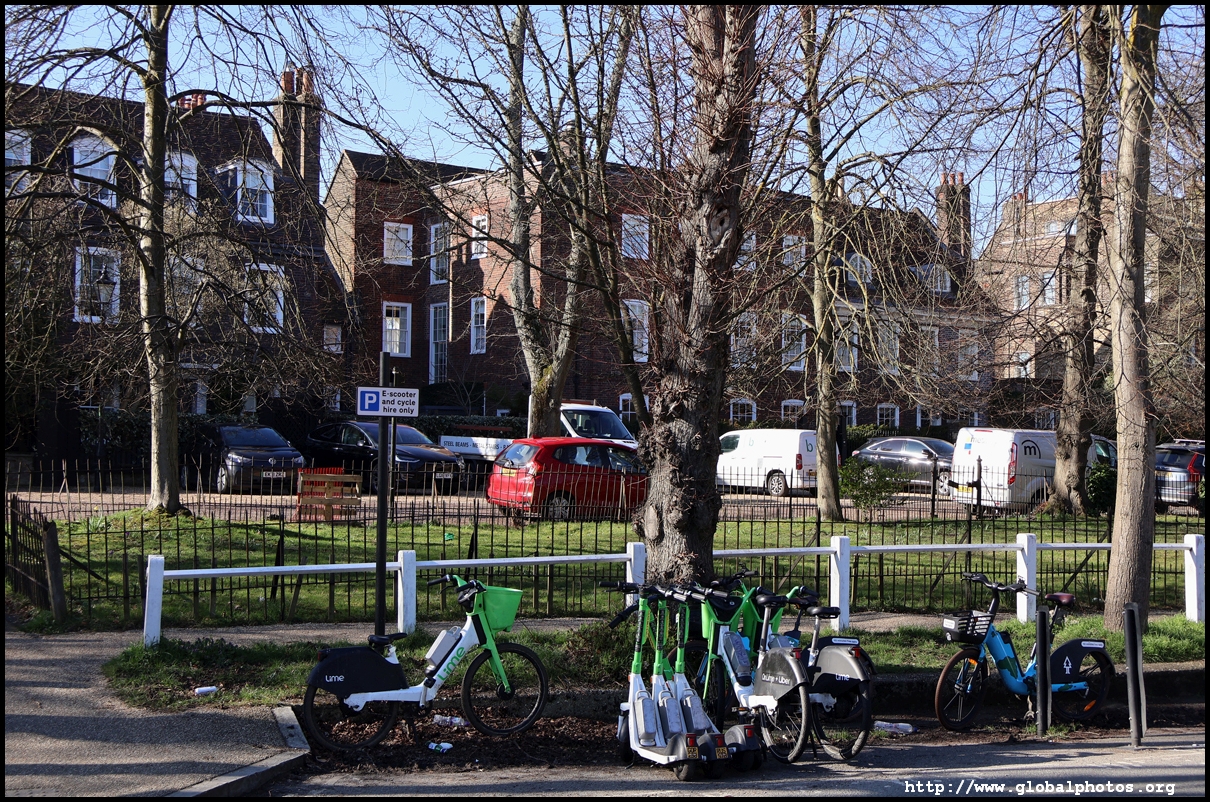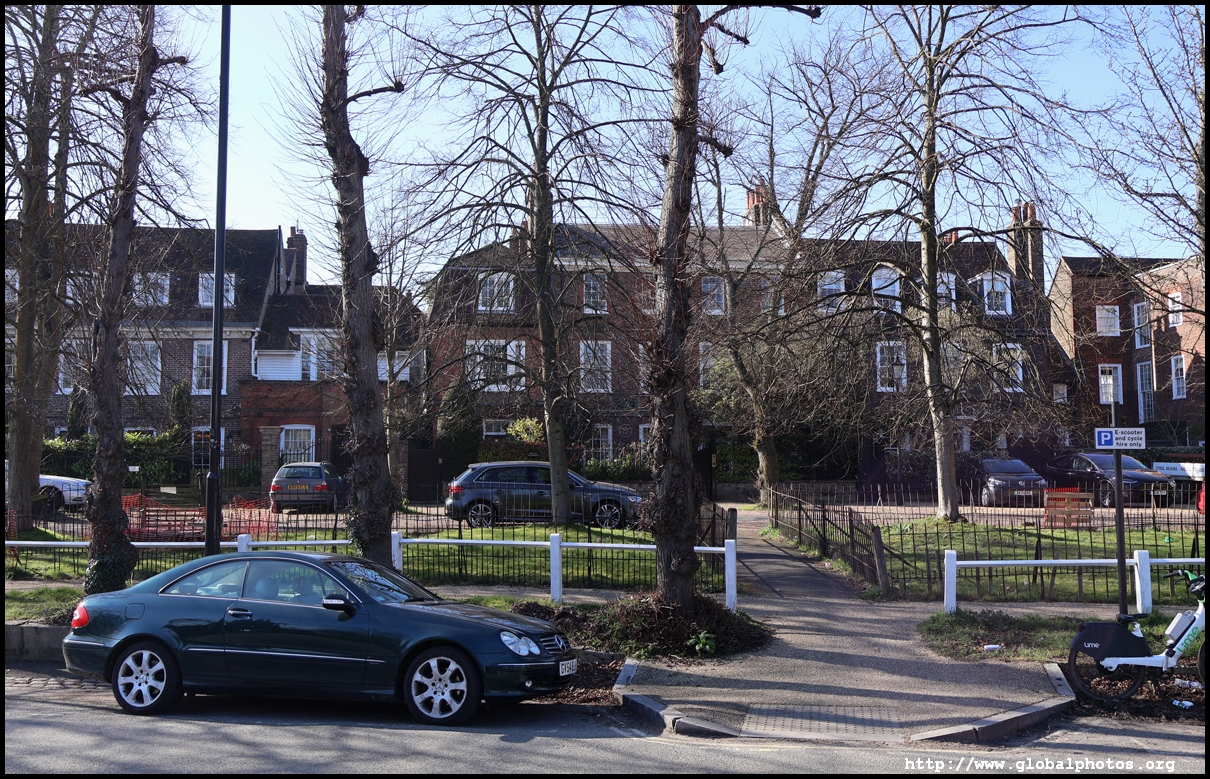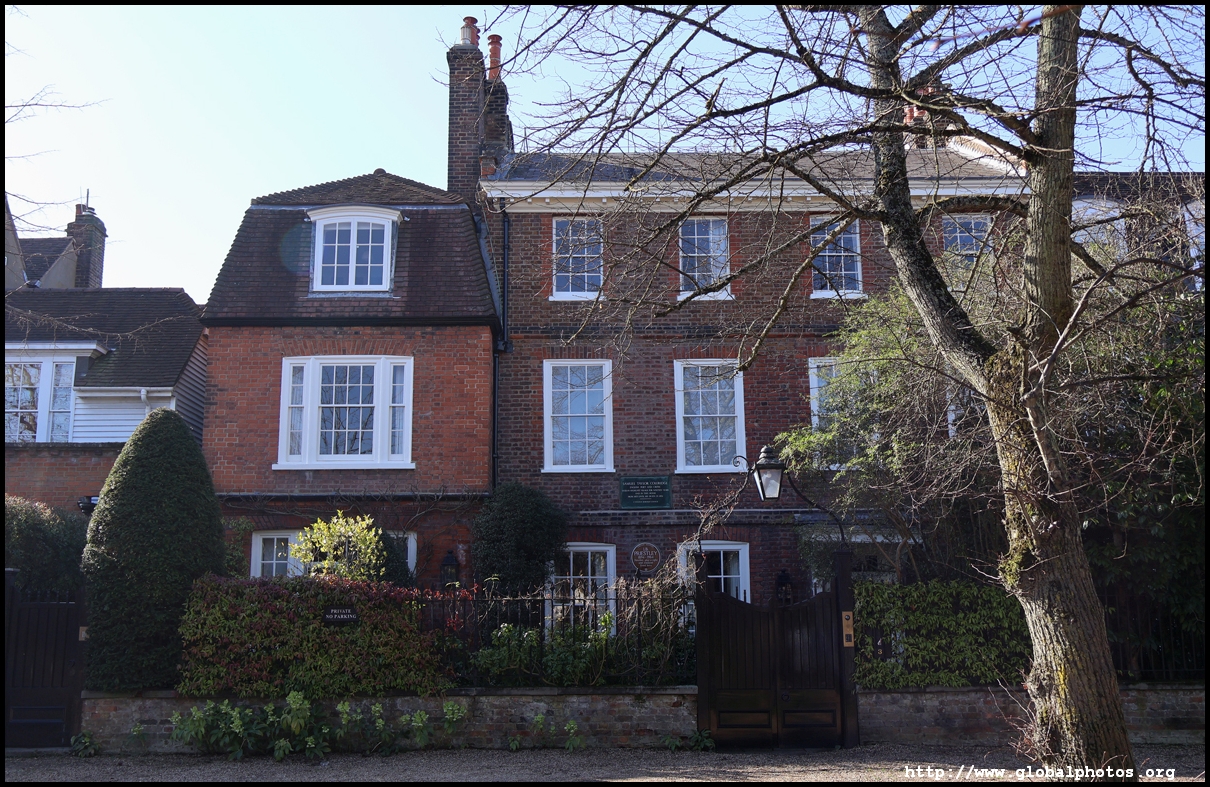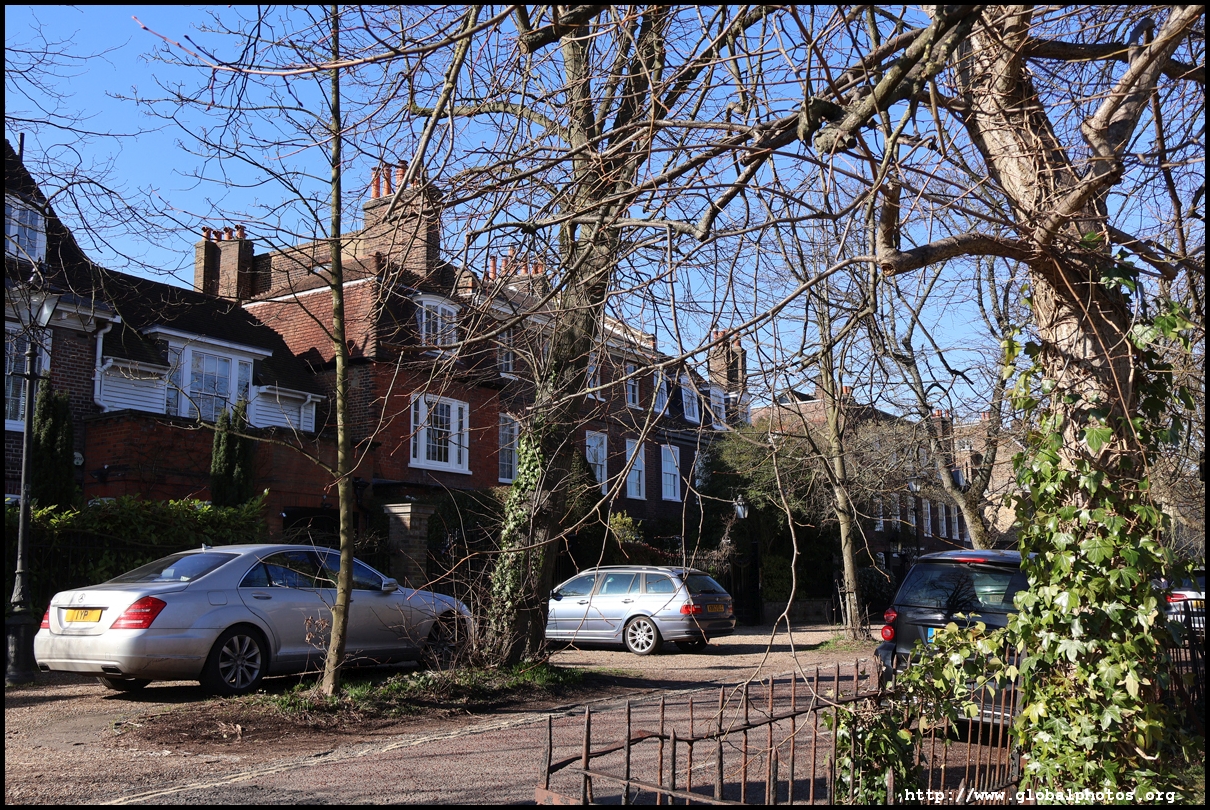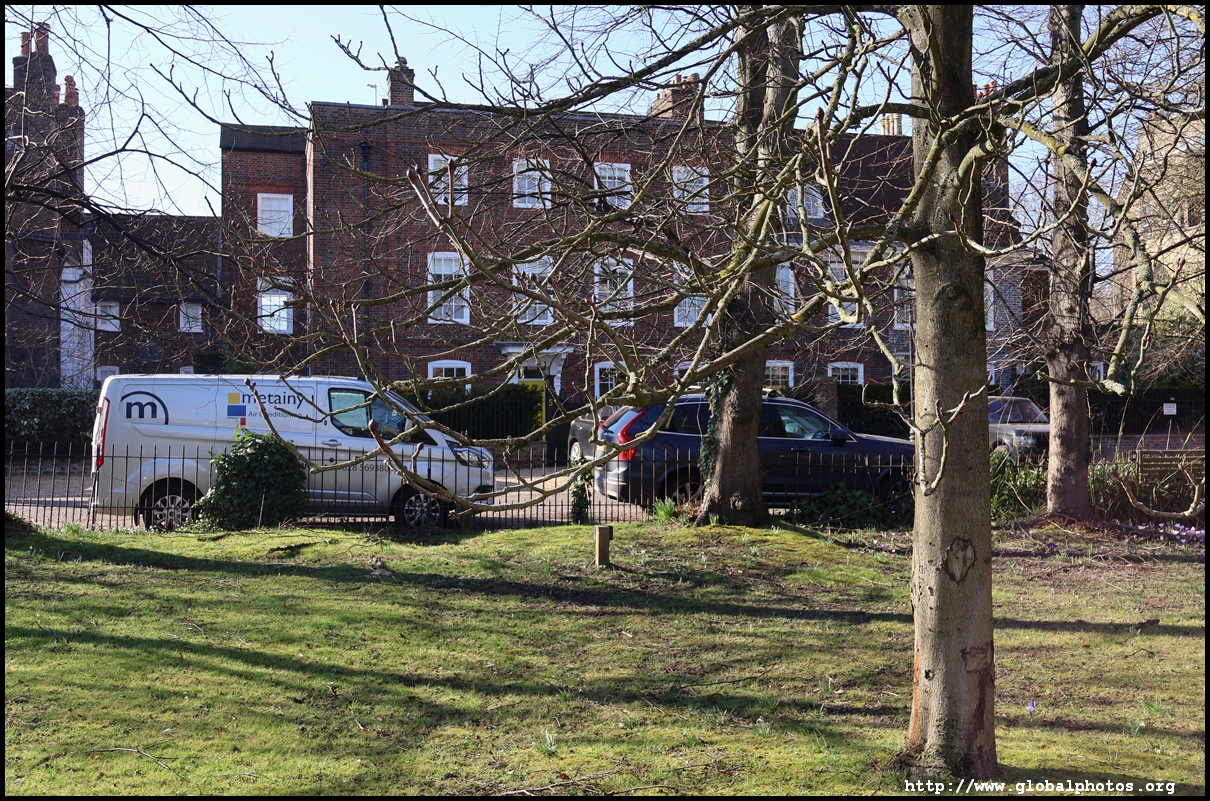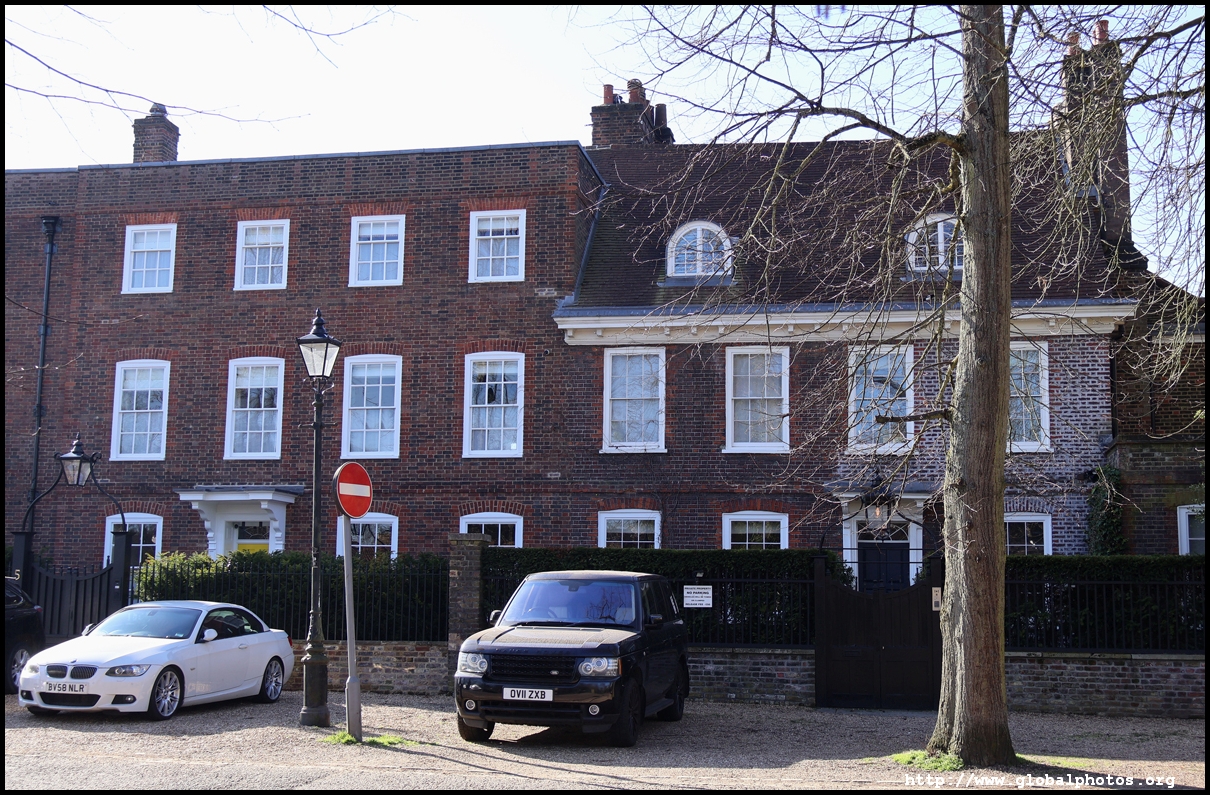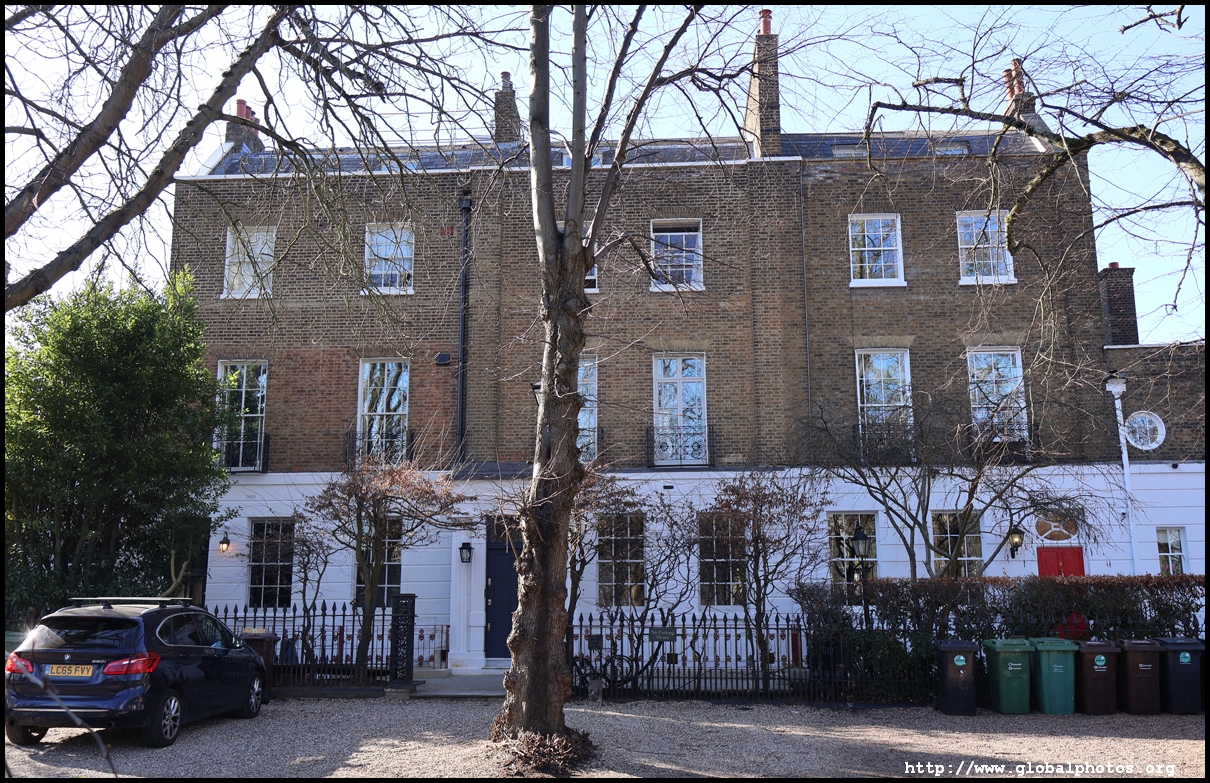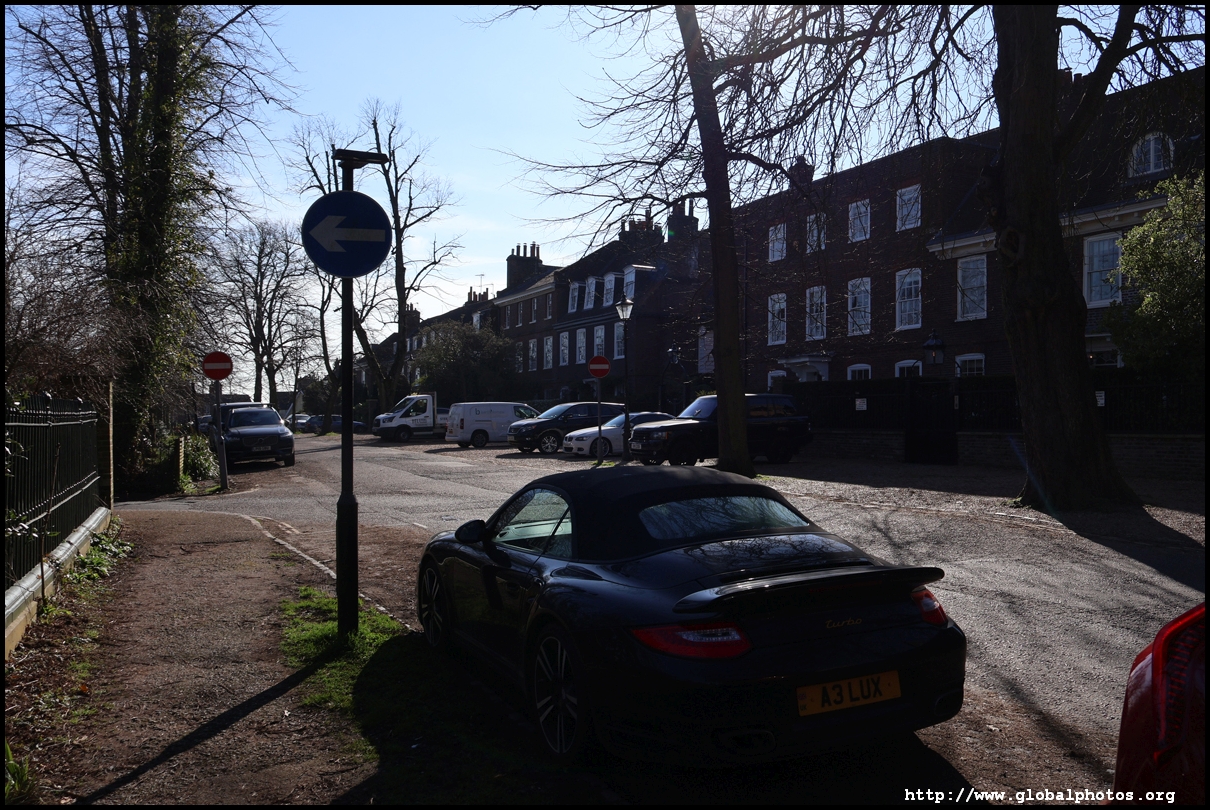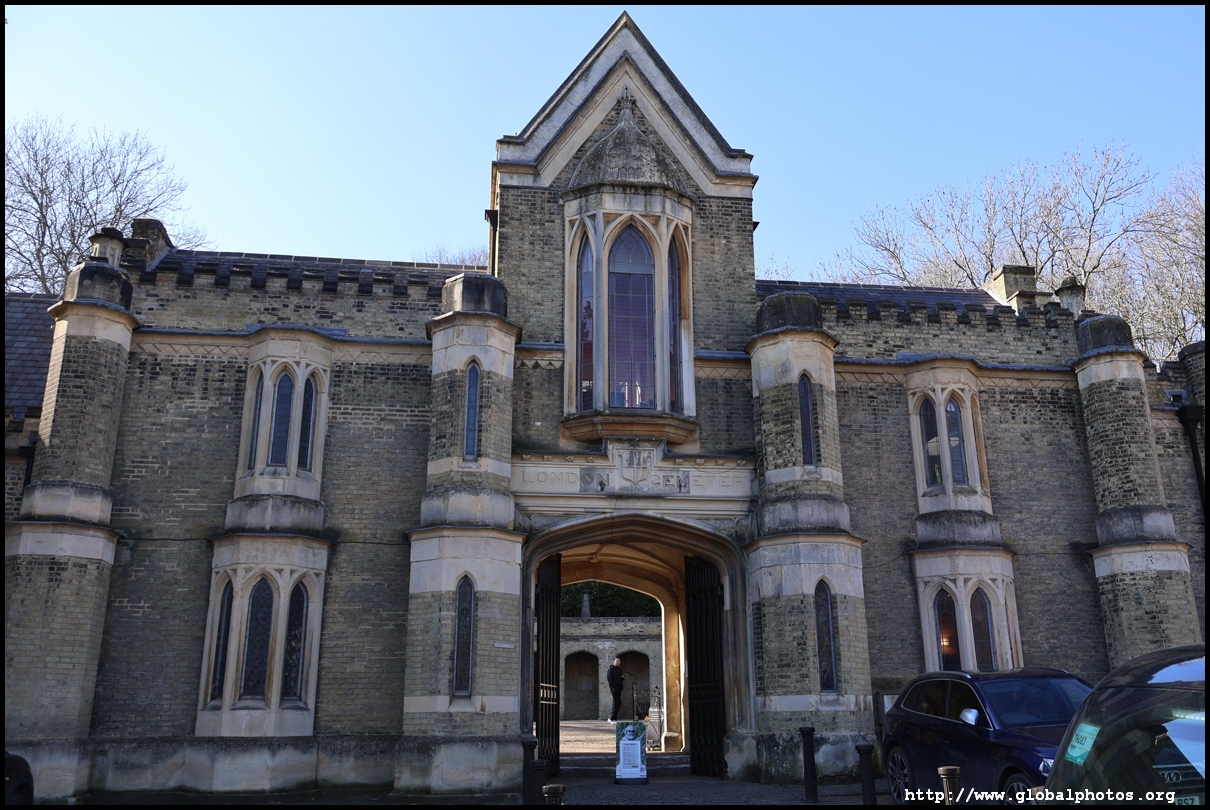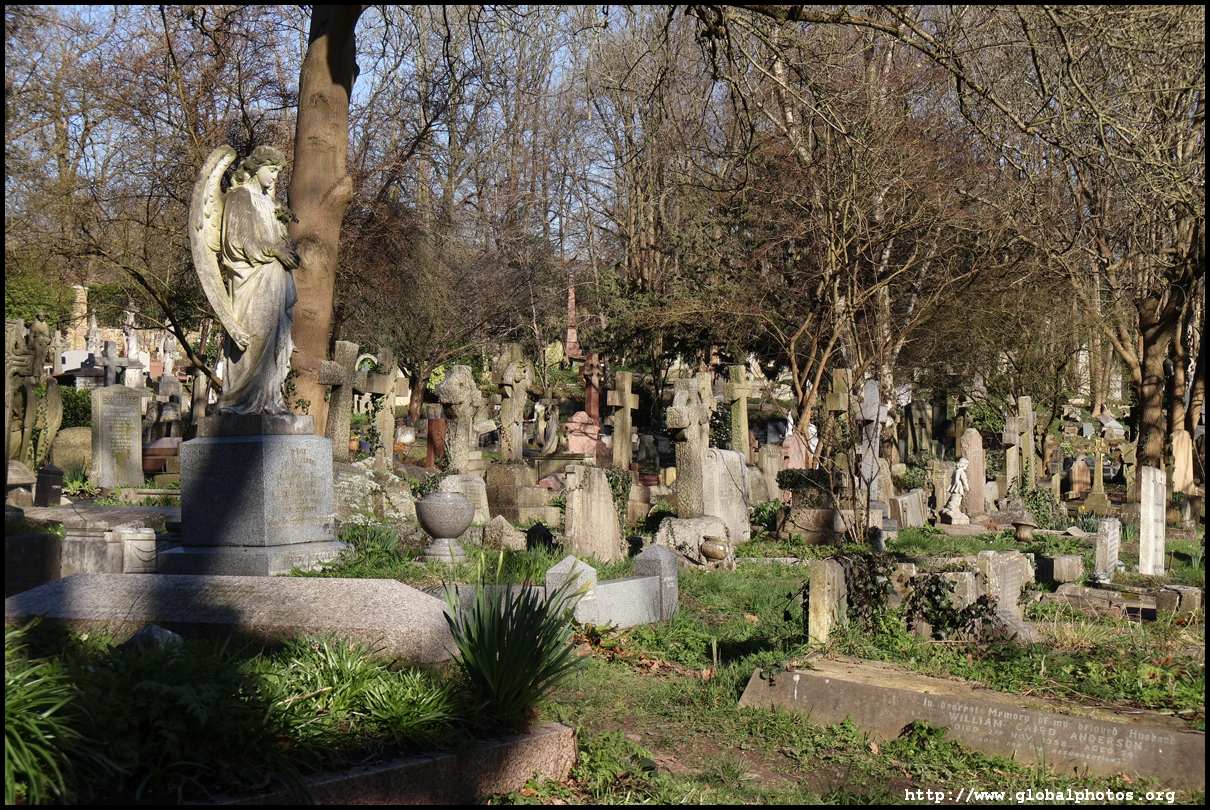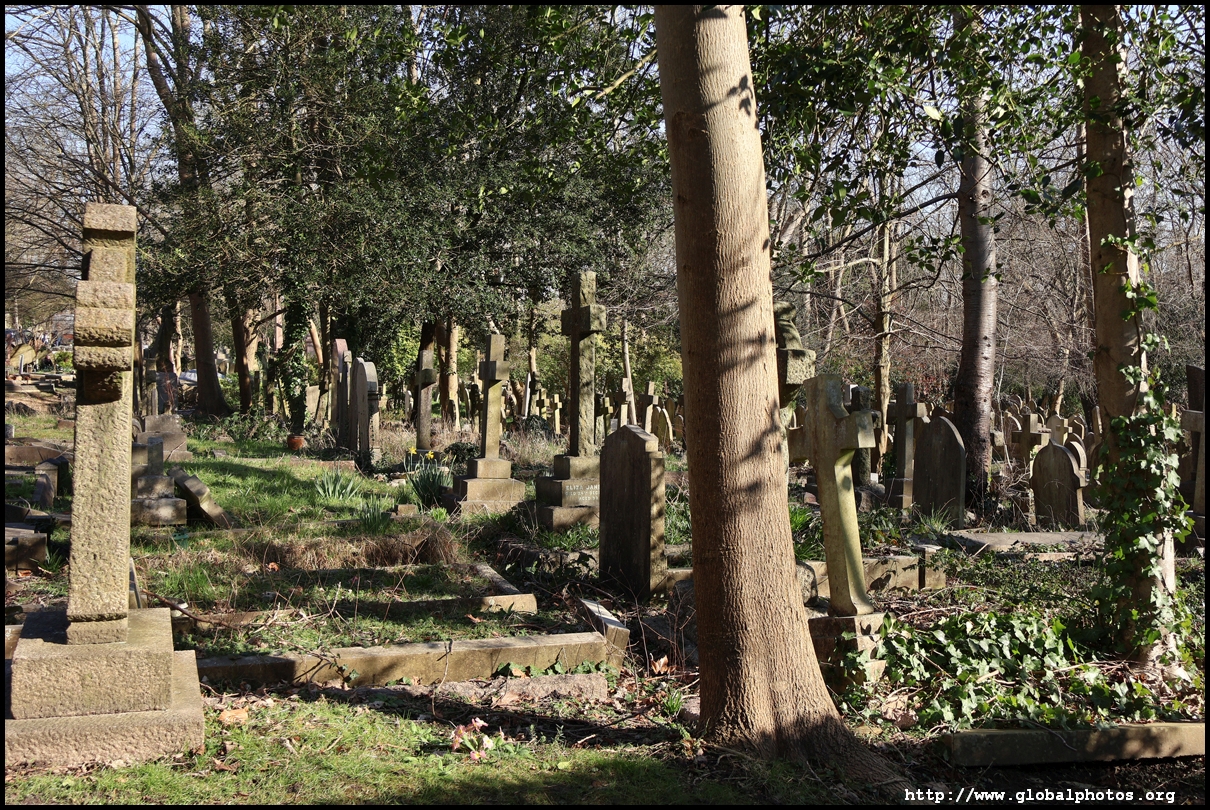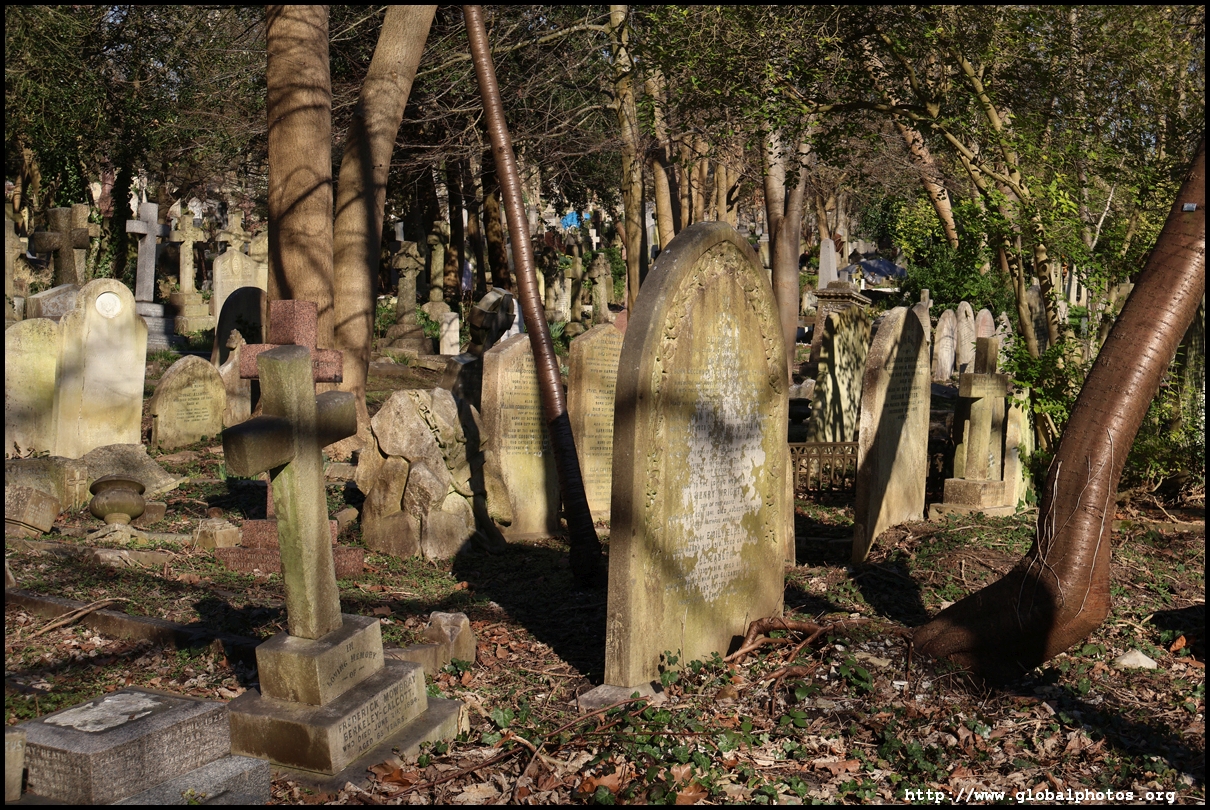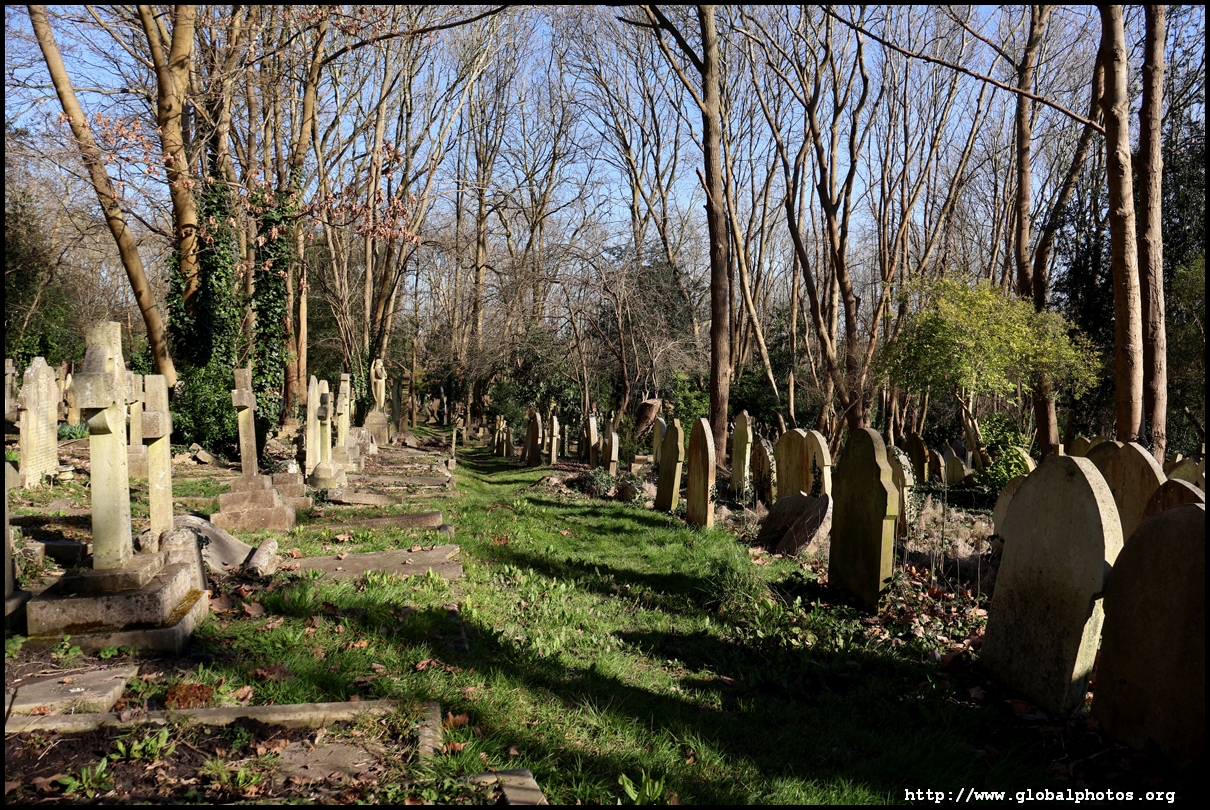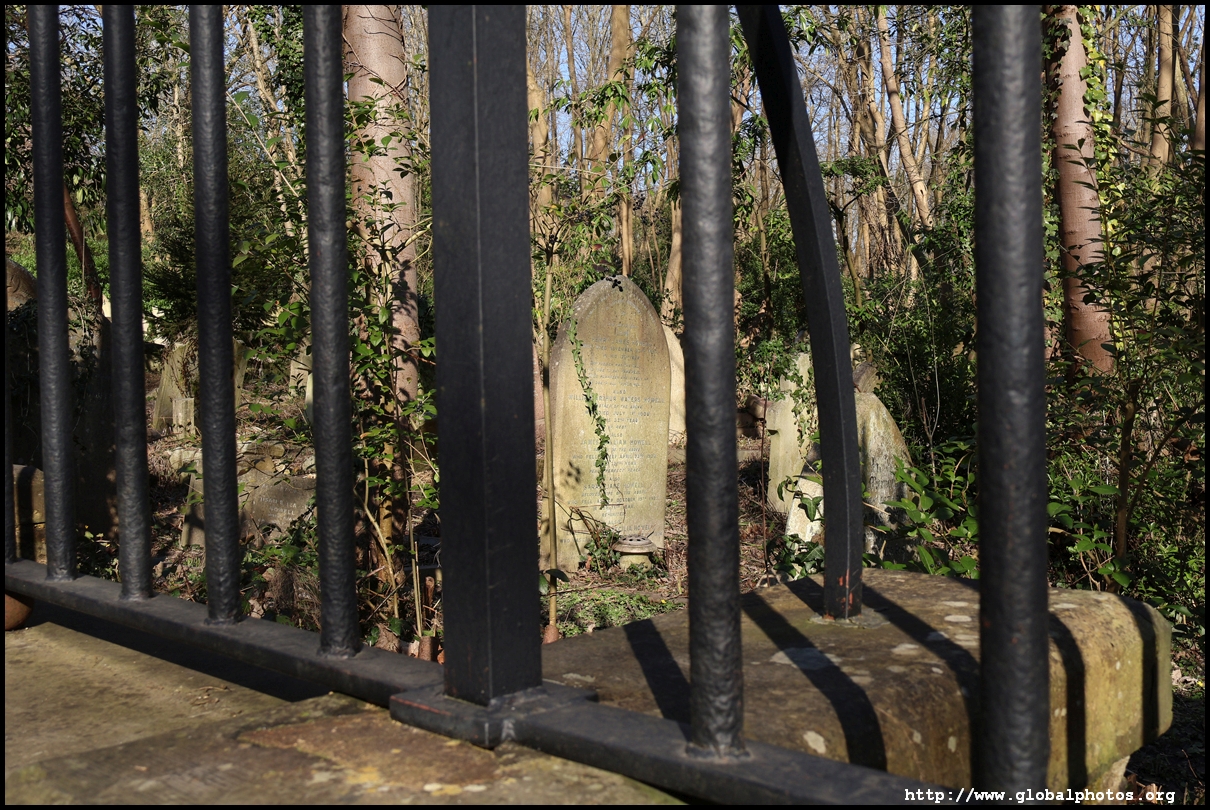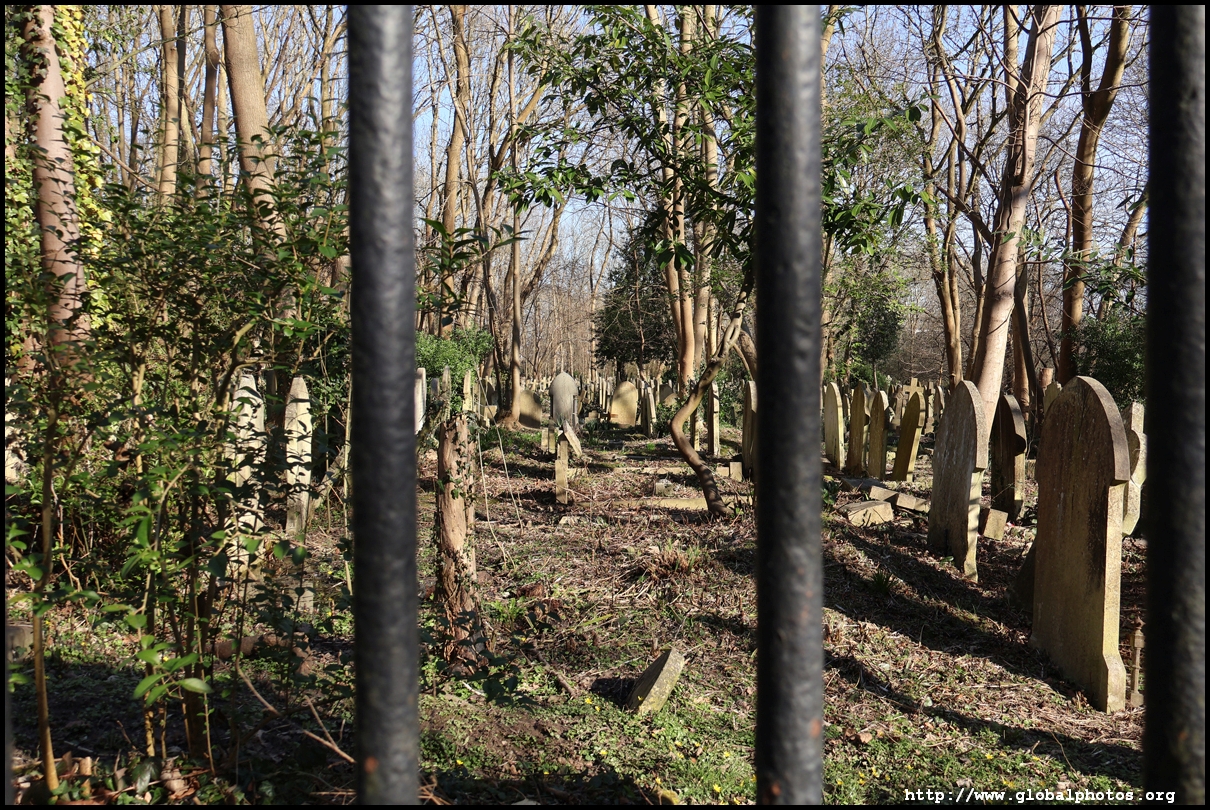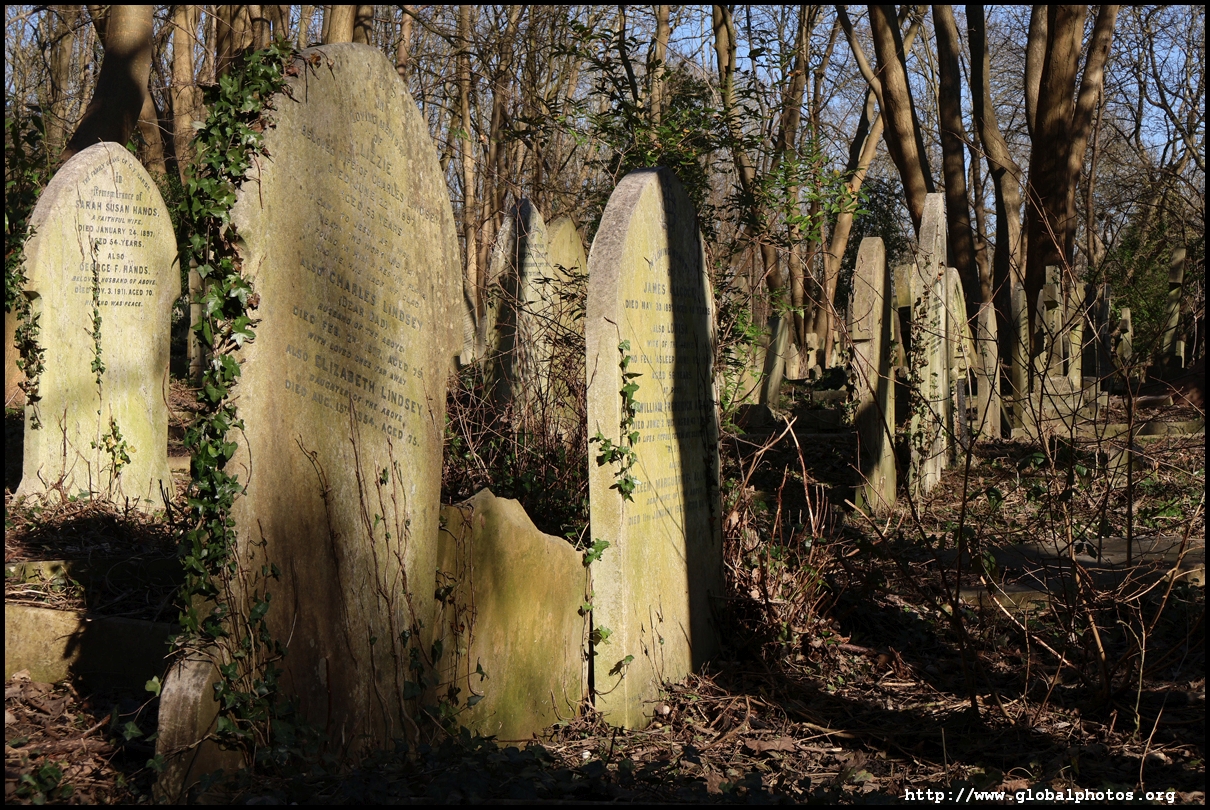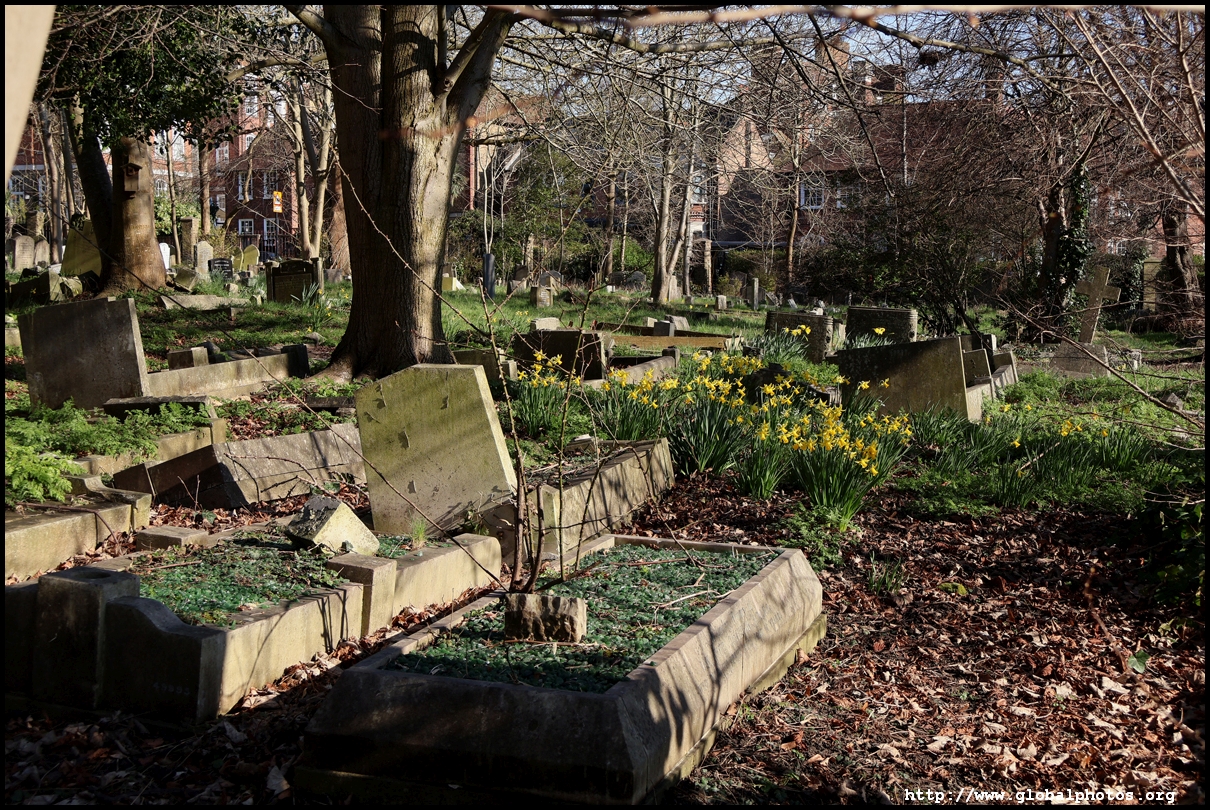London Photo Gallery - Highgate
Located in London's northern reaches near the upscale Hampstead district, Highgate was the last major stopping point to take sheep and cattle into London's Smithfield from the North during the Middle Ages, with London's bishop having installed a tollgate as the road entered his estate. What we see today are picturesque 18th century architecture, a quaint shopping street, and serene residential areas.From Archway Tube station, Highgate Hill ascends a steep slope towards Waterlow Park and the High Street. The former Holborn and Finsbury Union Workhouse Infirmary was built in the late 1870s and housed around 625 beds for male and female patients. In 1998, NHS sold the site to Middlesex University and University College London, and then to Peabody in 2014 and finally SevenCapital in 2021. Rejuvenation is currently under way to repurpose the buildings into mainly residential units. The Whittington Stone is a listed monument from 1821 with the cat sculpture added in 1964. On one section is an inscription about medieval merchant Sir Richard Whittington, who served 3 terms as Lord Mayor of London. The memorial marks the site where Richard's folkloric alter ego heard St. Mary le Bow's bells ring, perhaps a message that he would expect good fortune. I then ventured around the neighbourhood to browse through the nice houses and historic architecture. Lauderdale House was built in 1582 for 2 radical religious members who supported Queen Elizabeth I but undermined her in private, promoting the Puritan cause at a time when Protestantism was the official religion. Next door is Waterlow Park, which stretches across 29 acres with signs of spring flowers sprouting. Construction of the present Roman Catholic Church of St. Joseph began in 1888 and it was consecrated in 1932 after the debt incurrred to build it was finally cleared. At the time, Catholics were still viewed with suspicion so getting a church built here was a challenge in itself. Highgate High Street extends northwards from the park with the typical retail and restaurants found in such areas. The side streets get more interesting though amnidst a very historic setting. Pond Square is named after the 2 ponds created during the Middle Ages when sand and gravel were extracted to pave High Street. It was a rubbish dump until 1864 when the ponds were filled in after becoming a health hazard. The park is home to many London Plane trees, which resisted the city's heavy industrial pollution. South Grove leads to a few more attractions, such as The Old Hall, a mansion built in the late 17th century and is now divided into 3 homes. The Flask public house dates from the early 18th century, named after the flasks of chalybeate water sourced from the Spa Wells opposite. The Grove was one of suburban London's most important early 18th century developments. In front of it is a small grassy area which is what's left of Highgate Green. This park once stretched to High Street but was gradually developed in the 19th century. The Highgate Cemetery was founded in 1839 as part of the city's construction drive amidst a shortage of burial space. Amongst over 170,000 people buried here are famous folks such as Karl Marx, which has made the cemetery a major tourist attraction today. To get in, you either have to join a guided tour for the west side or pay an admission charge to visit the east side on your own.
|
To re-use these photos, please notify me by email : asiaglobe@yahoo.com.hk.

